Happy Nappy poems for you and your baby Page 2
How Greek drama framed 9/11 and later tragedies Page 4
Saving the Canadian salmon from eco-oblivion Page 5
The ghosts that haunt literature Page 6
Can North Korea be rescued—from our errors and its own? Page 8
Inventing new foods and rediscovering old ones Page 9
Paul Murphy and the Good Friday Agreement Page 10
China and the future of investment Page 11
Penelope Hobhouse’s history of gardens Page 12
Why some people need an adrenaline rush Page 14
What are the basics of happiness? Page 15
Neil MacGregor on Poland’s view of Brexit Page 16
Keith Carter’s novel of mining, exploitation and human frailty Page 17
Lonely Planet’s Ultimate UK Travelist Page 18
Trevor Pateman on the prudishness of publishers Page 20
Clive James and his poetic brain Page 21
Patrick Kelly: Love and The Troubles Page 22
Anita Mason on the unravelling of certainty Page 23
 Tianjin (Tientsin) Library, China (2017), by Dutch architects MVRDV.
Photo by Alex Fradkin
Tianjin (Tientsin) Library, China (2017), by Dutch architects MVRDV.
Photo by Alex Fradkin
Subscribe at www.booklaunch.london/subscribe To distribute Booklaunch at your book club or literary festival subs@booklaunch.london To showcase a new book or manuscript book@booklaunch.london To contact us editor@booklaunch.london Issue 5 First Anniversary Edition £3.75 Listen to our authors reading www.booklaunch.london/audio-page Booklaunch Circulation
This issue is free to UK book festivals, libraries, book clubs, publishers, agents and the media UK publishing’s biggest showcase of new titles. Our choice of extracts from the latest books and manuscripts
50,000+
Happy Nappy Phineas Foster
When you were a Bump in my Tummy
When you were a bump in my tummy I didn’t know what you would be. A boy or a girl or a moon-child, A copy of daddy or me.
And now you’re asleep in your cot, my sweet baby I still don’t know what you will be. A tinker, a tailor, a soldier—or A marvelling creature like me.
Hunger
You are the hungriest boy I know The hungriest boy alive. You started your meal at ten to four And now it’s half past five.
What have you done?
What have you done? What have you done? What have you done in your pot?
Poems in which parents address their young children directly are some of the most tender writings we have. They may not aspire to literature in the sense of expressing new ideas in creative language, but that is not their purpose: their purpose is to communicate and reinforce the bond of love. In Happy Nappy, the writer, evidently inspired by A.A. Milne, has mapped some of the most familiar interactions between mother and father and baby, though at an earlier stage of childhood development than Milne’s When We Were Very Young
Phineas Foster is an older father and is often taken to be his own child’s grandfather, particularly when waiting at the school gates at the end of the day. The upside, however, is that he anticipates offering his child a generational haven when she starts rebelling against her parents as a teenager
What have I done? What have I done?
I’ve done a lot lot lot!
Tired Eyes
It’s very late, it’s very dark, I’m tired of counting sheep. I wish that I could shut my eyes I need my beauty sleep.
But every time I get to bed I hear your sorry sob. Oh baby, let me get some rest Or I may lose my job.
Stars in the Sky
Let us look out of the window How many Stars can we see? The Big Bear, the Small Bear, The Pole Star, Andromeda, Baby And Me.
Let us look out of the window How many stars can we see? Joan Crawford, Gene Kelly, Madonna, Jack Nicholson, Baby And Me.
Happy Nappy
What do you do to your milk, my girl, That gives you such a very smelly nappy? It makes me mad But it can’t be bad
And it seems to keep you happy.
What do you do to your milk, my girl, Inside your big fat roly-poly tummy? It can’t be nice But you’ve done it twice. I must have a word with your mummy.
What do you do to your milk, my girl, That causes you to be so very smelly? It’s something odd Ordained by God Deep down inside your belly! Poo!
A Baby is a Lovesome Thing
A baby is a lovesome thing, God wotty.
Especially when seated on the potty. The problem, though, is really rather knotty: How do I get you back into your cotty?
Hungary Babies
Every year
In Hungary
Hungry babies are born. Raised on rye and oats and barley Maize and beet and corn.
Imre Noj (Which rhymes with stodge) Said ‘This is what we do. Open wide—now even wider— Here comes apple stew!’
Cruel Gruel
Baby, Baby, eat your gruel. Don’t you know it’s very cruel After all the care I’ve taken Not to eat your beans and bacon?
Baby, Baby, eat each bite. Don’t you know it’s cooked just right?
You’ll be grateful, wait and see. Do it, Baby, just for me.
Baby, Baby, you can trust Every crumb and every crust. Baby, don’t you know it’s rude Not to eat up all your food?
Baby, Baby, eat each scrap. Don’t drop crumbs into your lap. If you dribble down your bib You’ll go straight back to your crib!
Baby, baby, let’s be friends. I’d so like to make amends. If you eat up ONE more bite You can stay up LATE tonight!
I haven’t heard a Burp
I haven’t heard a burp all evening Although you had your milk an hour ago.
I’d like to hear a burp (A little tiny burp) So you can go to bed and I can go.
I haven’t heard a burp all evening Although you had a bottle and a half.
If I could hear a burp (A little tiny burp) Your father could go off and have a bath.
I haven’t heard a burp all evening
What do I have to do to make it come?
If I could hear a burp (A little tiny burp)
I’d kiss you on your tubby tubby tum.
The Man in the Moon
The man in the moon Is coming soon And what will he say to you?
The sleepy-time train Is late again. All passengers change at Crewe.
Burping on the Stock Exchange
Next year, when I’m one year older If you put me on your shoulder
I’ll say ‘Daddy, put me down. I’ve got deals to close in town.
‘Though I’ve only just been hired, Daddy, you will get me fired. Yes I know my tummy’s fullish But the trading floor is bullish.
‘And although I ate my food, Twelve-month nappies don’t look good.

This is not the time to wind me While I’m trying to read The Indie ‘Gilts have never been so low. Daddy, I will let you know When I need to burp again.
Til that time I’m buying yen.
‘Mummy put me into Shorts For a sum with lots of noughts. As you croon your baby songs I should make the move to Longs.
‘All the time you pat my back There’s a risk I’ll get the sack. Wall Street’s closed up half a tick. Whoops! I think I’ve just been sick.’
The Queen of England
The Queen of England said to me ‘Which of our subjects ought to be The next King of England?’ I said ‘Maybe The next King of England ought to be Baby.’
The Queen said ‘That’s a very good idea.
Here’s the throne of England And twenty pounds a year.’
The Duke of Edinburgh said to me ‘Which of our subjects ought to be The next Duke of Cornwall?’ I said ‘Maybe The next Duke of Cornwall ought to be Baby.’
The Duke said ‘That’s a very good idea.
Here’s the royal duchy And ten pounds a year.’
Princess Diana said to me ‘Which of our subjects ought to be My next kiss and cuddle?’ I said ‘Maybe Your next kiss and cuddle ought to be Baby.’
The Princess said ‘That’s a very good idea.
Here’s a kiss and cuddle To last for a year.’
Early in the Morning
It’s really very early in the morning. The milkman’s not yet loaded up his float.
The postman’s noisy feet Have yet to hit our street. The paperboy’s still putting on his coat.
The overnight D.J. is talking nonsense. John Humphrys hasn’t started getting tough.
But Baby, you’re awake, And what a noise you make!
I’m sure our neighbours must have had enough.
Photo credit: Sergiy Bykhunenko / Shutterstock … continued in the book Subscribe to Booklaunch now! Special autumn offer: 30% off www.booklaunch.london/subscribe
CHILDREN’S POETRY | ISSUE 5 | PAGE 2
Booklaunch literary competition
No.5 “It’s a first”
Set by Maggie Bawden
We’re all bothered by the decline of the book and the migration of the young to other media. But imagine that we did in fact live in an age when there were no books, and no one could remember seeing one. Your government charges you to write the world’s first book—or maybe it’s your own crazy idea. What would the first sentence of that first book be? First sentences, please, to us. Best entries get published; the best of the best get a prize.
Email your suggestions to comp@booklaunch.london, putting Comp5 in the subject line, and supplying your name and full postal address, with postcode, in case you’re one of the worthy winners.
Result: No.4 “Relay Race”
No beating about the bush this time. I asked you to make up a chain of names where one person’s surname stands as the next person’s first name (Upton Sinclair Lewis Carroll Nye Bevan … or, Leslie Stephen King Charles Kingsley …) or the end of one literary work kicks off the start of another (This Side of Paradise Lost Horizon …) and I offered a prize for the longest chain.
I’m not going to waste time on the also-rans (sorry, Also-Rans) because one entry stood head and shoulders above the rest—actually, head, shoulders, torso and thighs. Huge congratulations, then, and a fabulous Booklaunch T-shirt to Hazel Shaw from Trowbridge for the following tour de force. Admittedly Hazel cheats a couple of times, but even the gods may stoop to conquer; the rest of us can only bow our heads in admiration:
Cities of the Plain Tales from the Hills and the Sea Hawk in the Rain Forest of the Night and Day of the Dog So Small Back Room with a View from the Bridge of Lost Desire and Pursuit of the Whole of the Story Girl in Winter Words Without Music and Silence of History of the World and his Wife of Bath Comedy of Masks of Time of My Life at the Top Girls on the Run River of Stars in my Pocket Like Grains of Sand[s] of Time to Weep Before God[s] Little Acre of Land of Green Ginger Man who Loved Children[s] Hour Glass Lake Wobegon Days Without End of the Affair …
Readers’ letters
What else we do when we’re working
Lynn Pettinger’s survey of contemporary industrial conditions (What’s Wrong with Work?, Issue 4, page 8) is a welcome corrective to workplace sociology. Academics too often apply theoretical frameworks to obsolete conditions or fail to locate work in a theoretical framework, preferring anecdotal vignettes. Pettinger adeptly avoids both pitfalls, presenting instead a useful critique for the digital age. There remains, of course, the challenging question: for how much longer will there be any work for anyone to do? Politicians need to grasp this, and ask about the condition of the non-workplace, in the wealthy West as AI takes over, but also in the world’s most distressed regions.
Randeep Mathur, Northampton
Change—for better, for worse
Susan and Peter Barrett’s reminiscences of their time in Greece (The Garden of the Grandfather, Issue 4, page 7) reminded me of my own happy travels in the 60s. So many communities then lived without electricity, telephone lines or indoor plumbing. Change since then has been profound and sudden.
This has allowed the developing world to believe that hyper-modernity equals Westernisation, fuelling both hostility and emulation. Both add dangerously to political tensions and the carbon footprint. The fact is, technological advances are something we all have to grapple with or they will bring us all down.
Penny Hancock, Penrith
Were we ever nice?
Peta Tait’s history of travelling menageries (Fighting Nature, Issue 4, page 13) is timely in the year when they have finally been outlawed in the UK. I confess to have thrilled, as a child, at glimpses of lions and tigers as circus convoys drove through our town but always cringed at the crack of the ringmaster’s whip that brought elephants onto their hind legs. How odd that it took us so long to recognise circus behaviour, and our complicity in it, as abusive.
Glyn Blackstone, Wellingborough
Introducing our website: www.booklaunch.london
Booklaunch is a website, not just a magazine. Everything on our home page is clickable. Click Audio Page to listen to authors reading from their featured books. Click Issue 1, 2, 3 or 4 or Our Pages to read earlier editions. Click Shop Online to buy our books and any others. Click Publishers to find out how to showcase your new book. Click Festivals to stock Booklaunch at your literary festival. Click Subscribe to subscribe. Click everything!

First anniversary edition
Phineas Foster’s Happy Nappy poems on the facing page remind us that Booklaunch is still in its infancy, but how we have grown since we first appeared a year ago! We now distribute upwards of 50,000 copies around the UK and have showcased 90 books, with 16 unpublished manuscripts and another 62 small ads.
We have reached visitors at 24 literary festivals as well as countless book clubs, reading groups and libraries, not to mention our own subscribers. UK subscribers to the Spectator, New Statesman, Times Literary Supplement, London Review of Books and Church Times have all also received at least one free copy of our publication.
Because we believe in printed books, we are absolutely committed—in the face of all financial logic—to bringing out a print magazine, but our website has rapidly become an essential addition (see below left). Most importantly, you can now hear many of our authors reading from their books if you click the Audio Page option on our home page—and this feature will grow in the coming year. In addition, all the books we showcase can be bought at our online shop, with delivery carried out for us by Blackwell, the bookshop chain with outlets in many university towns. (From October, Blackwell will also be giving away free copies of Booklaunch in its Oxford stores.)
We have been able to halve our advertising rate, and during the summer we have run a half-price subscription offer of just £9.99. We have started offering publishers up to three thumbnails of other books on each page and have begun taking non-book-related ads on our back page (see this issue).
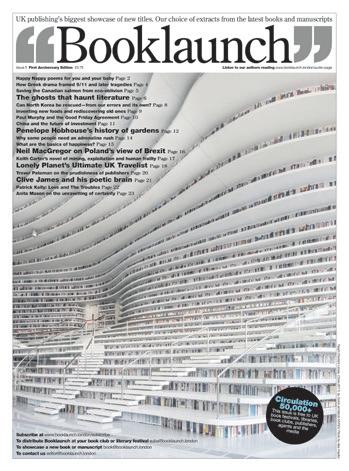
Authors have promoted their unpublished books on our “Looking for a Publisher” pages, and this is an area we want to develop further. We are particularly interested in working with freelance literary agents to bring authors to publication, and would welcome inquiries.
In short, we have made amazing progress in the 12 months that we have been in existence, and we hope to grow more. We like the idea of remaining a freesheet, though we have to charge for copies posted direct to your door. But there are ways round this. If you can bring us five other subscribers, we will reward you with a free year’s subscription—and if you undertake to deliver copies to your local book festival, reading group or library, you are welcome to snag one for yourself. We welcome hearing from you with feedback about Booklaunch, as well as your thoughts about any of the books we carry, for publication in our new Letters column. We also welcome your participation in our brilliant literary competitions—currently the only way of gaining one of our prized Booklaunch T-shirts!
To all our readers, authors and publishers: thank you for your interest in us thus far, and we look forward to your continued company as we enter our second year.
Stephen Games, Editor and
publisher
Booklaunch is a project of New Premises Ltd
12 Wellfield Avenue, London N10 2EA
Website www.booklaunch.london
Publisher/editor Dr Stephen Games editor@booklaunch.london
Design director Jamie Trounce jamie@jamietronce.co.uk
Assistant editor Samuel Warshaw book@booklaunch.london
Advertising manager Jenny Chalcott ads@booklaunch.london
Competitions editor Maggie Bawden comp@booklaunch.london
Distrubition Robin Clarke (West of England), Alex De Lusignan (East Anglia), Patti Cust (Derbyshire)
Printer Mortons Media Group Ltd, Horncastle, Lincolnshire LN9 6JR Subscriptions subs@booklaunch.london UK £19.99/Overseas £25.99
Welcome to Booklaunch Subscribe to Booklaunch now! Special autumn offer: 30% off www.booklaunch.london/subscribe AUTUMN 2019 | ISSUE 5 | PAGE 3
Tragedy Since 9/11

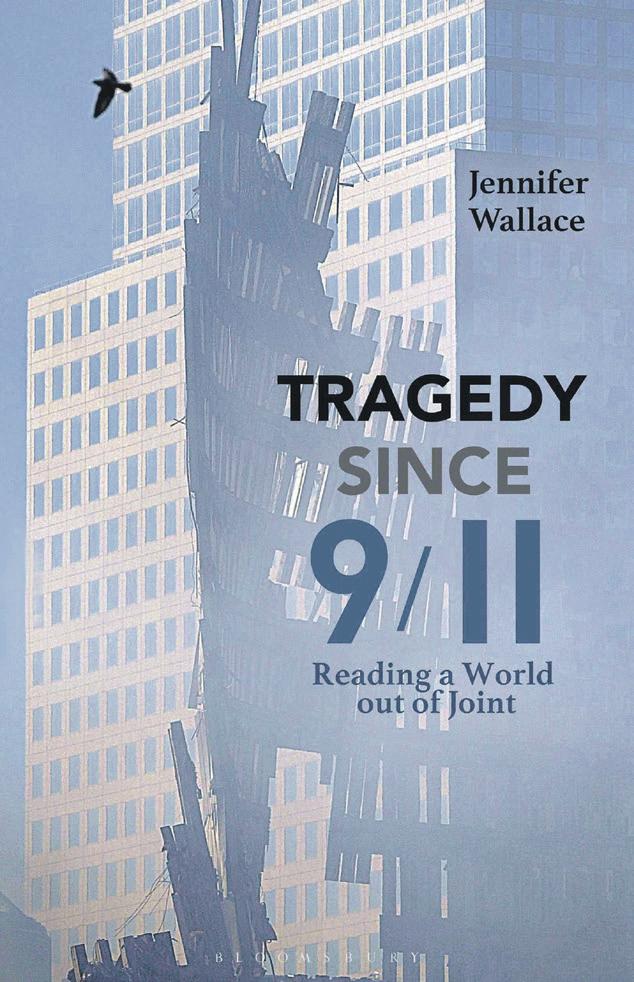
Jennifer Wallace
Reading a World out of Joint Bloomsbury (London), 240pp, Softback, 9781350035621, 138mm x 216mm, September 2019, RRP £18.99
How do we understand tragedy? How do we talk about it? In her wide–ranging study, Jennifer Wallace looks at how our reactions to the downing of the Twin Towers and to subsequent traumas correspond to the dramatic structures and language formulated by Homer, Aeschylus, Sophocles and Euripides in the ancient world and to Shakespeare, Ibsen, Beckett and others more recently
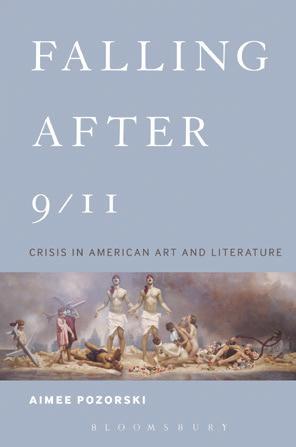
Jennifer Wallace studied Classics and English, and has been Senior Lecturer and Director of Studies in English at Peterhouse, Cambridge since 1995, as well as an affiliated lecturer in the Faculty of English. She has served on the jury of the annual London Hellenic Prize since 2010 and has organised four international conferences on the performance of Greek tragedy. She runs the Peterhouse Theory Group, writes extensively and lectures all over the world
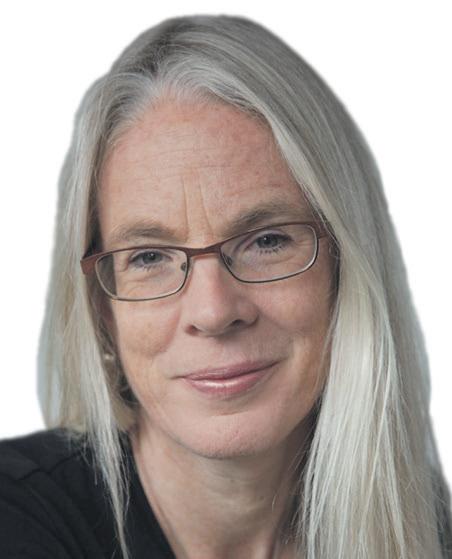
To
On 11 September 2004, waking up to a hot, latesummer Saturday morning in New York City, I caught the subway down to Chambers Street for the annual commemoration of the 9/11 terrorist atrocity. The hallowed site of Ground Zero, where once the two great towers of the World Trade Center had soared, had by this date been completely cleared of the rubble of the past. The diggers had reached bedrock, the hard, grey granite on which Manhattan was founded. But in 2004, the massive new construction which now dominates downtown had not yet begun. Instead, Ground Zero was a huge pit, ringed by a high-wire mesh fence on which pilgrims and tourists had attached flowers, tributes and messages over the years.
When I arrived at the site that September morning, it was already thronging with people peering through the wire squares of the fence at the city dignitaries, the firefighters and the families of the victims gathered beneath the stars-and stripes in the pit below us. Mayor Bloomberg spoke over the loudspeaker. A minute’s silence was observed by the whole arena to mark the moment the first plane hit the North Tower at 8.46 am. Governor George Pataki quoted President Eisenhower: ‘There’s no tragedy in life like the death of a child.’ Rudolf Giuliani, the former mayor, read out a letter from Abraham Lincoln, comforting a mother whose sons had been killed in the civil war. Another minute of silence to mark the moment the second plane hit the other tower at 9.03 am. A lone trumpet struck up the Last Post. And then the voices of bereaved parents and grandparents began to read out the names of the dead in alphabetical order, the sound echoing against the empty shells of buildings behind us and the rock below—Gordon A. Aamoth, Jr. Edelmiro Abad. Marie Rose Abad.
Later that evening, I made my way down to the Hudson River for the alternative 9/11 ceremony. Gathering at a pier on the west side of the city, and looking across at the beam of light shooting into the sky where the World Trade Center once loomed, the informal group lit paper lanterns, in the traditional Japanese toro nagashi fashion, and set them on the water to float away down the river in the sunset and out to the open water, past the Statue of Liberty, past Staten Island. Different family members of those who had died in the September 11 attacks made speeches and offered prayers. ‘I want to remember all those who died on 9/11,’ said the brother of one woman who had died three years earlier. ‘But I also want to remember all those who have died since in the name of 9/11.’ This was 2004. The Taliban had been toppled and much of Afghanistan flattened. Saddam Hussein had been captured. Civil war was beginning, with hundreds of Iraqi civilians and police being killed by Sunni-led bombings. The first battle of Fallujah had erupted a few months earlier. And American abuse of Iraqi prisoners in Abu Ghraib had recently been exposed by the publication of a few photographs.
These two ceremonies to remember the dead were both versions of tragic ritual. Like tragic performances there were some principal ‘officiants’ reading the names, making the speeches, throwing the paper lanterns out into the Hudson—and of course there were the ‘heroes’ whom we were remembering and lamenting—but the rituals were participatory, designed to draw the mourners and the city together. The whole crowd held the minute’s silence with the city mayor or joined together in reflective memory by the water’s edge. Yet in other respects, these two ceremonies were in marked contrast. The first focused entirely on the American lives lost in New York City three years earlier. The second ceremony looked outward and was prepared to acknowledge that the events on September 11, 2001, had not ended neatly on that date. A parallel was being drawn between ‘us’ in New York and ‘them’ in Afghanistan or Iraq, those ‘who had died in the name of 9/11’. As the lanterns floated out in the Hudson, traditional boundaries were being questioned.
These two responses to the catastrophe three years earlier strikingly mirrored the stark choice facing the American people that Rowan Williams had articulated so presciently in the aftermath of the attack. He himself had been there on the morning of September 11, 2001. As American Airlines Flight 11 was crashing into the North Tower, the clergy of Trinity Church in Wall Street were sitting down just a few blocks away with invited guests to record a discussion about religious practice and belief.
They were ‘interrupted’, said Rowan Williams, the future Archbishop of Canterbury and head of the worldwide Anglican Communion, by terrorists driven by their own version of religious belief. Williams joined everyone else in the area stumbling out of the building in a thick dust of burning ash. There were shouts, sirens, the ‘indescribable long roar of the second tower collapsing’. What he remembered particularly, however, was his lack of feeling, or even as he put it living ‘in the presence of the void’.
Reflecting on the event a few weeks later, Rowan Williams attempted to do justice to this void, to write about its challenges, its potential and its temptations. There were, he said, two courses of action for the American people and indeed everyone around the world who were shocked and still grieving. One option was to use the initial passionate and understandable anger about the injury done to us and turn it into a violent response, continually fuelling the rage with recollections of the attack. In effect, this would mean seeking revenge, acting quickly for the sake of being seen to do something and bombing the enemy in return. The other option was to pause and reflect, to think about our own vulnerability and that of others, to learn a radical and risky compassion. ‘The trauma … is not just a nightmarish insult to us but a door into the suffering of countless other innocents’, wrote Williams. His pamphlet professed to offer ‘hope that risk and reconciliation are a new and living way to avoid the relentless spiral downward to more and worse aggression’.
The war of choice
Tragic narratives of revenge usually begin with a choice. To avenge or not to avenge? To seek to impose rightful punishment or to keep quiet and turn the other cheek? But revenge tragedies mostly operate as if in fact there is no choice, as if everything compels the protagonist to one course of action. At the beginning of the Trojan War, Agamemnon, leader of the Greek army, is presented with a terrible decision. The goddess Artemis is angry with him and is preventing the wind from blowing and thus the ships from sailing over to Troy. She can only be appeased by the sacrifice of Agamemnon’s daughter, Iphigenia. When Agamemnon hears this injunction from the prophet, he realizes immediately the starkness of his choice. Either he can refuse the goddess’s demand and thus betray the army or he must kill his daughter and thus store up the seeds of violent hatred in the hearts of his family. In Aeschylus’s Oresteia, as recollected by the chorus, he weighs up the options:

The senior lord spoke, declaring ‘Fate will be heavy if I do not obey, heavy as well if I hew my child, my house’s own darling, polluting her father’s hands with slaughter streaming from a maiden at the altar: what is there without evil here?
How can I desert the fleet and fail the alliance?
Why, this sacrifice to stop the wind, a maiden’s blood, is their most passionate desire; but Right (θέμις: themis) forbids it. So may all be well!’
In Robert Icke’s recent adaptation of the play, Agamemnon’s choice is put even more starkly, in terms that draw on the classic ethical dilemma commonly cited in philosophy: ‘What you’re being told is that the road is about to split, that an action is coming which you either perform—or you don’t. Make that judgement’, says the prophet Calchas.
Yet the choice is not portrayed as a neutral one. Fate has already tipped the scales. Agamemnon seems compelled to choose the course for war. He must opt for the male, public demand for vengeance rather than the female, private alternative of refusing the rush to the military campaign. In Aeschylus’s famous words, he ‘dons the yoke of necessity’ and from then on is committed to the war effort, filled with daring and the capacity for violation. In Euripides’ version of this scene, Agamemnon is influenced by the intense pressure of a scarcely controllable army, a huge crowd of men desperate to go to war and baying for blood. ‘We are slaves to the common people,’ he complains, and those common people are driven by a ‘mad desire’ (or ‘aphrodite’ in the original Greek) to sail to ‘the land of the barbarians and put an end to the rape of Greek wives’.
His efforts to change his mind and overturn the demand for Iphigenia to be brought for sacrifice are thwarted by Menelaus, Odysseus and the other Greek generals.
This
edited extract is taken from the start of Chapter 3: “The Dogs of War”
… continued in the book
to Booklaunch now! Special autumn offer: 30% off www.booklaunch.london/subscribe
the same publisher
£4.00
price £14.99 inc. free UK delivery
Subscribe
From
Save
Our
buy this book, visit www.booklaunch.london/sales or point your smartphone here
LITERARY STUDIES | ISSUE 5 | PAGE 4
In 1990, word of a disturbing report spread like a virus through the conservation community. The first analysis of Pacific salmon populations had been conducted, and the results were beyond distressing. Salmon were disappearing—and they were disappearing fast. In just twenty years, the winter chinook of the Sacramento River fell from roughly 86,000 to 500. In thirty years, the fall chinook of the Snake River had dropped from 30,000 to 1,000. In forty years, Snake River sockeye had gone from 3,000 to one single fish.
Guido Rahr had known that the rivers in Oregon were changing; now he knew it was not only his home rivers that were being affected but the rivers up and down the western seaboard.
The state of Oregon dived headlong into the issue and immediately found itself grappling with all it had failed to understand about one of its most precious creatures. The state’s Department of Fish and Wildlife, responsible for managing Oregon’s salmon, had been blaming the diminished salmon population on what they believed was the obvious cause—not dams, logging or agriculture, but overfishing in the ocean and rivers. The agencies’s response was to build hatcheries, and artificially produce more fish to make up for the lost numbers, which did not end up being a solution at all.
Salmon needed three things to survive: access to their home rivers, clean and cold water, and a place to spawn. Oregon had compromised each of these requirements, starting with dams. These concrete walls spanned rivers, blocking salmon from swimming upstream and reaching their spawning grounds. In the Columbia Basin there were at least sixty dams, only some of which had fish ladders. Salmon, determined to the last, often died in the futile attempt to get past these barriers.
Trees presented the next threat. The majority of lumber companies in the Pacific Northwest practised clear-cutting, razing every tree from a designated acreage and leaving huge squares of denuded land. The removal of trees created a number of problems. Without their shade, the river was unprotected from the sun and heated up, starving fish of oxygen. The root systems also gave stability to riverbanks. Without the trees to hold the land in place, the regular winter rains brought these barren, unstable hillsides crashing down into the rivers, turning the water to mud and creating impassable blockages.
Farming and agriculture exacted a final price. Throughout the year, farmers used the water from salmon tributaries to irrigate their crops. Eventually, excessive diversions and withdrawals from nearby rivers dried up creeks and streams, while the agricultural herbicides and pesticides leaked into the water system, impacting the aquatic insects the young salmon fed on.
The combination of dams, logging, and agriculture had led to a slow and steady degradation of salmon habitat. Looking back at it all a decade later, it was no wonder that, after millions of years of successful migrations, salmon were finally unable to complete their life cycles. The result was that the most fragile salmon runs were starting to disappear. Populations of summer steelhead and spring chinook were the first to vanish. Others would follow.
When Oregon’s sockeye salmon were listed as endangered, the state would never be the same. Salmon were a symbol of the region. It was said that they had once swum so thick in the Columbia that one could almost walk across the water on their backs. That the fish were now disappearing was unimaginable.
The newly written Endangered Species Act had the effect of a bombshell. Suddenly salmon featured regularly on the front page of local newspapers and the industries, practices and systems influencing critical salmon habitat were scrutinized and assessed for their part in the mess. Lumber companies, farmers, dams, private home owners, the state—they were all culpable.
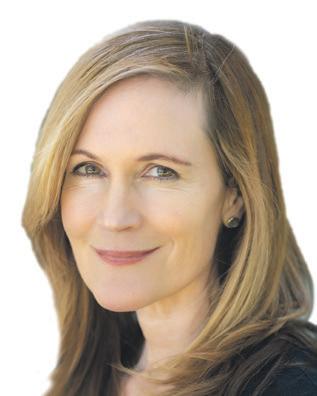
Guido listened to the hubbub. The system had failed salmon. It wasn’t out of lack of knowledge—the needs of salmon were understood—it was that no one had been looking down the road at the long-term consequences of current practices. What made it unconscionable was that this same scenario had already played out with Atlantic salmon—twice: once in Europe and again on the eastern seaboard.
Guido felt in his gut that he had a role to play in preventing the impending tragedy, but he was nowhere near the stage. He was a graduate of a mid-level university
where he had failed to achieve academic distinction. Up until now, good grades had simply not been important. But the ESA listing changed everything. The only way for Guido to gain credibility was with a higher degree. He had to go back to school. And in his mind, there was only one school worth trying for.
Yale’s School of Forestry and Environmental Studies had fostered visionary conservationists since the early 1900s. Its graduates now affected environmental policy at the highest level. Guido decided this was the school for him. There would, he knew, be challenges to getting in. For starters, he didn’t have the academic record he needed to be considered by an Ivy League school. On paper he looked like a derelict who was resistant, uninterested or possibly mentally deficient. Which meant that, if he was going to have a prayer at being accepted, he would have to break into the admissions process at Yale. He would have to sell himself directly.
It was the spring of 1990 when Guido jumped into his Volkswagen van and got on Interstate 95 heading north from DC, alternately listening to the radio and composing his presentation on the six-hour drive to New Haven, Connecticut. Guido had done his research; in his pocket was a list of four professors he needed to see. His strategy was simple: he was going to tell them who he was, what he had done with his life so far, and why he belonged at Yale. He began knocking on doors. By the end of the day he had presented his argument four times, and without exception the professors had listened. Guido’s understanding of biological systems was exceptional and his experience in the field highly unusual. He described the intricate ecosystems of the high desert, the cloud forest and the salmon rivers with passion and knowledge, speaking about these places as if they were his home.
Guido drove back to DC thrilled to his core. Back in his apartment, he typed a letter to Professor Stephen Kellert, the director of admissions, thanking him for his time and reiterating his profound impression that he and Yale were a perfect fit. A few weeks later, he heard back from Kellert. The committee had unanimously agreed that he was an ideal, if unconventional, candidate and encouraged him to apply.
The next step was less comfortable. Guido winced inwardly when he called to have a college reference sent from the University of Oregon; he knew the document was not a great testimony to academic commitment. It took a few more weeks for Yale to respond. Professor Kellert wrote the letter himself; it was brief and brutal. Guido’s reference was one of the worst they’d ever seen; they couldn’t let him in.
Guido read the words without taking them in. They were wrong. They had made a mistake. Critical ecosystems were at risk, ecosystems upon which they all depended. People needed to be educated.
He got back in his van and headed north again, preparing his rebuttal as he drove. College, while not a peak performance, was six years ago and every year in Guido’s life since spoke of his commitment to conservation; every year his understanding of ecosystems grew. He was a willing and able envoy for a vital environmental cause. Was Yale going to slam the door in his face because of a few mediocre grades?
When Kellert agreed to see him, Guido made a simple plea. ‘Please don’t judge me on the past.’ Kellert remained unswayed. Guido was simply too much of a risk. Guido had arrived at a reality he had eluded for a long time. To get what he wanted, he would have to play by someone else’s rules. He embarked on a plan B, seeking out members of the admissions committee and asking them what was required to make him the most competitive candidate the following year. He wanted to know the rules. The clearest answer came from Kellert. Guido needed to do a few things, none of which was easy. The first was to address his performance in college. He had to explain to Yale, and maybe to himself, how he came by such poor grades. Then he had to demonstrate his passion, discipline and mission in the real world. Lastly, he had to brush up on his math skills.
Guido listened to all of this in concentrated silence. ‘Okay,’ he said. If they wanted bold action, they would get it. Guido bought a ticket to South America and headed straight for the vast rain forest of Brazil. Here, in the heart of the Amazon, the Rainforest Alliance was actively saving the rain forest but had no program for the fish of the mighty Amazon. Guido knew that, just like the salmon of the Pacific Northwest, these fish faced threats. In fact, he informed the Alliance, the fish of the Amazon were as important as the rain forest itself. They were an integral part of
… continued in the book
Stronghold Tucker Malarkey

Heroes aren’t always recognisable at first. Guido Rahr grew up on the rivers of Oregon and only discovered his life’s mission when ecological disaster struck the bio-systems that everyone else took for granted. In Stronghold, Tucker Malarkey observes a determined individualist rising to the challenge and contending with a host of obstacles on America’s Pacific coast and across the Pacific in Russia’s eastern wilderness, in an attempt to ensure the survival of the salmon
Save £4.68
Our price £12.31 inc. free UK delivery
To buy this book, visit www.booklaunch.london/sales or point your smartphone here
Subscribe to Booklaunch now!
Special autumn offer: 30% off www.booklaunch.london/subscribe
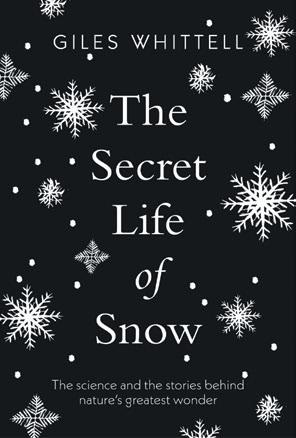
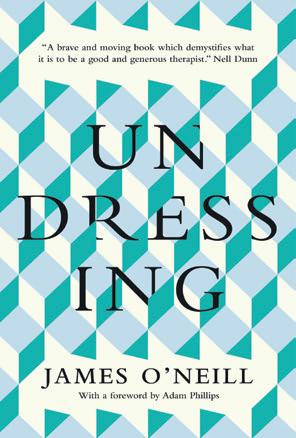
From the same publisher
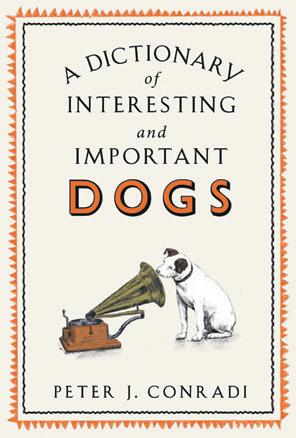
This edited extract is taken from the start
Chapter 5:
Ivory
of
“Scaling the
Tower”
One Man’s Quest to save the Wild Salmon—before it’s too late Short Books / Octopus (London), 362pp, Hardback, 9781780724010, 135mm x 216mm, colour photo section, September 2019, RRP £16.99
Tucker Malarkey is the author of bestselling novels An Obvious Enchantment and Resurrection. With a career that began at the Washington Post, her love of human culture and wilderness has taken her all over the world. She now lives with her son in Berkeley, California. She grew up fly fishing, studied Sovietology, and has travelled to Russia numerous times. Stronghold is her first major non-fiction work
NATURE / SCIENCE | ISSUE 5 | PAGE 5
Tales of the Troubled Dead Catherine Belsey
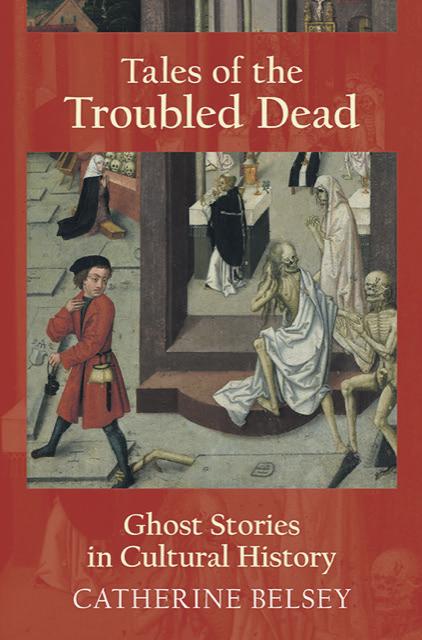
Strange news from Cornwall Ghosts don’t stay put. Seen by glimpses, they come and go unpredictably. And so, it seems, do their stories. The tale of Dorothy Dingley, due to evolve as time went on, first entered the written record in the seventeenth-century memoir of the Reverend John Ruddle.
On 20 June 1665 Parson Ruddle was unexpectedly drawn into a ghost story, when an elderly gentleman and his wife appealed to him for help with their son. The lad, once full of promise, was now in a serious decline. His parents suspected the boy of malingering. His reluctance to go to school might be the effect of laziness; perhaps he was in love; alternatively, it might be that he wanted an excuse to join his elder brother in London. But the youth himself maintained that he was haunted and they counted on the minister to talk him out of such fancies.
Left alone with the boy, the parson found him open and frank. For a year or so on his way to school, he claimed, a woman had passed him, sometimes more than once in the same field. At first, he had paid no attention, supposing her to be a local resident, but when he looked more closely, he recognised Dorothy Dingley, dead these eight years. He often spoke to her but she never replied. When he changed his route, she changed hers and met him in the lane.
To the boy’s relief, Rev. Ruddle agreed to walk with him the next morning. And there, in a field well away from human habitation, was the woman, just as the boy had described. The minister had meant to address the ghost but somehow could not bring himself to do so, nor to look back at the departing figure.
Ghost stories grew up in counterpoint to formal literature, sometimes operating in competition with it, sometimes in harmony. In Tales of the Troubled Dead, Catherine Belsey charts the evolution of the genre, monitoring specific stories to show not just how they have grown and been elaborated but how their role and reception have changed as they have been brought into the canon by writers from
Homer and Shakespeare to Susan Hill
Catherine Belsey is Professor Emeritus at Swansea University and Visiting Professor at the University of Derby. She has consistently supported innovations in the study of culture and writing, and challenged the blurring of literary criticism and nostalgia. She now lives in Cambridge and chairs a range of reading groups. She is a Fellow of both the English Association and the Learned Society of Wales
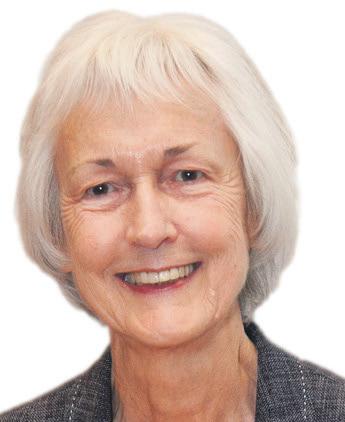
Puzzled, but thoroughly enlisted in the adventure, he returned to the field alone as soon as other matters permitted, and there she was again, only ten feet away. A third time, the boy and his parents came too. On this occasion, she seemed to move faster. Ruddle and the boy turned to follow her but she crossed the stile and then vanished. He now noticed that she appeared to glide rather than walk. And a spaniel that had joined the company barked and ran away. The terrified parents, who had attended Dingley’s funeral eight years before, had no wish to encounter the apparition a second time.
In the end, the clergyman resolved that he must speak to the ghost. At five the next morning he crossed the stile into the field. He spoke authoritatively to the dead woman and gradually, reluctantly, she replied. They met again an hour after sunset and, in the light of their exchanges, the spectre vanished for good. The testimony, committed to writing by Mr Ruddle himself, concludes with an assertion of its veracity. ‘These things are true, and I know them to be so, with as much certainty as eyes and ears can give me.’
Ruddle dated his manuscript 4 September 1665, adding that, since he was young and new to the area, he thought it best to keep the story to himself. It appeared in print even so, but not until 1720, when ‘A Remarkable Passage of an Apparition’ was included, somewhat incongruously, in a pamphlet about a deaf fortune-teller, and then reprinted in a more substantial volume that same year, the second edition of The History of the Life and Adventures of Mr Duncan Campbell
What prompted publication over fifty years on? In the early eighteenth century, accredited ghost stories had become highly saleable. For half a century or more, the Anglican Church had felt itself threatened by materialist Enlightenment philosophies that allowed no special place for the supernatural. If there were no ghosts, or no possibility of suspending the laws of nature, the way was open to declare that there was no God. In defence of religion, a number of divines took to promoting the apparitions that a century earlier Protestantism had denied as delusions of the devil. Stories of attested encounters with spirits, always popular, became exceptionally marketable.
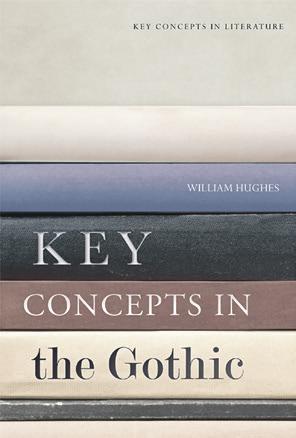
So, at the same time, did anything written by Daniel Defoe. For many years, it was believed that the Ruddle memoir was actually the work of Defoe, master impersonator of other fictional storytellers, including the prostitute Moll Flanders and the largely imaginary castaway Robinson Crusoe. Defoe was already known as the author of A True Relation of the Apparition of One Mrs Veal. Why not add, then, the record of an obscure Cornish clergyman’s encounter with the supernatural? But that attribution is no longer secure and John Ruddle’s authorship remains a distinct possibility.
The tale evolves Ghosts exist in their stories, and Dorothy Dingley’s did not end with publication in 1720. Instead, it was to survive as the theme of speculation and debate. Her tale would be variously defended as fact or enhanced as fiction, and would develop as time went on to accommodate new modes of storytelling. Dorothy’s spectre slipped from memoir to history, and from there to romance, short story and, eventually, folklore, shifting in line with these distinct genres.
The narrative also changed with the times, marking new ways of understanding what it was to be a ghost. In addition, it came to focus more specifically on what might trouble a woman in the grave. As her tale was taken up, explained, embellished and elaborated, the matter that drove Dorothy to walk, unspecified in Ruddle’s memoir, was gradually sexualised.
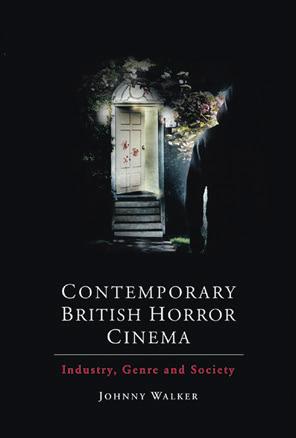
While her changing shapes demonstrate the power of ghost stories to seduce successive generations of writers and readers, they also throw into relief some of the difficulties we meet in engaging with the troubled dead. In 1817, nearly a century after its first appearance in print, the haunting made its way into local history. C. S. Gilbert reproduced the story in his Historical Survey of the County of Cornwall, adding that the boy’s father, unnamed by Ruddle (now Ruddell), was Mr Bligh of Botathen. Seven years later, Fortescue Hitchins and Samuel Drew summarised the story in their own History of Cornwall. They too named the Bligh family but this time the ghost was identified as Dorothy Durant.
These historians evidently found the story sufficiently credible to merit such supplementary information. Drew, who edited The History of Cornwall, adds a note of personal scepticism: ‘On this strange relation, the editor forbears to make any comment.’ But he did not delete the narrative from the historical record. Gilbert, on the other hand, was inclined to take the matter seriously, as, from a different perspective, was T. M. Jarvis, who in 1823 included the tale among his Accredited Ghost Stories, a work designed to support the religious case for the immortality of the soul.
If the story proved attractive to local historians and defenders of the supernatural, it was even more seductive to writers of fiction. What mattered in 1720 was that a dead woman genuinely walked and the supernatural was real. In the epoch of the novel, however, the pressing question was why she walked. What so troubled Dorothy Dingley that she could not sleep in her grave? In 1845 Anna Eliza Bray took Ruddell’s account from Gilbert’s history and included it in her romance, Trelawny of Trelawne. Mrs Bray was more alert than Hitchins and Drew to the nuances of the record. In Gilbert, as in the Ruddle memoir he repeated, the boy’s mother was a ‘gentlewoman’, the ghost a ‘woman’. Bray’s novel makes Dorothy a servant. Her guilty secret, revealed at last in the field to the minister, is that she once concealed documents proving that the haunted boy was in reality the true heir to a landed estate. Years later, the dead nursemaid walks the field to meet her former charge. Eventually, she tells Mr Ruddell where to look for the papers and justice is finally done.
This avowedly fictional explanation was not to be the last, however. In 1867 R. S. Hawker published what has since become a canonical Victorian chiller. ‘The Botathen Ghost’ first appeared in Charles Dickens’s journal All the Year Round. There Hawker claims to have had access to the original ‘diurnal’ of Parson Ruddall, as the vicar has now become. On the basis of this journal, Hawker resets the story in winter, the appropriate time for apparitions. He also reduces the interval between the funeral and the sighting to three years, within the likely reach of a schoolboy’s memory. The allusion to tradition, along with increased probability of detail, brings the tale into line with the conventions of nineteenth-century ghost stories.
Moreover, since ghosts are dedicated followers of fashion, the spectre now adjusts her appearance accordingly. The solid revenant that the lad initially mistook for a local woman has here taken on the wraithlike features of a properly Gothic ghost. Dorothy (now Dinglet) has a ‘pale and stony face’ with ‘strange and misty hair’. ‘She floated along the field’, the minister records in Hawker’s version, ‘like a sail upon a stream, and glided past the spot where we stood, pausingly. But so deep was the awe that overcame me’, he continues, ‘as I stood there in the light of day, face to face with a human soul separate from her bones and flesh, that my heart and purpose both failed me.’ Hawker’s ghost is a phantom, visible but not
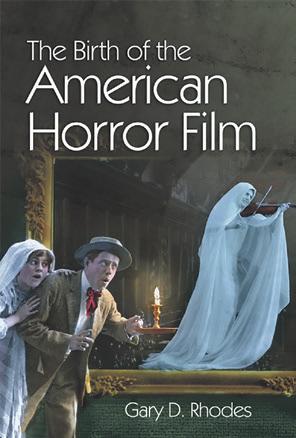
Subscribe to Booklaunch now! Special autumn offer: 30% off www.booklaunch.london/subscribe From the same publisher Save £2.75 Our price £12.24 inc. free UK delivery To buy this book, visit www.booklaunch.london/sales or point your smartphone here FOLKTALES AND THE SUPERNATURAL | ISSUE 5 | PAGE 6
Ghost Stories in Cultural History Edinburgh University Press, 288pp, Paperback, 9781474417372, 138mm x 216mm, 10 b/w illustrations, September 2019, RRP £14.99
to be mistaken for a living body, at once perceptible and insubstantial, of a different composition from her material surroundings.
A sexual secret
As this development implies, the supernatural has a history. Ghosts change their nature from one epoch to the next. And that differential history also redefines the nature of the trouble that wakens the dead. While any kind of unfinished business might keep male ghosts from resting in peace, by the nineteenth century what had come to trouble women most was their sexual past. Hawker’s fictional parson notes that, on recognising Dorothy Dinglet, the boy’s elderly father, Mr Bligh, shows signs of anxiety. When the clergyman finally persuades the ghost to speak, she confesses to ‘a certain sin’, although the minister does not name it. Since ‘Pen and ink would defile the thoughts she uttered’, those thoughts remain veiled. At evensong, the minister has a long talk with ‘that ancient transgressor’ Mr Bligh, who shows ‘great horror and remorse’. Satisfied with his penitence, the ghost is duly laid to rest.
Whose was the unspeakable sin? Mr Bligh’s, evidently. But was Dorothy his victim, or his willing partner? The story does not say. We are invited to construe that the sin was sexual—and our guess may be a good deal more lurid than anything that could be spelt out in a Victorian journal for family reading. In the story the facts remain elusive, shadowy and uncertain—like ghosts, perhaps. If sex has now become the female secret, it remains undefined, suggested in hints for imagination to work on.
Oddly enough, however, part of Hawker’s fiction resurfaced in the twentieth century as popular local legend and, in the process, Dingley’s story acquired a more specific sexual core. In 1940 Christina Hole incorporated ‘The Botathen Ghost’ into her English Folklore. This book, claiming the story as Cornish belief, actually reproduced word for word Hawker’s description of the apparition, complete with the stony face and misty hair. But it omitted the guilty secret. Thirty years later, when the renowned folklorist Katharine Briggs repeated Hole’s account in her four-volume Dictionary of British Folk-Tales, she tentatively adduced a different cause for the dead woman’s restlessness. Briggs stated in a footnote that, according to ‘Hunt’, Dorothy had had an affair with the elder brother of the boy she haunted.
But it turns out that Robert Hunt, author of Popular Romances of the West of England, published in 1865 and frequently reprinted, had made no such claim. On the contrary, he abridged, with acknowledgement, the account given by the historian, C. S. Gilbert, which matches the first printed version of 1720, and makes no reference whatever to a troubled past for Dorothy. What
could have prompted the scholarly Briggs to suppose he did? By this time, there were in circulation several versions of the earliest printed account. Was the affair between Dorothy and the elder brother a creative misreading of John Ruddle’s memoir? Romance, after all, came into that story, however obliquely. The worried parents thought love might be to blame for the boy’s decline. He also had an elder brother who had gone to London. Had these two pieces of information somehow been elided?
Indeed they had, but not, in the first instance, by local legend. Instead, they were brought together in ‘The Woman in the Way’, a short story by Oliver Onions and published in 1924 in a collection called Ghosts in Daylight. Here the tale is presented as fiction and the storytelling is as ingenious as the sexual politics are misogynist. ‘The Woman in the Way’ begins with John Ruddle’s memoir. It pays close attention to the particulars of the narrative, points to the gaps there and fills them with what it explicitly calls conjecture. It inventively coaxes the memoir to reveal that the boy’s mother ‘wears the breeches’ in the household. When her elder son shows signs of wanting to make his fortune in the big city, what would she do but find him a nice local girl to marry instead? But suppose he had already contracted a relationship of his own with Dorothy Dingley? And what if Dorothy, scorned by the family as not good enough for their son, chose in anger to lead him on? We cannot be sure, the story continues, whether the elder son left for London teased but rejected, or whether, on the contrary, he prevailed with the young woman and departed in triumph. Either way, Dorothy died but, after seven years, returned to set about a vengeful seduction of the younger boy in his turn. No wonder the parents were frightened when they recognised her in the field.
Truth
In the fiction of the roaring twenties, then, the ghost has become a vamp—and half a century later Dorothy’s sexual relationship with the elder brother has entered Briggs’s Dictionary as folklore. In the three hundred years since 1720, a tale that, in the first instance, may or may not have been invented passes into history and, from there, back into fiction, which then reappears as local legend. The story of Dorothy Dingley/Durant/ Dinglet is still told in the neighbourhood of Launceston and in some current versions she died in childbirth, after a sexual relationship with the boy’s brother, who abandoned her and disappeared in London.
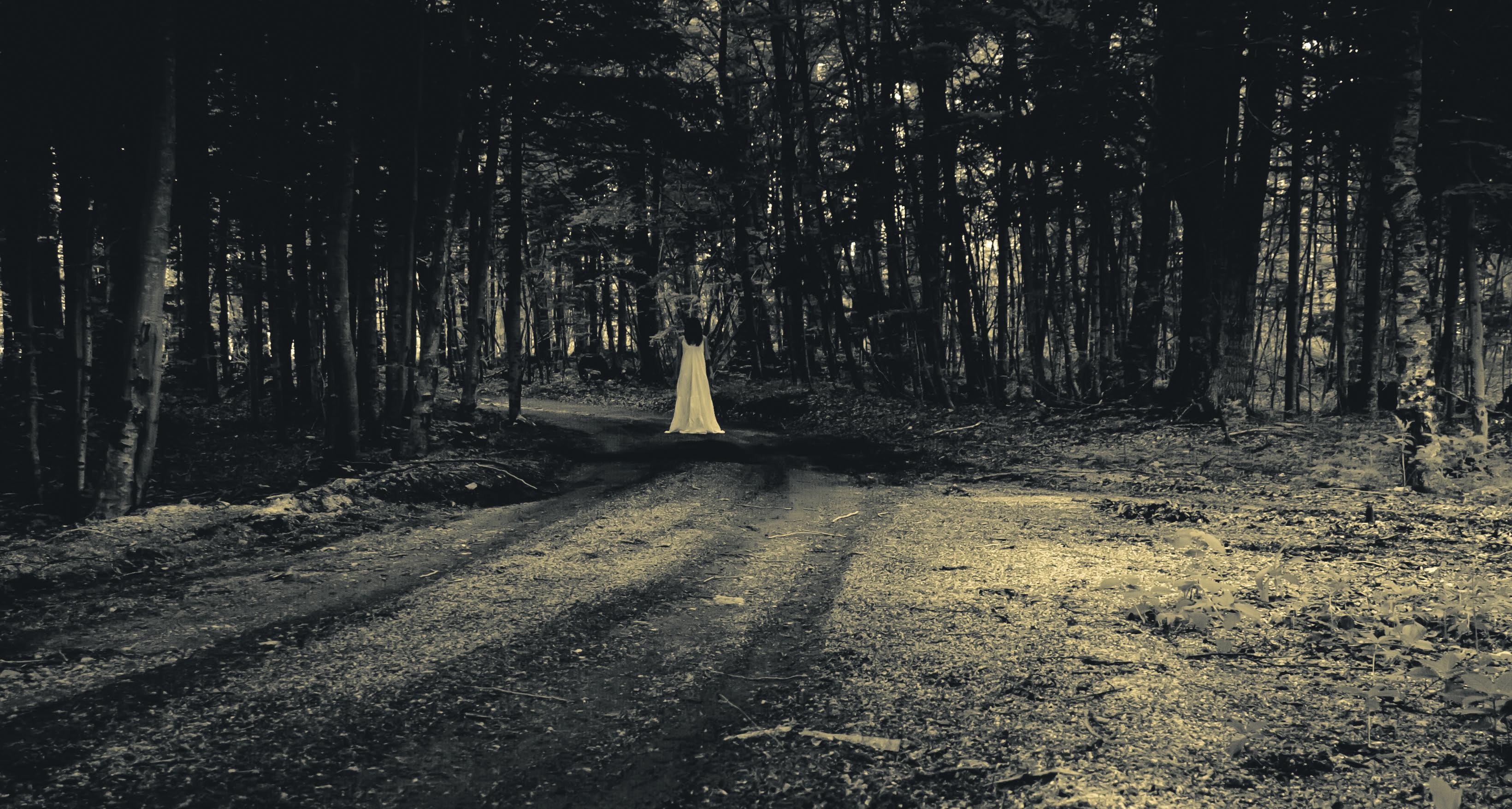
Where, if anywhere, does the truth lie? Is there anything here that we can safely believe? Did Dorothy Dingley ever live? If so, did she walk after her death? Did John Ruddle/Ruddell/Ruddall lay her ghost to rest and record the encounter but not what she said? At the heart
of this evolving story is a spectral woman who cannot rest until she tells her secret. Her motive for walking might or might not be a troubled sexual past. But her existence, real or imagined, depends on a memoir, itself conceivably genuine, but possibly not. All we have is the version of it printed in 1720. The original manuscript of this memoir, dated 1665, remains as spectral, as uncertain, as the ghost herself.
What do we know for sure? It turns out that the Reverend John Ruddle existed—and the variations in the spelling of his name are not out of the ordinary. He was vicar of Launceston at the date of the haunting until his death in 1698. But did he write about the ghost, and was his record put into print in 1720? Dingley was a common name in the neighbourhood. The topographical accuracy, such as it is, remains remarkable: the author seems to have known the neighbourhood.
But it remains a puzzle that the Cornish manuscript should have come into the possession of a London publisher so long after the events in question and in defiance of the secrecy Ruddle had thought prudent. On the other hand, by 1720 John Ruddle had been safely dead for more than two decades, and the hauntings had taken place over thirty years before that. No one was likely to complain at the release of his secret; equally, no one was likely to be in a strong position to challenge the veracity of the published tale.
During the nineteenth century, various respectable people claimed that others, equally impeccable, had seen the original memoir. Evidence for the truth of the record, stoutly declared incontrovertible, was in practice thin, and no manuscript has been produced. In the event, when it comes to apparitions, it may be that the truth is not an option. Facts are elusive; too much is lost in the telling and retelling.
Fabrication, on the other hand, belongs to a distinct category. That the truth is out of reach or uncertain does not mean that there is no difference in principle between attested narratives and stories that are simply made up. It is too easy to assume that, if truth cannot be guaranteed, ‘it’s all fiction’, as they say. Even if the line between the two is not always hard and fast, there is a distinction between accredited stories and inventions. The difficulty, however, as Dorothy Dingley’s story demonstrates, is to tell one from the other.
While truth remains an object of desire, it does not necessarily lie waiting for us on the other side of writing or speech. The troubled dead walk in their stories, and perhaps only there. Those tales have a history and, as the consecutive revivals and rewritings of this one imply, a strong and continuing appeal to readers and listeners.
That history and that appeal are the main concerns of this book. … continued in the book
This
FOLKTALES AND THE SUPERNATURAL | ISSUE 5 | PAGE 7
extract is taken from the introductory Prelude: “The Changing Shapes of Dorothy Dingley”
Photograph: Lario Tus / Shutterstock
Talking to North Korea Glyn Ford
It was during the 1966 World Cup in England (North Korea 1—Italy 0) that I first discovered the Democratic People’s Republic of Korea (DPRK). It was longer before they found me. When I was elected to the European Parliament (EP) in 1984, one of my first interventions in committee was to propose that a report be prepared on EU-North Korea trade relations. In that report, the Extemal Economic Relations (now International Trade) Committee concluded there were neither relations nor trade. The North was out of sight and out of mind. As with all EP reports, it concluded with a standard formula instructing that a copy of the report ‘be sent to the Commission, Council, Member States and Government of the DPRK’. Two years later, when I finally visited the DPRK embassy to UNESCO in Paris for the first time, I asked them for their response to the EP Report. They replied that they’d never seen it. Back in Brussels, I asked the EP’s administration what happened. The official response was, ‘We didn’t have an address.’
While acknowledging that it is both deeply flawed and repressive, former Labour MEP Glyn Ford challenges the idea of North Korea as a rogue state run by a mad leader. Instead, informed by unique access and nearly 50 visits, he argues that parts of its leadership are keen to modernise and end their global isolation, and that more creative dialogue is needed to avoid a disastrous North-East Asian war
Glyn Ford began his career as an academic before moving into politics. He was a Member of the European Parliament from 1984 to 2009, and sat on its Japan Delegation and the Korean Peninsula Delegation. Between 1989 and 1993 he was a member of Labour’s National Executive Committee and is currently a member of its National Policy Forum. Ten years ago he founded the Public Affairs and International Relations consultancy POLINT, and in 2015 he started the Brussels-based NGO Track2Asia
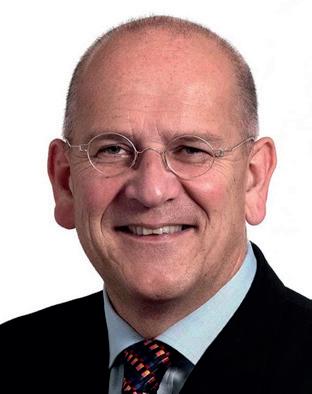
That was to change. By 2004 the EP had a standing delegation for the Korean peninsula. But it was not all for the better. Pyongyang has now spent a quarter of a century plastered across the world’s front pages, as it apparently threatens the world with its nuclear weapons and missiles, if no longer with its ideology. I initially decided to write North Korea on the Brink; Struggle for Survival (Pluto, 2008) because the only books I found either—largely—painted it entirely black or—rarely— totally white; ‘axis of evil’ or socialist utopia. It’s neither. The North is fifty shades of grey—some dark—rather than black or white, a product of its enemies as much as of its friends and itself. Ten years later, history has moved on. Everything has changed, and nothing. The last year has seen the Peninsula closer to war than peace. The book needed an update.
North Korea is a poor, beleaguered country run by an unpleasant regime that has served its people ill. However, the alternatives proffered by its enemies would only compound its pain.
I wanted two things with the first book: first, to provide an appreciation and understanding of North Korea’s history, politics and economics, taking into account that the North went from feudalism to colony to Communism with no democratic detour or interregnum; second, to advocate the application of ‘soft’ rather than ‘hard’ power. I argued for ‘critical engagement’—for ‘changing the regime’, not ‘regime change’— to provide ‘the greatest good for the greatest number’.

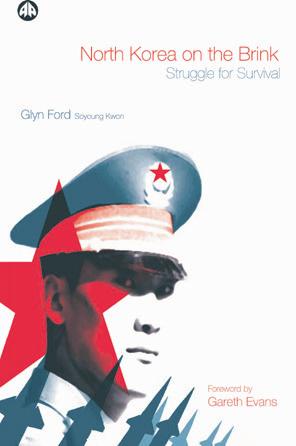

I still want to deliver on those two promises the second time around. But you can never step in the same river—or nuclear crisis—twice. Events and I have moved on apace. When I wrote North Korea on the Brink I had visited the country barely a dozen times; now I am approaching my fiftieth visit and for the last seven years have been involved in an extended political dialogue I established with the Vice-chairman of the International Department of the Party. In some facets I understand some things more and others less, but for both I have a more nuanced appreciation.
Introduction: The Pyongyang Paradox Pyongyang is trapped in a paradox. The very measures it has felt essential to ensure its long-term survival are precisely those that put it in short-term jeopardy. Kim Jong Un’s byungjin line—which gave equal weight to building the nuclear deterrent and developing the economy—was designed to provide the security, time and space to allow the economy to grow. The ultimate intention was to transform the country into an unattributed variant of Vietnam or China. Yet the nuclear strand of the policy threatens to precipitate a ‘preventive’ strike by Washington and its ‘coalition of the willing’, triggering a second Korean War—with devastating consequences.
Washington sees North Korea as an undeveloped Communist state in hock to Beijing, led by an irrational playboy with an odd haircut—and thus as a dangerous pariah that is unsusceptible to the normal political leverage of cause and effect. It would be more accurate, however, to see the DPRK—as it prefers to be known— as constrained in a situation where its choices are narrow. With a failed industrial economy rather than an emerging one, its ruling regime has legitimate reasons to distrust the outside world and is desperate to ensure its survival in the face of clear existential threats. From Pyongyang’s perspective, its actions are the inevitable
corollary of this struggle for survival. Here the political stratigraphy of North Korea is revealing: the base feudal layer overlaid by the deep lessons of brutal Japanese colonialism (Japan occupied Korea from 1910 to 1945), then the careless division imposed by the United States in the aftermath of World War II. All followed by initial victory in a civil war, converted into a surrogate clash of civilisations that ended in a half-century stalemate, before it was in danger of being buried under the rubble of a collapsing Soviet empire. North Korea’s recent behaviour is less a war cry than a cry for help.
There have been numerous attempts to explain North Korea, some less successful than others. Among the most risible is John Sweeney’s North Korea Undercover, which parleyed a standard week’s holiday into a heroic feat of daring and deserves marks for chutzpah, if nothing else. Victor Cha knows his stuff, without question; nevertheless, his The Impossible State reveals much about America’s outdated misperceptions of the North. Yet Pyongyang hardly welcomes contemporary cutting-edge analysis. James Pearson and Daniel Tudor’s North Korea Confidential, which illuminates the further shores of Pyongyang’s market reforms, sufficiently irritated the North that Seoul felt it necessary to place the authors under round-the-clock protection.
For sheer encyclopaedic knowledge of the road to war, Bruce Cumings’s two-volume The Origins of tbe Korean War is unsurpassed, but is matched page for page by Robert Scalapino and Lee Chongsik’s Communism in Korea, charting the regime’s first decade. For something to challenge the West’s more recent received wisdom, Andrei Lankov’s collection of books does exactly that. For those who like to cut fact with fiction, the pseudonymous James Church’s early ‘Inspector O’ stories serve.
I first visited North Korea in 1997, during its darkest days since the war, at the height of the famine. I have been back almost fifty times since then, under a variety of guises. I served on a series of ad-hoc delegations dispatched by the European Parliament consequent upon my visit in 1997 and in 2004 I successfully proposed the establishment of a standing delegation with the Korean Peninsula that still exists. Early on in my peregrinations it became clear where power lay in Pyongyang. Like in China, it was the Party, not the Ministries, that makes its mark.
Thus the majority of my visits have been under the auspices of the Workers’ Party of Korea’s (WPK) International Department.
In 2012 I was asked if I could set up a dialogue with politicians from the European Union. This I did, with Jonathan Powell, Tony Blair’s former chief of staff and founder of the mediation charity Inter Mediate. Since then we’ve had an ongoing series of track 1.5 meetings; our current host is a member of the Politburo’s Executive. In parallel, Pyongyang’s perspective on the South is delivered by the Korea Asia-Pacific Peace Committee (United Front Department). In the twelve months leading up to this book’s publication, I have been back to Pyongyang five times. This unique access has opened doors, from the White House to the Blue House, the Japanese cabinet office to the Chinese foreign ministry, the United Nations to the US Pacific Command, the EU’s External Action Service to the National Security Councils.
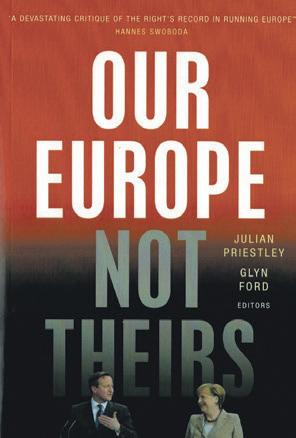
One thing I have learnt is that the North is steeped in history and precedent. For them, history matters. They imbibe from birth a national narrative that shapes their comprehension of the world and their adversaries. Unlike in the West, where ‘vision’ means thinking beyond the next electoral cycle, North Koreans think long-term. The past is the key to the present. Thus any attempt to understand the DPRK and its people needs the vision to at least glimpse reality through their eyes. I hope this book will help you do that.
First, let us begin by dispelling the fabulous. The five biggest myths about the DPRK are that:
1. It’s a Stalinist state run on the basis of Marxism-Leninism. No, it’s a theocracy with communist characteristics whose catechism is KimilsungismKimjongilism.
2. Beijing and Pyongyang are like ‘lips and teeth’. No, the regime deeply distrusts and resents China. For the last decade they have barely been on speaking terms; Pyongyang is prepared to fight if necessary.
3. Pyongyang wants early unification. No, the North’s leadership is all too well aware that with its GDP at barely more than 2 per cent of the South’s, early unification would only be assimilation by another name.
4. It’s a command economy. No, since the famine in the late 1990s it has
This extract is taken from the start of the Preface and Introduction
Ending the Nuclear Standoff Pluto Press (London), 240pp, Softback, 9780745337852, 125mm x 195mm, 34 b/w photographs, 2 tables, 1 map, October 2018, RRP £14.99 … continued in the book
Subscribe to Booklaunch now! Special autumn offer: 30% off www.booklaunch.london/subscribe From the same publisher
£3.24
price £11.75 inc. free UK delivery
buy this
or point your smartphone here
Save
Our
To
book, visit www.booklaunch.london/sales
ASIA / POLITICS | ISSUE 5 | PAGE 8
Bioculture is an emerging technology for producing food products from cultures of the cells from plants, animals, fungi and microbes. It is the commercial realisation of the tissue cultures which have been used in agricultural, biological and medical research since the technique was discovered by Wilhelm Roux in 1885.
Among the eyecatching advances under way are cowless meat and milk products, chickenless eggs and meat, pigless bacon and fishless fish. These are not substitutes made from vegetable material like soy—they are indeed true meat cultivated by carefully feeding embryo stem cells with the right nutrients to turn them into muscle fibre. The only thing missing is the animal in the middle of the process—which goes direct from living embryo to meat product at a speed and with an efficiency no animal can match.
The technique was demonstrated by Professor Mark Post at Maastricht University when, in 2011 he produced the world’s first ‘test-tube sausage’ followed a couple of years later by the first hamburger. This breakthrough in food production has since been followed by biotech and food startups around the planet, in what some experts consider may become a technology boom to rival or exceed solar energy.
The UN Global Environment Facility explains why: ‘Analyses show that producing 1,000 kg of cultured meat requires approximately 99% less land, 82–96% less water, 78–96% less greenhouse gas emissions, and 7–45% less energy compared to conventionally produced European livestock. Research is [also] focusing on: creating meat substitutes from plant-based protein; engineering microbes to produce dairy products like milk; and making other products such as leather, fur, and wood.’
The first cultured hamburger, a research product, cost $325,000 to produce in Professor Post’s university laboratory. Two years later a company called Future Meat Technologies said it had the cost down to $325 a pound and was aiming for $2–3 a pound by the early 2020s.
Cultured meat is controversial. On the one hand it offers meat which is free from cruelty (to either animals or humans) and meets contemporary ethical standards with a much lower environmental footprint than conventional meat from animals. On the other hand, its critics claim it is ‘not real meat’ and that its climate credentials may not be as good as natural grazing of animals (which, if done sustainably, can lock up large amounts of carbon). However, since the cultures are raised in bioreactors, they are immune to the impacts of weather and climate that afflict livestock systems. On the dietary side, it is likely they can offer a meat alternative that is designer-profiled to the needs of consumers with particular health problems, at an affordable price.
Meat is far from the only new food product that can be produced from biocultures. There is also milk made from yeast cells, vegetarian ‘meat’ and eggs made from plant cells. With gene editing, it become possible for bio-factories to make new medical drugs, biofuels, bioplastics and green chemicals, even insulation, textiles and construction materials.
Carolyn Mattick of the American Association for the Advancement of Science assesses it as ‘a technology that presents opportunities to improve animal welfare, enhance human health, and decrease the environmental footprint of meat production. At the same time, it is not without challenges. In particular, because the technology largely replaces biological systems with chemical and mechanical ones, it has the potential to increase industrial energy consumption and, consequently, greenhouse gas emissions’.
The big question is: will consumers eat biocultured food? The answer, it appears, is that today’s consumers do not know what is in a sausage, a pie, a chicken nugget, a dim sum or a crab stick anyway—and will probably eat it provided the price is right and the food is tasty and safe. In support of this view is the fact that in the 1950s nobody on Earth wore synthetic fabrics made from petroleum— and today almost everybody does, suggesting that novel technologies can be universally embraced provided they meet consumer needs, wishes and budgets.
A major challenge facing this very new technology is how it will be received by the highly complex system of food law and regulation, institutions, commercial networks, healthcare policies, technical factors and social mores that influence the modern food supply. These have posed no real obstacle to the introduction of genet-
ically modified foods, and so may be expected not to do so for biocultured foods. However, the issue will be decided, in the end, by consumer preferences.
Another big question is: what effect will cultured meat have on the 60 billion animals which are slaughtered every year to feed humanity—and on the hundreds of millions of people who raise and process them? Since livestock now represents 65 per cent by weight of all the vertebrate land animals on Earth, clearly an alternative way to grow meat could potentially replace many of these—and so help to restore the ecosystems which humans have destroyed or damaged in trying to raise and feed so many livestock, allowing wild animal numbers to recover. However, it is likely that many consumers will still prefer their meat ‘natural’, in the same way that many people still choose to wear cotton, linen or wool over synthetic textiles. This means there will still be a large market for meat from livestock reared sustainably on eco-farms or grazed sustainably in the rangelands— and that animal meat, as an up-market product, will command a premium price.
Coupled with biocultures, potentially, is 3D printing of food from raw ingredients, or even from basic nutrient materials produced in biocultures. Food printers have a range of possible applications, from printing out hamburgers, pizza, donuts and snackfoods in fast food outlets and vending machines, to automated production of airline meals, to the sculpting of unique and beautiful designer desserts in elite restaurants. In the home they can be used to print out novel processed foods from raw, heathy ingredients, thus sidestepping the unhealthy chemical dyes, additives and preservatives and excess salt, sugar and fat of the industrial food chain. Dozens of different food printers are already on the market, and hundreds of tech startups and major corporate players are forecast to be distributing them by the 2020s.
Exploring an Unexplored Planet
Today the average consumer eats fewer than 200 different plants as food. Yet there are, according to Australian agronomist Dr Bruce French, no fewer than 29,500 edible plants on the Earth.
Dr French gained the first inkling to this stunning insight in the 1970s, when he was working in the highlands of Papua New Guinea, teaching the locals about modern farming methods. Instead the locals—who had been farming for around 12,000 years—taught him a thing or two about the richness, variety and nutritional value of a diet still substantially based upon a wild harvest and native crops. In 2005 Bruce gave a talk to his local Devonport Rotary Club about what he’d observed in PNG, and how he thought this hidden indigenous knowledge could help ease world hunger. In less than two years he had teamed up with Rotary International to compile a world catalogue of plants that are good to eat, drawing heavily on the rapidly eroding store of knowledge of native peoples still living on their land around the globe. This, plus an accompanying education program called Learn*Grow, has since been shared with over 35 partner countries.
The aim of the Food Plant Solutions project was to produce an online database of useful edible plants from all continents, how to grow and prepare them as food, for countries struggling with hunger and poverty—but, in the event, Dr French should probably also be cast in bronze by the World Chefs Association for identifying tens of thousands of novel ingredients their members, the best chefs on the planet, had never even heard of. Thanks to an observant eye and a flash of insight, Bruce French has reshaped the human culinary destiny, the future of food and of farming.
The take-home message from the life’s work of Bruce French is that modern humans, while dreaming of settling the Moon or Mars, have yet to explore the Earth. At least, in terms of what is good and healthy to eat. We have, for generations, ignored what is under our very noses—especially in the modern age, whose oppressively narrow food boundaries are defined for us by a handful of gigantic food and supermarket corporations.
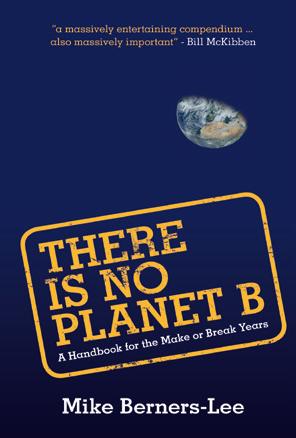
In Australia, where the European (and, latterly, American and Asian) diet has reigned for 250 years, Dr French has identified no fewer than 6,100 edible native plants used by the continent’s Aboriginal peoples for food and medicine for tens of thousands of years. So far, only about five of these foods have found their way into even the regular Australian diet, let alone the world diet—the macadamia nut being the best-known example.
With the recycling of urban nutrients—especially micronutrients—this
Food or War Julian Cribb

What are the chances of our planet’s being able to feed growing numbers of us without the environmental impact of doing so wiping us out and, with us, the rest of the natural world?
Julian Cribb has been exceptionally concerned about the price we pay for food, existentially, for many years. In his latest book, he looks at historical challenges—including the horrors of war and famine—and explores modern opportunities
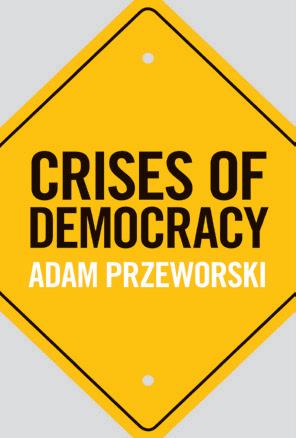
Julian Cribb writes about science, agriculture, mining, energy and the environment. He has been scientific editor for The Australian newspaper, director of national awareness for the Commonwealth Scientific and Industrial Research Organisation (an Australian federal government agency), and president of various professional bodies that report on agriculture and science. He has received numerous awards for his journalism
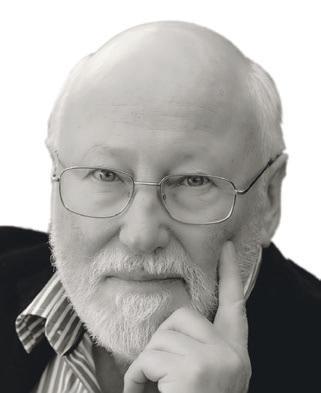
Save £1.20
Our price £8.79 inc. free UK delivery
To buy this book, visit www.booklaunch.london/sales or point your smartphone here
Subscribe to Booklaunch now!
Special autumn offer: 30% off www.booklaunch.london/subscribe
From the same publisher
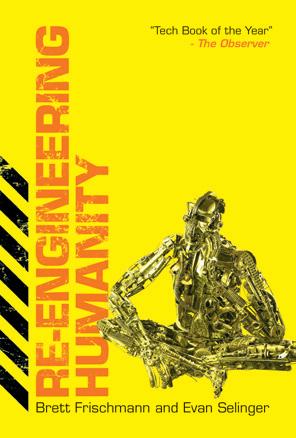
EARTH AND ENVIRONMENTAL SCIENCE | ISSUE 5 | PAGE 9
This edited extract comes from Chapter 9: “The Future of Food”
… continued in the book
Cambridge University Press (Cambridge), 350pp, Softback, 9781108712903, 139mm x 215mm, 42 b/w illustrations, October 2019, RRP £9.99
Peacemaker Paul Murphy

University of Wales Press (Cardiff), 208pp, Hardback, 9781786834720, 156mm x 234mm, 45 b/w pictures, September 2019, RRP £25.00
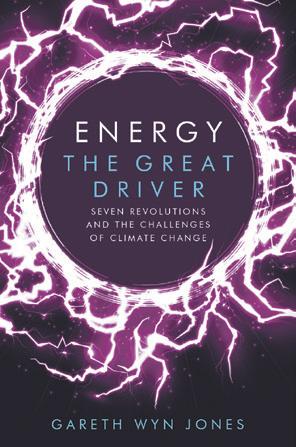

Paul Murphy joined the Labour Party more than 55 years ago, serving on his local council before succeeding Leo Abse as MP for his home constituency of Torfaen, Wales, in 1987. In this book, he describes how the socialist beliefs he grew up with helped shape his early political consciousness, and led eventually to his playing a leading role in negotiating the Good Friday Agreement as Northern Ireland Minister under Mo Mowlam
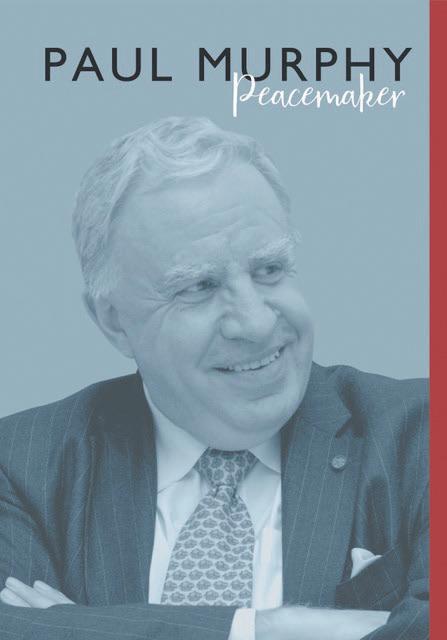
Paul Murphy, MP for Torfaen from 1987 to 2015, was Welsh Secretary in the UK Government from 1999 to 2002 under Tony Blair and again from 2008 to 2009 under Gordon Brown. He was also Northern Ireland Secretary in the Labour government between 2002 and 2005. He now sits in the House of Lords as Lord Murphy of Torfaen
To
On 23 October, I appeared on the BBC’s Question Time being broadcast from Belfast. The headline in the South Wales Argus read, ‘MP Murphy makes history in the TV Studio—the first Government Minister to share a television studio platform with Sinn Féin President, Gerry Adams.’ Joining Adams and me were John Hume of the SDLP, Conservative MP Andrew Hunter, and former Moderator of the Presbyterian Church in Ireland, Dr John Dunlop. No local Unionist would appear on this show, and Mo judged it better for me, rather than her as Secretary of State, to take part. During the programme, a protestor leapt out of the audience and stopped just feet away from Adams, accusing him of terrorism. My own protection officer was on edge that night, to say the least! On a far less dramatic level, I made a statement in the Commons six days later on the Spending Settlement for Northern Ireland, and later answered questions on the European Union.
A much more significant event in my life occurred on 11 December 1997, when Sinn Féin leaders went to No. 10 Downing Street to meet with Tony, Mo and me. Along with the Ministers on the government side were John Holmes, Alistair Campbell, Quentin Thomas and Jonathan Powell; Sinn Féin fielded Adams, Martin McGuinness, Martin Ferris, Lucilita Bhreatnach, Richard McAuley, Siobhán O’Hanlon and Michelle Gildernew.
I have never seen so many journalists and cameras in Downing Street. When Sinn Féin arrived, it was as if a huge lightning storm was taking place. It was undeniably an historic moment: notwithstanding Unionist criticism of Tony, it was the right thing to do. I sat next to Tony, who was blunt and firm but polite. Only seven years previously, I had been in the tea room of the House of Commons when news came that the IRA had tried to blow up Downing Street with a mortar attack. This latest meeting was evidence of the progress made in Northern Ireland since then.
Progress though was shattered by the murder on 27 December of the loyalist, Billy Wright, killed in the Maze prison by Irish National Liberation Army members. Over the next few months, murders were to take place time and again.
On 9 January, against this background of disturbances and killings, Mo went into the Maze prison to meet with loyalist paramilitaries in the hope of persuading them of the merit of backing the peace process. I had advised against the risky visit, but Mo was right. Her gamble paid off, and she secured the backing she wanted—although sectarian killings continued.
Meanwhile, the talks were transferred to Lancaster House in London, where the loyalist UDP was temporarily barred from the talks for breaching the Mitchell Principles. Later, at the end of February in Dublin, Sinn Féin were similarly barred, but also returned to the fold in March. In early February, I had visited Paris and Bonn to update our European allies on the progress of the talks and, on 5 March, I called on the parties to seize the day! They listened to George Mitchell (who now set a deadline of Easter for a final agreement before he returned home), rather than listening to me.
Holy Week 1998, was to be one of the most important weeks of my life. George was absolutely right to insist on bringing the talks to an end. I travelled to Belfast on Sunday, 5 April, and had a brief meeting with George about what was ahead—it wouldn’t be easy, and I gave success a fifty-fifty chance.
The week has been very well documented by Alistair Campbell, Jonathan Powell, George Mitchell himself, and many others. Suffice it to say that drafts flew back and forth, tempers flared, countless meetings were held by the two prime ministers, who were constantly engaged and, miraculously, we all stayed in Castle Buildings.
My job was to concentrate on Strand 1, relating to the Northern Ireland institutions and related issues such as languages, but, all the time, I had to try to encourage people to keep talking and not to leave. The big negotiation took place on Maundy Thursday and Good Friday. No one went to bed, and we carried on talking throughout the night. Two particular episodes come to mind. The first is Mo telling me to deal with Ian Paisley and his supporters, who were at that point marching on Stormont through the snow (they stopped!). The second is welcoming John Hume and Reg Empey into my office at about three in the morning to sign up to the agreement on how the assembly and the executive would operate.
I recall taking the decision that the assembly’s mem-
bers would be known as Members of the Legislative Assembly (MLAs), as was the case in certain Commonwealth countries, and advising on a final number of 108.
I remember also my visits to Tony’s office, and listening on one occasion as he spoke on the phone with Bill Clinton, who was urging all participants to agree on the deal.
By the morning of Good Friday, 10 April, we were all exhausted—Nigel Warner and I had perhaps managed an hour’s sleep on sofas in my office—but we had to continue. The rest of the day proved no less dramatic than had the entire week, with everyone finally waiting for David Trimble’s Unionists to come on board.
At precisely 5.36pm, George Mitchell announced that agreement had been reached. It was a very moving and emotional moment. I was sitting next to Tony and Mo as the parties and governments, one by one, formally agreed the deal. There were many in tears. This was the beginning of the end of the conflict, and the culmination of years of negotiations.
I went over with Tony and Mo to meet the hundreds of journalists gathered outside Castle Buildings, and my own comments centred on the work done by all of the parties and on the fact that the agreement was, appropriately, made on Good Friday. Certainly, for my part, I have always used the phrase ‘Good Friday Agreement’.
People were very kind to me over the role that I played. Bertie Ahern paid ‘tribute to the sheer determination and skills of Tony Blair, Mo Mowlam and her deputy, Paul Murphy’, and George Mitchell said later ‘it is very clear that Tony Blair, with Mo Mowlam and Paul Murphy, clinched the deal.’ George wrote to me to say, ‘it was really great to work with you,’ and speaking at the meeting in Castle Buildings noted that I had done ‘a truly outstanding job’. Mo considered me to be better than her in the art of compromise.
I was most touched by their kind comments. I received dozens of letters over the days that followed and, at the end of this remarkable week, I travelled to Singapore to spend a little time with my brother and his family.
The Good Friday Agreement was wide-ranging, covering institutions, human rights, the release of so-called political prisoners, the police, military issues and decommissioning, north–south and east–west relations, the two constitutions, and a host of other matters. It was a political compromise, expressed in the formal language of an international agreement between two sovereign states. The cover of the agreement in its published format, portraying a family looking towards sunrise, was chosen by me.
It was now time to start implementing the agreement. I took the Northern Ireland Elections and Referendum Bill through the Commons in late April, and the referendum held in the north and south took place on 22 May. During the weeks leading up to the referendum, I travelled the length and breadth of Northern Ireland talking to local and regional newspapers, and presenting the case for a ‘Yes’ vote. The Belfast Telegraph, The Newsletter and the Irish News, between them representing both communities, backed the agreement, as did a majority of the people in both parts of the island of Ireland. Following the declaration of the result, Mo and I addressed the world’s media—it was the biggest media event I have ever seen and, uniquely, the journalists and cameramen burst into spontaneous applause. I was almost in tears. The whole meaning of what had taken place seemed to hit me in just a few seconds.
Now we had to elect a new Northern Ireland Assembly, and the campaigning quickly gathered pace. The DUP, of course, campaigned against the agreement, while all the other parties argued for it. I kept out of this election—it was up to the people in Northern Ireland to decide for themselves who they wanted to govern them.
In late June, joined by Liz O’Donnell, I spoke to the parliamentary assembly of the Council of Europe about the agreement, and about the situation in Northern Ireland.
Previously, in May, I had briefed the secretary general of the Organisation for Security and Cooperation in Europe (OSCE) in Brussels, together with the new Irish Foreign Minister David Andrews.
There was huge international interest in what we had done and part of my job was to explain the details of the agreement to other countries and to international bodies. Much was made of how the agreement could be used as a blueprint for addressing other conflicts around the world.
Not everyone in Northern Ireland supported the process, and as I was
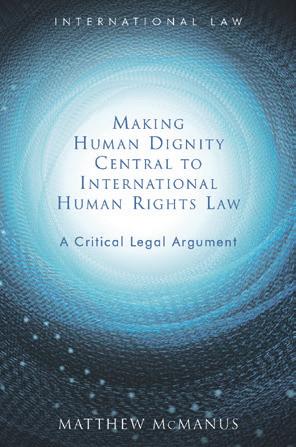
… continued in the book
This extract is taken from page 100, “Northern Ireland 1997–1999”. Photo: Chris McAndrew
Subscribe to Booklaunch now! Special autumn offer: 30% off www.booklaunch.london/subscribe From the same publisher
£3.00 Our price £22.00 inc. free UK delivery
Save
buy this book, visit www.booklaunch.london/sales or point your smartphone here AUTOBIOGRAPHY / UK
PAGE
POLITICS | ISSUE 5 |
10
Central banks increasingly use communication as a key lever of monetary policy. Gone are the days of ‘never explain, never excuse’, as put by the Governor of the Bank of England, Montagu Norman (1920–44). Today, central banks, especially in countries with developed financial systems, communicate regularly. This includes low-frequency communication about their policy frameworks and objectives, as well as high-frequency communication of views on current macro-economic conditions, forecasts related to output and inflation, and the rationale for policy decisions.
China’s unique institutional set-up
Compared with other public institutions, central banks are often at the forefront of communication. The People’s Bank of China (PBC) is no different. Over the past few years, it has strengthened its communication and is keenly aware of the heightened global interest in information about the country’s monetary policy. The increase in the number of press conferences and speeches has coincided with sharp stock market adjustments, changes to the exchange rate framework, interest rate liberalization, and greater financial market volatility in 2015–16. However, communication has not yet become as potent a policy tool as in many advanced economies (such as at the US Federal Reserve or the Bank of England) and some important emerging markets.
In many respects, China is at a communications crossroads, driven both by domestic and, increasingly, external factors. Compared with other central banks in advanced economies or emerging markets with modern policy frameworks, China’s central bank communication is more constrained. This is due to its unique institutional arrangements. In particular, China has multiple and overlapping objectives across institutions. The key constraints are as follows:
First, the PBC does not have full decision-making power over money supply targets and interest rate policy, and it has only limited operational independence at the monetary policy instrument level. Thus, the central bank is constrained in the information and forward guidance that it can convey. At the same time, the PBC drafts and executes monetary policy and has some operational independence, such as in setting shortterm interest rates through open market operations, short-term liquidity operations, or rates on standing and medium-term lending facilities. However, key decisions need to be approved by the State Council (China’s equivalent to a government cabinet). Approval is needed, for example, for changes in the benchmark interest rate, reserve requirements, and the setting of annual monetary aggregates. For these key policy instruments, the PBC usually proposes policy plans when key economic indicators such as GDP growth and inflation deviate from the targets set at the beginning of each year by members of the State Council, who then review the plans and make the final decision. These members also regularly approve the wording of the monetary policy stance.
Second, monetary policy decisions are the result of consensus-building among various stakeholders. State Council members have a broad range of economic and financial sector objectives, and requests for monetary policy changes can be submitted to the State Council not only by the PBC but also by other ministries or agencies. From the central bank’s perspective, therefore, both the outcome and the timing of important monetary policy decisions are uncertain, limiting the PBC from providing forward guidance.
Third, China’s monetary policy has numerous objectives. The PBC is not an inflation-targeting central bank and its objectives go beyond price stability. As the previous PBC governor stated, ‘the annual objectives of the PBC mandated by the Chinese government have been maintaining price stability, boosting economic growth, promoting employment, and broadly maintaining balance of payments.’ These multiple objectives often involve trade-offs and reduce transparency.
As China’s monetary policy framework is increasingly moving from using quantitative targets to a more pricebased framework, effective central bank communication is becoming even more important. While the process is not complete, the government in 2018 reiterated its commitment to deepen reforms to make both interest rates and the exchange rate more market based.
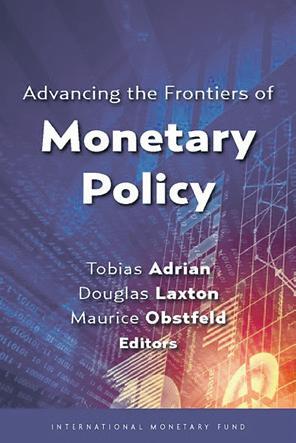
The emphasis on quantitative targets has declined. Since 1994, China has had quantitative monetary targets. However, reflecting financial innovation and a rapidly changing financial system structure, its intermediate quantitative monetary target, M2, is correlated
less and less with inflation and growth. In addition, the M2 outturn has deviated from the target over the past couple of years. As a further indication that emphasis on quantitative targets has declined, the 2018 Report on the Work of the Government (Annual Work Report) did not specify a specific target or projection for the monetary aggregate (M2) or for credit aggregates (such as total social financing). Compared to previous Annual Work Reports, this was an important step forward. Instead, the language was more vague: ‘Our prudent monetary policy will remain neutral, with easing or tightening as appropriate. We need to make sure that the value of M2 money supply, credit, and aggregate financing ensure a reasonable, stable level of liquidity.’
China’s monetary policy framework remains in transition and is currently a hybrid. On the one hand, despite formal interest rate liberalization, banks are still guided by corresponding deposit and lending benchmark rates; changes to these rates go beyond the authority of the PBC and require State Council consent. On the other hand, other policy rates, such as medium-term lending and the pledged supplementary facilities, as well as the use of instruments such as changes in required reserves, undermine transparency and complicate communication.
Policy Recommendations
The empirical analysis suggests that while the PBC has made a number of important improvements to its communication, the timing for further strengthening communication and undertaking associated institutional changes is propitious.
Institutional changes take time and require resources and political capital. But as China develops its financial system, particularly market-based financing, the need for transparent, clear, timely, and comprehensive communication will con- tinue to increase. Failure to address existing institutional shortcomings may limit the benefits of liberalization and slow economic development.
While larger institutional changes will take time, practical actions could improve communication in advance. In fact, these suggestions are better if implemented in advance of or at least in tandem with greater operational independence. For example, the Bank of England first published its Inflation Report in February 1993 when it did not have control over UK monetary policy. When it became operationally independent in June 1997, the central bank’s thinking and analytical tools were already well understood by the market. Lack of independence should hence not be viewed as a reason not to press ahead. As a matter of fact, certain ‘low-hanging fruit’ could be implemented quickly:
• Making information available in a timely fashion, in one place, and in English: This would go a long way and would also be consistent with the intention to make capital markets more attractive, as well as with China’s renminbi internationalization strategy, and its participation in global forums.
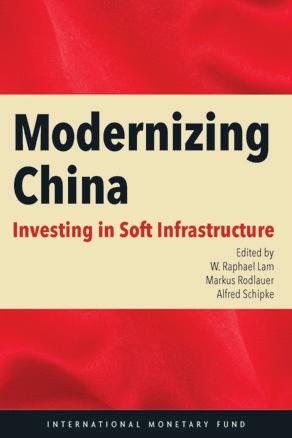
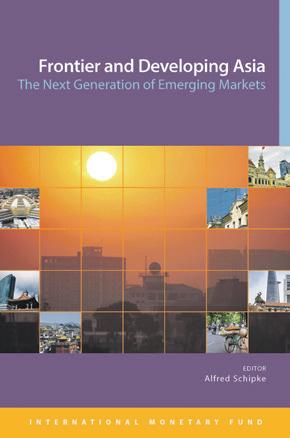
• Expanding the PBC’s economic forecasting capacity and publishing forecasts regularly, as well as making information available about the associated framework and models: This would reduce surprises, making monetary policy more predictable. While the PBC’s Research Bureau released economic forecasts in 2015 and 2016, each with a mid-year update, these were discontinued in 2017. Of course, strengthening forecasting would require appropriate resources and expertise; here the PBC could tap into the experience of modern central banks, as well as technical collaboration with the International Monetary Fund.
• Holding regular press conferences: A regular communication mechanism could reduce information asymmetry between the central bank and the market and allow markets to better interpret decisions and hence reduce uncertainty. As with forecasting, it is useful to begin these efforts even in advance of greater operational independence. Such a process will help the PBC learn how to communicate with the market directly and to build credibility that will serve it well, if it is—as is warranted—to become operation- ally more independent.
Conclusions
Central banks are increasingly using communication as a lever of monetary policy and are often at the forefront of communication. The same is true for the PBC, which has taken important steps to improve communication. Given China’s global footprint and stated policies to further liberalize its financial system and continue moving toward price-based monetary policy, further improvements in communication will be critical. This chapter assesses
The Future of China’s Bond Market Alfred Schipke, Markus Rodlauer, Zhang Longmei
Following China’s integration into the global economy four decades ago and its accession to the WTO in 2001, developments are now taking place in its capital and bond markets. In this IMF study, 34 specialists including staff of the IMF, People’s Bank of China and China Securities Regulatory Commission analyze topics relating to China’s sovereign, credit, local government and green bonds, and examine potential measures to improve market liquidity, risk pricing and investment
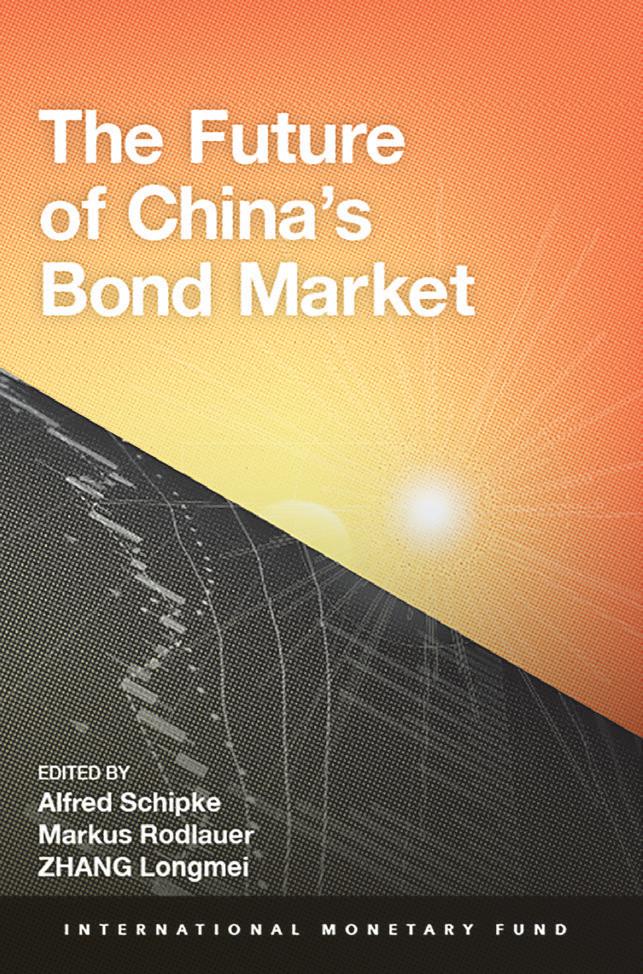
This edited extract is taken from Chapter 14, “Monetary Policy Communication: Frameworks and Market Impact” by Michael McMahon, Alfred Schipke and Li Xiang
… continued in the book Subscribe to Booklaunch now! Special autumn offer: 30% off www.booklaunch.london/subscribe From the same publisher Our price £32.95 inc. free UK delivery To buy this book, visit www.booklaunch.london/sales or point your smartphone here
International Monetary Fund (Washington D.C.), 418pp, Softback, 9781484372142, 152mm x 229mm, Tables and Figures, March 2019, RRP £32.95
CHINA / ECONOMICS | ISSUE 5 | PAGE 11
In The Story of Gardening, Penelope Hobhouse shows how an appreciation of style and technique from all over the world helps us understand how modern gardens have developed. Starting with the gardens of Mesopotamia and the ancient world, she charts the beginnings of botany and herbalism in the Classical world, and ideas of paradise in the gardens of Islam, eventually arriving at the transition from Naturalism to Modernism in the 20th century and the designers shaping gardening in the 21st century
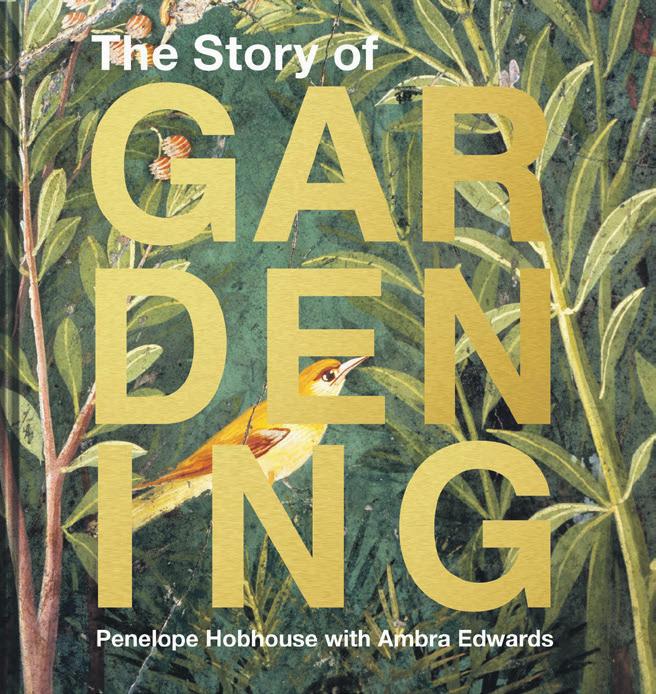
An ecological approach to planting has been familiar in Germany and the Netherlands since the 1930s. Building on the work of Karl Foerster, in 1947, Richard Hansen (1912–2001) established Sichtungsgarten (‘show garden’) on the Weihenstephan university campus near Munich, with 7 hectares (17 acres) of trial beds in which to study trees, shrubs, new rose varieties and especially, communities of herbaceous perennials, including the ornamental grasses beloved of Foerster. By growing them in environments similar to their natural habitats, he hoped to arrive at groups of plants that could grow successfully together with minimal maintenance. Hansen’s research was meticulous, exploring how small adjustments in soil, shade, water or temperature could affect the ‘sociability’ of plants, such that some might thrive and others be overwhelmed by their neighbours. In 1981 he published, with Friedrich Stahl, Perennials and Their Garden Habitats, giving detailed lists of plants, both species and cultivars, suitable for various situations. It rapidly became the perennial planter’s bible. Hansen’s first concern was the efficacy of his plant groups, but his successors at Weihenstephan have added an aesthetic dimension, with more colour theming and emphasis on form and texture.
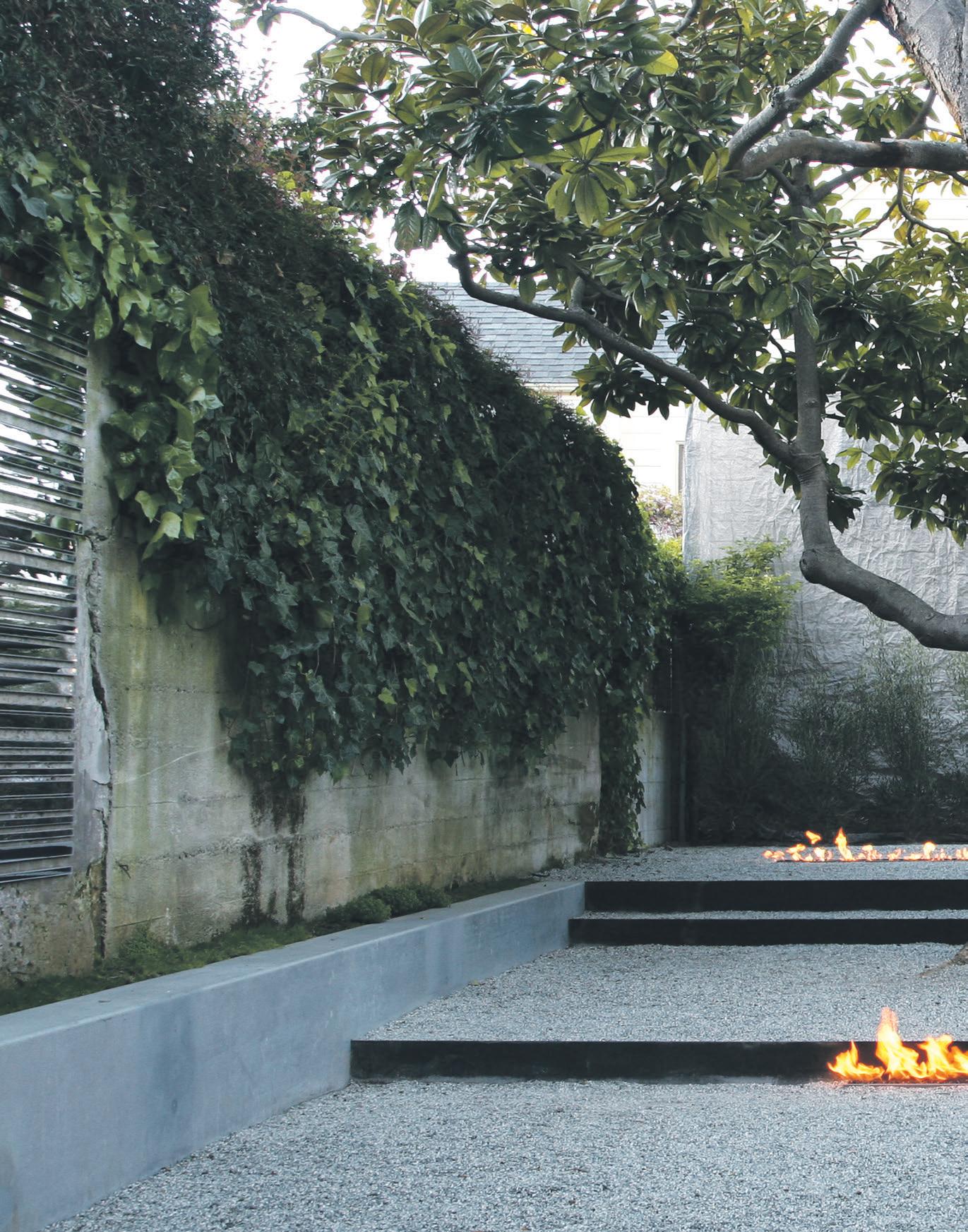
The purpose of Weihenstephan was to develop planting ideas for public spaces: there was a strong tradition in post-war Germany of mounting garden festivals as a vehicle for urban regeneration, leaving cities a legacy of creative planting. One such scheme was Westpark, Munich, laid out by Rosemary Weisse in 1983. For gardeners brought up in the Jekyll tradition, Westpark was a revelation. No longer confined in narrow borders, masses of perennials spread out over the best part of 0.4 hectares (1 acre), resembling a great meadow or a steppe, the elements chosen to perform over a long period and peaking in waves every three weeks – all with little more intervention than regular weeding.
Penelope Hobhouse is one of the most highly regarded exponents of horticulture and international garden history, creating gardens in Britain, France, Italy, Australia and the USA.
Between 1980 and 1993, she and her late husband restored and revived the Arts and Crafts garden at Tintinhull, a National Trust property in Somerset, and, most recently, she has been involved in the restoration of the Aberglasney Gardens in Wales.


Save £9.64
Our price £25.36 inc. free UK delivery
To buy this book, visit www.booklaunch.london/sales or point your smartphone here
The same dynamism characterizes Sichtungsgarten Hermannshof, another experimental garden in the spirit of Weihenstephan, proposed by Hansen and planted in the 1980s by one his students, Urs Walser. Again, the planting is based on communities occupying specific ecological niches everything from free-draining open meadow to ‘monsoon forest’. There are experiments in prairie planting, in finding tough perennials to compete with aggressive grasses, and in trialling different maintenance systems. Much effort is devoted to measuring the amount of maintenance required for different planting concepts: one of director Cassian Schmidt’s key aims is to find economically viable ways of bringing perennials into the city.
This is a familiar idea in the Netherlands, where for well over a century, efforts have been made to introduce nature into the urban environment. Amstelveen, on the outskirts of Amsterdam, led the way, with plantings of wild flowers not only in its heemparks or nature parks, but rolling out alongside roads and tramways. While these plantings were never exclusively native, they were certainly intended to convey the impression of the all-butlost uncultivated Dutch countryside. This did not deter plantswoman Mien Ruys (1904–1998), another disciple of Karl Foerster, from experimenting with loose, wild-looking groupings of non-natives to forge a unique synthesis between German-school naturalism and Modernist design at her garden in Dedemsvaart (see page 440).
From the same publisher
The artist Ton ter Linden, likewise, approaches naturalism not so much as an ecological but as a visual imperative, creating plantings of an apparently spontaneous (but in fact carefully contrived) beauty. He is one of the key figures associated with what has become known as the Dutch New Wave. Another was Henk Gerritsen (1948–2008), who cherished the delicate planting combinations of nature, but had little time for conventional gardens: ‘A baboon’s bum is colourful too,’ he memorably wrote. And then, by chance, he visited the Mien Ruys garden in July 1977: ‘It was a culture shock, a slap in the face ... I had never realized that something like that was possible with plants. I wanted to do this as well. But then differently.’ Within the year, he started making a garden with his partner Anton Schlepers at Priona, where he interpreted wildness in a new way not in plant choice, but in a reluctance to disturb the soil, a tolerance of weeds, and in welcoming the full cycle of life, including death and decay. This meant not only leaving dead stalks and seed heads to stand through the winter common practice in the Foerster tradition but also accepting the slug- tattered hosta leaf as part of the picture. Unlike the more expansive German schemes, Gerritsen combined loose, perennial, meadow-like plantings with the Dutch flair for crisply cut hedges.
 Pavilion Books (London), 512pp, Hardback, 9781911595748, 240mm x 254mm, colour illustrations throughout, September 2019, RRP £35.00
Pavilion Books (London), 512pp, Hardback, 9781911595748, 240mm x 254mm, colour illustrations throughout, September 2019, RRP £35.00
GARDENING HISTORY | ISSUE 5 | PAGE 12
TOP PICTURE: Henk Gerritsen rejoiced in subverting conventional gardening wisdom. (and amusing) Essay on Gardening, published shortly before he died. At Priona, his garden LOWER PICTURE: Created in 2007, Topher Delaney’s Line of Fire Garden, San Francisco,
In 1979, American designer Martha Schwartz (b. 1950) shot to fame with a garden she made in front of her Boston home as welcome-home gift to her husband. It featured a pair of (existing) box hedges, a quantity of shiny purple aquarium gravel and 82 bagels, dipped in yacht varnish to make them waterproof. Her husband was not amused (the couple later divorced) but the Bagel Garden became a cause célèbre in the press and launched her career.


It was followed soon after by a garden of Plexiglas and chicken-wire made for her mother, and by the rooftop Splice Garden in Cambridge, Massachusetts, a surreal collision of formal French and Zen Japanese traditions, reinvented with plastic plants, coloured glass and astroturf. The Splice Garden again caused outrage, but it was a perfectly practical solution in a space with no further load-bearing capacity, no soil, no water source and no maintenance staff.
Schwartz inhabits a flexible zone where urban design meets art installation. She makes gardens in inhospitable places where none might otherwise exist on roofs, in sunless canyons between buildings, in city squares where the tangles of infrastructure beneath the surface preclude the digging of holes. She uses largely non-living materials that can withstand the hard knocks of city living though recent projects have included more plants. And she makes spaces to make people smile. Over the last century and more, the garden has become very earnest: the plantaholic 19th century followed by utopian Modernism followed by science-based ecological planting. Schwartz, like Ian Hamilton Finlay (see previous page), revives the all-but-forgotten 18th-century notion that a garden can offer a laugh. And yet the wit and irreverence she has brought to her work over 40 years a theatre square in Dublin that mimics a celebrity red carpet, or an ‘oasis’ of palm trees in tyreshaped planters fronting an Art Deco, former tyre factory built in ‘Assyrian’ style mask a very serious purpose. By bringing colour and playfulness to urban life, she seeks to create places that people will engage with, use and love.
On a planet with scarce resources, the most efficient, most sustainable solution is for people to live at high densities in cities: Schwartz aims to make those cities more liveable. She uses earth mounds, benches and changes of level to break big spaces up into garden-sized niches where people can feel secure. She thinks about what users might want from a space a comfortable spot to sunbathe ... a place for kids to paddle while their mothers chat ... a quiet corner away from the office to eat a sandwich.
For all that she declines to be hidebound by the past (she has no time for the faux-pastoral of Olmsted), she is alive to the tradition and culture of the sites where she works. In a new square in Abu Dhabi, the air is cooled by narrow water channels as in the first desert gardens, while green ‘dunes’ keep out the fierce desert winds, their planting using water-saving green wall technology recalling the patterns of Bedouin textiles. A recent Beijing residential scheme has the look of rice paddies, but the water channels that delight the local children also serve to manage storm-water and to cool the air. Her practice, for all its ‘artiness’ the mist machines, neon lighting and dayglo paintwork regularly wins awards for sustainable design.
Schwartz is, of course, by no means the only designer to bring artifice and fantasy to the modern garden. Antonio Gaudí (1852–1926) installed colourful mosaic dragons in Barcelona’s Parc Güell as early as 1900, while in the Canary Islands César Manrique (1919–1992) made gardens out of lava rock, whitewash and succulents, and decorated them with dazzling murals and kinetic sculptures. And it is hard to think of anything more artificial or unsustainable than the Dubai Miracle Garden (opened 2013), where 45 million bedding plants are massed to create pyramids, hearts, teddy bears, castles, even a jumbo jet.
Closer in spirit to Schwartz are a number of conceptual designers such as Claude Cornier and Topher Delaney, who share Schwartz’s distrust of naturalistic landscapes and romanticized nature, which they view as fundamentally dishonest since all man-made landscapes must be artefacts. Delaney has made shopping-mall gardens with planters that look like carrier bags, a rooftop garden clad in blue neoprene and inspiring hospital gardens packed with elements designed to stimulate play. An early garden, in San Francisco, was a Garden of Divorce, featuring jagged shards of concrete interplanted with blood-grass.
… continued in the book
Penelope Hobhouse with Ambra Edwards
The Story of Gardening
page 12: “Experimental Planting in Europe”; page 13: “The Playful Landscape”
This extract is taken from passages in Chapter 14: “Visions of the Future”—
GARDENING HISTORY | ISSUE 5 | PAGE 13
wisdom. ‘What is straight should be curved, what is curved should be straight,’ he wrote joyfully in his seminal garden in the Netherlands, dense naturalistic perennial plantings were set off by some very eccentric topiary. Francisco, USA, sets a single magnolia tree between two lines of flame.
Photo by Marcus Hanschen
Photo by Rob Whitworth
Buzz! Inside the Minds of Thrill-Seekers, Daredevils, and Adrenaline Junkies Kenneth Carter

Two friends are at an amusement park and decide to take a ride on the Twisted Cyclone roller coaster. Two minutes and forty-four seconds of twists, dives, and jerks later, the ride is over. When they emerge, one is terrified, the other is exhilarated. The one who is terrified is breathing hard, his legs are shaking, and his heart is pounding. He did not have an enjoyable experience. The other looks almost tranquil in her satisfaction and is ready to go again, except this time she wants to ride in the front car. Two people, same situation, totally opposite experiences. Why does this happen? How can two people have such completely divergent responses to the same stimuli?
Of course, you can say, ‘They are different.’ But how are they different? What makes them so different? These are the kinds of questions that psychologists bump up against all the time. On the one hand, I’m quite aware that people are unique—each of us has our own physiological, psychological and cultural influences and predispositions that drive what we think and what we do. On the other hand, there are patterns to these thoughts and behaviors. Psychologists are always looking for ways to describe, explain, and even predict what people do; it’s in the job description. I’m looking for the patterns in the seemingly unpredictable mélange of human behavior, not only to understand people, but also to help them understand each other and even themselves.
I’m that guy who hates roller coasters. They aren’t fun for me. I’ve ridden them many (many) times with friends, so it’s not simply a matter of exposure. Sure, I can tolerate them and I ride when I’m pressed, but it’s not fun. How someone could get off a roller coaster and not only be ready to ride again, but also actually feel happier, even more tranquil after the ride, has baffled me for years.
What’s more, I am a person who is relatively staid. I’m a professional academic who spends the vast majority of his time in the library, behind the computer, or in front of students lecturing. My life is ordered. I wake up at the same time and go to sleep at the same time pretty much every day. I don’t seek out new experiences. I crave calmness.
The mind of the extrovert can be hard for the introvert to understand, and harder to pin down, because extroverts have got other things to do than wait around while introverts assess them. In this book, psychologist and self-confessed introvert Kenneth Carter looks closely at a mentality that leaves him bewildered—that of the sensation-seeker

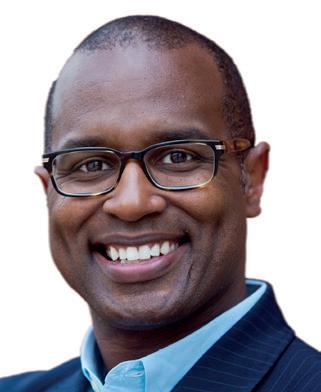
Kenneth
Yet, I see people who are almost perpetually and intentionally drawn not only to literal but also to metaphorical roller coasters. From the outside they seem to seek out chaos: students who change their entire course schedule the morning of the first day of classes; clients who propose marriage on the second date; friends who leave wonderful jobs to move to a different city on a whim.
Take for example my friend Andrew. Andrew has an industrial-sized case of wanderlust. By the time Andrew was 27 he’d moved 13 times (to three different countries), been in nine different relationships, and had six different careers. When I asked him if moving so many times was difficult, he laughed. ‘No, it wasn’t a challenge at all. It was an adventure.’
I’d met so many people like Andrew in my life that I began to wonder what they had in common. Are there people who are chaos junkies? Is there some psychological model to explain why some people are attracted to drama?
Just as interest in mind control had inspired research in sensory deprivation, other-worldly concerns also helped shape the methods of this research. Zuckerman’s lab adopted the Ganzfeld Procedure, a method of approximating sensory deprivation, to carry out some of the study. Wolfgang Metzger created this procedure in the 1930s, hoping it would release extrasensory perception abilities hampered by outside stimulation. It casts subjects into a fuzzy nothingness, into what Metzger called unstructured sensations. Cut a ping-pong ball in half and tape the halves over your eyes while listening to static in headphones if you are curious about what it feels like.
Zuckerman’s curiosity was piqued by how people reacted to the loss of sensation. For the first hour or so, all of the research subjects simply sat in the nothingness. But after that, things changed. Some sat quietly for hours upon hours. Others fidgeted, squirmed, and became bored and anxious, among other things.
Strangely, no existing psychological test could reliably predict how subjects would react to sensory deprivation. Zuckerman and his colleagues speculated that some people were high sensation-seekers and some were not. High sensation-seekers, they figured, needed high amounts of stimulation and were irritated by sensory deprivation. Meanwhile, low sensation-seekers weren’t bothered by the lack of stimulation.
Yet even though Zuckerman’s team theorized that sensory deprivation irritated high sensation-seekers, exactly this group of people signed up for the experiment in droves. These prospective subjects surprised the researchers not only because they were high sensation-seekers who should have found the study boring and frustrating, but also because they were non-conformists, a group the researchers would never have imagined to be interested in a tedious scientific experiment. These were the early 1960s, where combed slick, closely shorn hair was the norm for men—yet many guys with motorcycle jackets and long hair were eager to volunteer for the study. Why would an experiment in dullness bring the ‘hippies’ out of the woodwork? The researchers were stumped.
Apparently, information had circulated to these eager volunteers: the sensory deprived experience had induced hallucinations for some of the early participants. The newcomers were there to seek the sensation of the hallucinations, not for scientific advancement or for financial compensation.
Zuckerman realized that sensation-seeking was not only a quest for external stimulation as he originally thought. It seemed as though high sensation-seekers wanted unique experiences, too. He asserted that sensation-seekers are sensitive to their experiences and choose stimulation that maximizes them.
If you think of sensation-seeking as a continuum, high sensation-seekers are at one end. They are always seeking new experiences, even if (and in some cases because) they come with risks. Low sensation-seekers, on the other hand, may actively avoid new experiences. Most people, as you can imagine, fall somewhere in the middle, seeking out new experiences unless there’s something to lose by doing so.
a risk marker for suicidal behaviors in adolescents
Save £1.80
Our price £13.19
inc. free UK delivery
To buy this book, visit www.booklaunch.london/sales or point your smartphone here
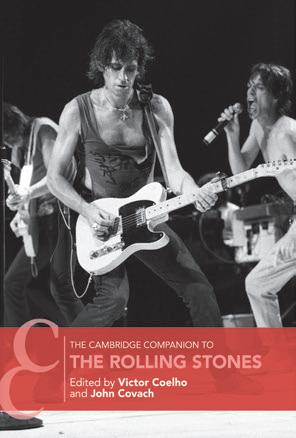
The Founder of Scientific Research on High Sensation-Seeking
Scientific research on sensation-seeking didn’t begin until the late twentieth century, and it didn’t start in the base camps of Mount Everest or on the cobbled streets of Pamplona or even the racetracks of Talladega. It began in a dark room filled with nothing—literally. Researchers weren’t trying to explain mountain climbing and kayaking, or running from bulls, or race-car driving. They were trying to get to the bottom of mind control.
Shortly after the Korean War, there were reports that the Chinese government was using ‘brainwashing’ techniques involving sensory deprivation for torture and mind control. Canadian psychologists and the Canadian government were eager to understand these brainwashing techniques, so the government began funding psychological research on sensory deprivation.
Among those embarking on this research were Marvin Zuckerman and his lab at McGill University in Montreal. In the typical experiment in Zuckerman’s lab, participants would spend hours in environments where they could hear or see very little. In some cases, people would sit alone in a dark, sound-dampened room with nothing to do. They could leave only to get a lunch of cold sandwiches or to use the bathroom.
Zuckerman created a sensation-seeking scale to assess how much of a sensation-seeker someone is overall and how they score in each of four subtypes of sensation-seeking. Zuckerman’s sensation-seeking scales have evolved over time from a general scale in the early years to the current, more complex version (known as Form V).
It’s worth noting that some people have taken issue with Zuckerman’s research. For example, the quiz is in what is called a ‘forced choice format’—this means you must pick between one of two statements that best describes you (‘I like “wild” uninhibited parties’ or ‘I prefer quiet parties with good conversation’). Researchers like Jeff Arnett have suggested this forced choice format doesn’t allow for any shades of gray and that Likert-type formats where you judge each statement based on how well they describe you (i.e., ‘describes me very well’, ‘describes me somewhat’, etc.) would be more effective, but the research says they don’t seem to work any better (statistically) than Zuckerman’s original scale.
Probably the most valid concern about Zuckerman’s research centres on the confounding factors that are built into the scale depending on how it’s used. For example, research has shown that high sensation-seekers have a higher tendency to try recreational drugs, like marijuana and cocaine. If you’re trying to figure out whether or not high sensation-seeking and drug use correlate, you
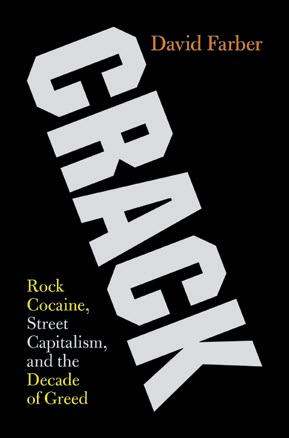
… continued in the book Subscribe to Booklaunch now! Special autumn offer: 30% off
the same publisher
This edited extract is taken from the start of the Preface and part of Chapter 1: “What is Sensation-Seeking?”
www.booklaunch.london/subscribe From
Cambridge University Press (Cambridge), 235pp, Softback, 9781108738101, 152mm x 228mm, 21 October, 2019, RRP £14.99
Carter is Charles Howard Candler Professor of Psychology at Oxford College of Emory University, where he teaches advanced courses in clinical psychopharmacology, research methods and personality. Before arriving at Emory in 1994, he served as a senior assistant research scientist in the Epidemic Intelligence Service of the Centers for Disease Control and Prevention, with a research focus on smoking as
PSYCHOLOGY | ISSUE 5 | PAGE 14
Over the past few decades, the study of happiness has sought to bring clarity and empirical legitimacy to a subject that has traditionally been the domain of philosophy, theology and self-help.
In the 1970s, with his seminal paper on the happiness of lottery winners and people with disabilities, the psychologist Philip Brickman paved the way for what became known as the academic field of ‘positive psychology’—the study of what makes people mentally healthy, beyond the absence of mental illness.
Around the same time, the economist Richard Easterlin compared the gross domestic product (GDP) growth of nations with their average levels of happiness. He showed that the latter does not necessarily follow from the former, which paved the way for the academic field of ‘happiness economics’—the study of what makes people better off, beyond the accumulation of financial wealth.
Together, positive psychology and happiness economics form the backbone of the ‘study of subjective wellbeing’, which is often referred to as the ‘study of happiness’. This burgeoning interdisciplinary field of academic study also includes research from sociology, anthropology, critical studies, politics, evolutionary biology, affective neuroscience and philosophy.

The study of happiness has also attracted the attention of policy makers around the world. In 2010, the UK launched its ground-breaking wellbeing programme, which aims to monitor national progress beyond measures of GDP, and assess and develop policy partly on the basis of its impacts on people’s wellbeing. In 2011, the United Nations followed suit. The UN General Assembly adopted a Bhutan-sponsored resolution that called on member states to measure and promote national wellbeing. The UN now produces an annual World Happiness Report, which includes a global ranking of countries on happiness.
These global happiness rankings sum up the optimism shared by many happiness researchers and policy makers. Typically, Scandinavian countries top the list. These countries are prosperous, healthy and trusting. Corruption is low. Generosity is high, individuals feel empowered to make key life choices. The social welfare state limits the inequalities between wealth and poverty, and delivers public services to all citizens. This reflects the six conditions that explain most of the variety in life satisfaction scores between the most and least satisfied countries in the world. According to the World Happiness Report, average national happiness is determined by economic prosperity, physical and mental health, political freedoms, social support, generosity, and social trust.
On the basis of such findings, proponents of happiness stress that, although economic prosperity matters, other key conditions matter too, such as health and social capital. Other findings from the subjective wellbeing literature support this view. When it comes to people’s level of happiness, close relationships are often cited as the most important factor. Marriage makes a lasting positive difference to people’s happiness, whereas divorce has the opposite effect. Being religious also has a positive impact—a finding that tends to be put down to the benefits that come from being an integrated member of a community. Last, one of the most harmful factors for people’s happiness is unemployment. Beyond the financial insecurity involved, unemployment can often be socially isolating.
The study of happiness highlights just how important non- material conditions can be in our lives. Relationships matter. Health matters. For instance, according to the UK national wellbeing programme, citizens who reported having bad health were 13.6 times more likely to report having the lowest combined levels of life satisfaction, happiness, anxiety and sense of worth. This is a big factor—one that dwarfs the impact of other conditions, such as people’s levels of income. Happiness research shows the importance of the things we may have sacrificed in our pursuit of financial and material wellbeing.
In general, the happiness literature has identified five major ingredients for happiness:
• Health and longevity
• Close relationships
• Community belonging
• Purpose and achievement
• Financial and material wealth
It is hard to imagine being happy without these conditions in place. Nations are right to promote these things
in their public policies, and individuals are right to try and achieve them in their own lives. The question is, even if these things make us happier, will they make us happy? Will they provide us with a lasting sense of meaning and satisfaction?
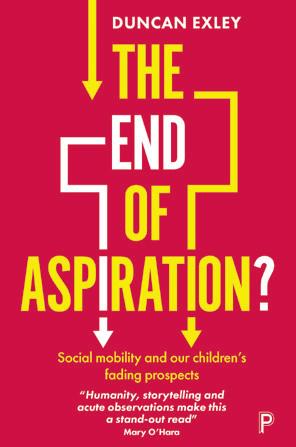
One of the most interesting things about the study of happiness is that it has not just identified the conditions that make people happier. It has also identified the conditions that don’t make people happier in the long run. It turns out that increases in income, above a certain level, do not make people lastingly happier. Nor does educational attainment. In fact, the list of things that do not make people any happier in the long term is potentially far greater than the list of things that do.
Happiness researchers initially explained these findings with reference to the ideas of ‘hedonic adaptation’ and ‘set-point theory’. Hedonic adaptation is the idea that, once we have achieved a particular state of affairs—a new promotion, a fancy car, getting married and so on—we soon get used to it and move on to the next achievement. We do not wake up months after receiving our promotion still feeling the same amount of happiness we did when we initially got it. This is an instance of the more general process of psychological adaptation—the more times we are exposed to something, the more it fades into the background. When we walk, for example, we do not feel all the sensations going on in our feet. We have got used to these sensations—walking becomes something we do largely on autopilot. The same goes for the circumstances that make us happy. After a while, we cease to pay much notice to them.
The phenomenon of hedonic adaptation inspired setpoint theory—the idea that people have fixed levels of happiness, which are determined more by their genes and their personality than by their circumstances. This goes back to Brickman’s influential paper on lottery winners and people with disabilities. He found that, around six months after either winning the lottery or becoming severely disabled—which, not surprisingly made the former happier and the latter unhappier—people’s level of happiness went back to what it was beforehand. Although we think that these conditions would have a lifelong impact on our level of happiness, Brickman found that, in reality, the impact these events had on people’s happiness was short-lived. This study was followed by a number of other studies that found the same thing: no matter what happens to us, our level of happiness eventually goes back to normal.
Set-point theory is no longer widely held by happiness researchers. More recently, a number of important exceptions have been found, showing that, even if we adapt to most conditions, we do not adapt to everything. Marriage, divorce and employment, for instance, all have a lasting impact on people’s happiness. The five major ingredients of happiness listed above are all made up of conditions that people do not entirely adapt to.
But the influence of set-point theory lives on. It showed that happiness is not straightforwardly a result of our circumstances. Our psychology plays a big part in what makes us happy or unhappy in the long term. Many of the things we think will make us lastingly happier do not. And many of the things that do make us happy in the long run, do not make us as happy as we think they do. Happiness research has shown that nothing makes us live ‘happily ever after’.
Psychological adaptation makes sense when achieving a stable state of affairs is impossible. Consider again, for example, that new promotion. It may be that our new promotion signifies the pinnacle of our career—there is nowhere else to go, we have achieved everything that we could possibly achieve. More likely, however, is the fact that our promotion is the next step in a long line of potential improvements. In fact, if we fail to work harder, we may even lose our newly achieved work status to someone who would like to be where we are. We must continue to improve our situation because improvements can always be made and staying still may not be an option. It makes sense, then, to quickly adapt and set our sights on how to do even better.
One way of making this point is that psychological adaptation reflects our insecurity. Our circumstances are never entirely safe or stable. We must continue to advance to make them secure as we can. And we must continue to stay vigilant—to protect ourselves from any potential threats.
This explains why most conditions do not make us lastingly happier or unhappier and why some do. When we achieve
The Happiness Problem Sam Wren-Lewis
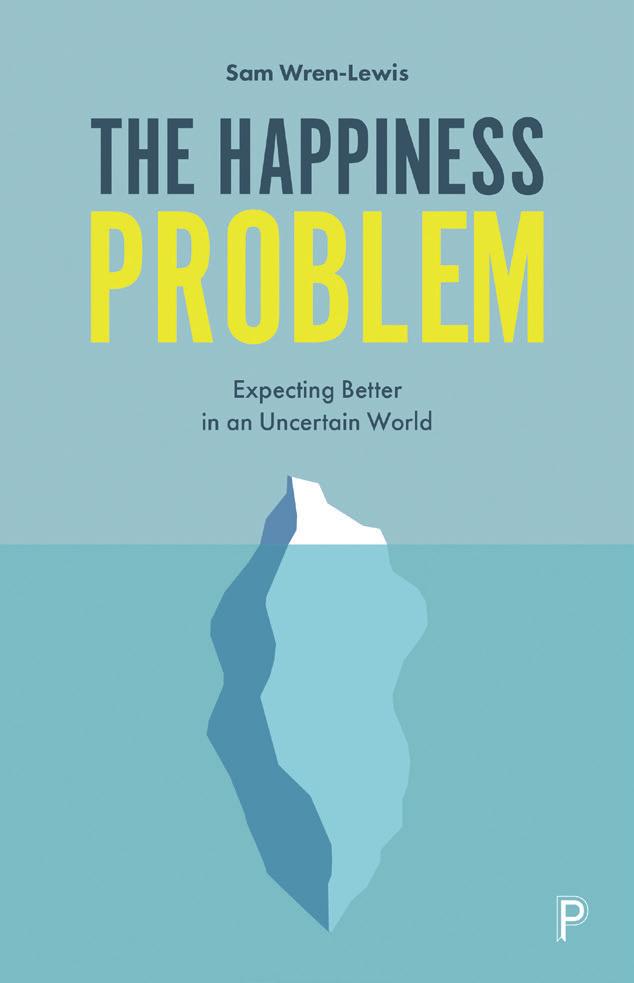
In our cossetted First World, we invest a lot in the idea of control, and imagine that happiness is proportional to how much we can perfect our lives—the perfect job, the perfect partner, the perfect family, the perfect house. In The Happiness Problem Sam WrenLewis argues against consumerist simplicities and talks constructively about how the embrace of insecurity and uncertainty provides a more reliable basis for a satisfying and compassionate life
Sam Wren-Lewis is a wellbeing consultant and former Head of Research and Development at the UK charity, Happy City, which works with local authorities and other organisations to improve the quality of life for all scales of community. He has a PhD from the University of Leeds on the philosophy of happiness and has written papers on the topic. His website is www.happinessproblem.com
Save £1.56
Our price £11.43 inc. free UK delivery
To buy this book, visit www.booklaunch.london/sales or point your smartphone here
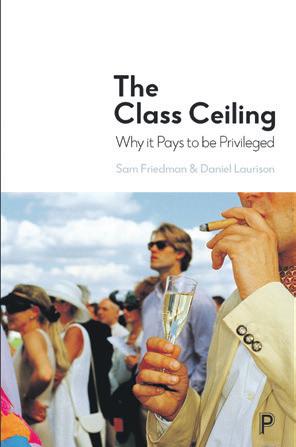
From
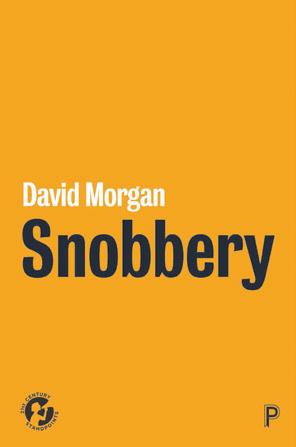
now!
Subscribe to Booklaunch
Special autumn offer: 30% off www.booklaunch.london/subscribe
the same publisher This extract comes from Chapter 1
… continued in the book
PHILOSOPHY / PSYCHOLOGY | ISSUE 5 | PAGE 15
Expecting Better in an Uncertain World Policy Press (Bristol), 232pp, Paperback, 9781447353553, 138mm x 216mm, November 2019, RRP £12.99
As Others See Us Neil MacGregor
Within the EU, the United Kingdom was for years Poland’s closest ally, according to Radosław Sikorski, former Minister of Foreign Affairs and current MEP. ‘Britain was inside the EU for us what the United States was in NATO—namely, the country that most consistently and most sympathetically acted on behalf of enlargement and of our inclusion back into the Western family of nations that we felt we belonged to all along. And so we now have this paradoxical situation in which Poland is staying and Britain is leaving.’
With the United Kingdom facing potentially momentous changes, historian and broadcaster Neil MacGregor talks to leading opinion formers in Germany, Egypt, Nigeria, Canada, India, Singapore, the USA, Spain, Australia and Poland to find out how Britain is seen in countries where it has had significant ties in the past. Throughout his travels, he uncovers bemusement and frustration, as well as admiration and affection, as Britain re-evaluates its relationship with Europe and the wider world. Here he talks about Polish reactions to Brexit
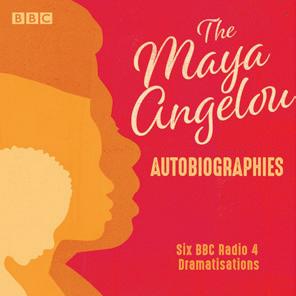

And that, of course, brings us to Brexit. ‘Well, first of all, we feel guilty for Brexit,’ says Sikorski, who settled in the UK in 1981, went to Oxford, joined the notorious Bullingdon Club and became friends with David Cameron and Boris Johnson, ‘because at the cutting edge, Brexit was about sovereignty—misunderstood, in my view—and migration; and the Polish influx of about a million people happened because of a very friendly decision by the Blair government in 2004 for Britain to be the only country in the EU not to exercise a seven-year derogation on opening the labour market, which meant that everybody and his brother in the ten new member states who wanted to try their luck abroad didn’t spread themselves evenly over the entire European Union but came to Britain, which was wonderful for us, because Britain is a very welcoming place, you teach a global language, people like the atmosphere at work. But I can imagine that in some communities outside London, it changed the ethnic composition rather rapidly and so some majorities felt threatened.’
So how do Poles view Britain’s continuing intense debate about its relationship with the EU? ‘When I lived in Britain in the 1980s,’ says Sikorski, ‘I regarded myself as a Thatcherite and also as a Eurosceptic. That’s because I read the British press and I believed what was in it, and it was only when I arrived as a minister in Brussels that I learnt how the EU actually works. If you read British newspapers you would have the impression that a European directive is cooked up by faceless burocrats in Brussels and imposed on the member states, which is completely untrue. European directives are usually written by the civil service in Brussels at the behest of the member states and then require usually unanimous agreement, but at least majority agreement or double majority agreement, between the Commission, the Council—which is to say, the member states—and now approval of the European Parliament. What could be more democratic than that?’
So Sikorski’s view is that the EU was systematically misrepresented in the British press? ‘In the British press, and not a sufficient number of mainstream British politicians took it upon themselves to tell the truth about the advantages of membership and how EU law is actually made. I also blame somewhat the European Commission, for not doing in London from the representative office of the Commission what the Commission does in all the other capitals, which is an outreach programme, batting for the Commission and for the EU.’
‘In this conflict between European institutions and Britain,’ says Paweł Ukielski, political scientist and Deputy Director of the Warsaw Rising Museum, ‘most Poles are supporting Britain because they oppose European administration, but I would say that in Poland people were quite surprised that the British, who are perceived as a very well organised democracy, a system that is looking forward, who as Lord Palmerston said have no eternal friends or enemies, just eternal interests, did not make the decision with any plan. Very often it is Poland that is perceived as politically romantic and has no plans for the future—“let’s do it and we’ll see how it turns out!”— and some Poles with surprise see that now the British did the same.’
It is a point taken up almost word for word by ‘Radek’ Sikorski. ‘We’ve always admired Britain for its pragmatism, for its common sense, for its sticking to the practicalities of life. Historically speaking, we’ve been the romantics, you’ve been the pragmatists and now I have the feeling that it’s the other way round.’
And what does that mean for Britain, and how do you see Britain in that light? ‘It seems to me that there is a sudden frivolity about the choices that have been made. There’s a certain reluctance to confront the real choices, namely that there is a trade-off between what they call “sovereignty” but really is not sovereignty because by the very act of holding this referendum you’ve proven
that you’ve been sovereign all along. You know, I can tell you about not having sovereignty. If in the 1970s or 80s here in Poland we demanded a referendum on membership in the Warsaw Pact, you know what would have happened to us. That’s what not having sovereignty means. With this act you’re just swapping one bundle of treaties for another bundle of treaties, and the point is that every treaty and every bundle of treaties has its advantages and its disadvantages, and you have to accept that there are trade-offs between liberty to do as you please while remaining sovereign and banging together for the common good. … And that’s the classic European bargain: you get a little bit less freedom of action for huge joint advantages, and if Britain doesn’t face that reality then I fear we will have a messy divorce, a messy resignation from our club, and an unfair blaming of the EU for what’s a mechanical outcome of British decisions.’
Because our contributors come from opposite ends of the political spectrum in Poland, I hadn’t expected that all of them would see Brexit in the same way—as a break with centuries of British political behaviour, and as an emotional rather than a pragmatic decision. ‘It was an astonishment to many Poles who’d been considering British democracy as so old and so traditionally rooted that it’s impossible to shake it easily, and we see now that it is very possible to shake it,’ says Oscar nominated film director, Agnieszka Holland, ‘and it was a great failure of the British political class and British democracy.’
‘For 500 years,’ adds Radek Sikorski, ‘your national strategy was to prevent the continent from uniting to the exclusion of Britain: that was what the Seven Years’ War was about, the Napoleonic Wars, the First World War, the Second World War and the Cold War—and now you’re doing it voluntarily?! Why would you do that?’
‘You know, there’s a sense that this is an event from Monty Python,’ says writer and rights activist, Agnieszka Graff. ‘You’re cutting yourself off, you’re digging that channel deeper, and that’s an effort to go back in history to a time that’s just no longer there—it’s just not going to happen. Europe is not going back to individual countries having their own little individual borders: it just means Britain is really floating away as an island.’
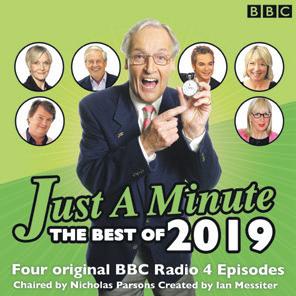
So that rhetoric of ‘Britain alone’, Britain being able to stand alone and flourish alone: how does Radek Sikorski respond to that? ‘Well, you can be alone but I don’t remember 1940 and 41 as being a very happy time for Britain. I mean, allies are difficult and cumbersome and annoying but life for countries without allies is even worse.’
One thing that’s become clear in all these programmes is how far Brexit is understood not just in terms of the ambitions of the United Kingdom or the strengths and weaknesses of the EU but as part of a world-wide trend towards the politics of emotional rhetoric and simple solutions. ‘What happened in most countries where there was this rise of right-wing populism,’ says Agnieszka Graff, ‘is that the right-wing populists knew how to use emotions, and the people who opposed them insisted on being rational. And I think we are living in a populist moment where that’s not how you do politics, and I think a lot of British people were surprised by the effects of that vote; I wasn’t, maybe because we were already deep in our own populist moment at the time.’
‘All those populist revolutions,’ says Agnieszka Holland, ‘and all those irresponsible leaders like Donald Trump, and Kaczyński and Orbán in our places, are the response to the deeper fears of the changes which modernity is bringing to the present, and the populists are the only ones who came with some kind of simple solution. It’s terrible: you are losing your power, you are losing your work to globalisation, to migration, to gender changes, to the internet revolution, and now “we have the solution for you”: it will be to build walls between sexes, between countries, between nations, between races, and those will preserve your traditional values and your traditional way of living—which is of course an illusion, because those problems are global and are impossible to be solved by national egoisms.’
What I have learnt from this series is that since the Referendum of 2016, the respect which the world had for our parliamentary democracy, our uniquely stable constitutional system and our steady pragmatism in foreign affairs has been much diminished. Whatever the future holds, the world now sees a Britain that it did not know before, an unsettled Britain that appears to have been cut adrift from its constitutional moorings. It’s just as clear that, in Poland at least, we have also lost much goodwill.


BBC
This edited extract is taken from the end of the final programme, on Poland, in the BBC Radio 4 series, “As Others See Us”, first broadcast 6 September 2019 … continued in the book
Audio (London), CD-Audio, 9781787537361, 138mm x 141mm, November 2019, RRP: £30.00 Also available as a download: 9781787537378
Subscribe to Booklaunch now! Special autumn offer: 30% off www.booklaunch.london/subscribe From the same publisher Save £3.60 Our price £26.40 inc. free UK delivery To buy this audiobook, visit www.booklaunch.london/sales or point your smartphone here
Neil MacGregor was the Director of the British Museum from 2002 to 2015. He was previously Director of the National Gallery in London from 1987 to 2002. His books and BBC Radio series include A History of the World in 100 Objects, Shakespeare’s Restless World, Germany: Memories of a Nation and Living with the Gods
POLITICS | ISSUE 5 | PAGE 16
Visiting the London School of Economics to open a new building in late 2008, her Majesty the Queen turned away from a poster presentation chattily entitled ‘Managing the Credit Crunch’ and turned her attention to the assembled crowd of financial specialists.
‘If these risks were so large,’ she asked, gesturing with a gloved hand towards the poster with its colourful graphics showing the speculative causes of hundreds of billions of wayward dollars, ‘how did everyone miss them?’ In saying so she voiced what millions of her subjects, who’d have to pay for the mess, had been wondering. The Queen asked the best questions.
Her audience of experts shuffled uncomfortably— prizewinning schoolboys caught unprepared by the teacher. One of them offered a mumbled answer about the global reliance on subsidiary layers of assurance. When the Queen replied—‘awful’—no one was sure if she was passing judgement on the answer, the man who gave it, the others looking sheepishly at their shoes, economists in general, the financial crisis overall, or the bankers who had caused it. She was right, though. It was awful.
The Mounts’ House, Chelsea, London, June 2006 ‘It’s like being the ringmaster of a small circus,’ Peter muttered to himself as he ploughed through his emails at 11pm. ‘A small travelling circus with a single star act. A dancing elephant or something. Petunia the Performing Pachyderm.’
Being chief executive officer of a big company, thought Peter Mount, who was CEO of a small one, must be like being the ringmaster of Cirque du Soleil: a great show, many stars, everyone a professional, performance assured—and no animals. But here he was, hoping Petunia would divert attention from the toothless lion and the seal that kept dropping the beach ball. Was the CEO of Rio Tinto, he wondered, copied in on emails about random vandalism at his mines? Did the guy in charge at Newmont Mining have to check the arithmetic in the spreadsheets used by his finance team? Did they personally proofread legal documents and still find typos in the final versions? He didn’t think so. Rather self-servingly, Peter thought bosses of smaller companies ought to be paid more than those of big ones, protected as they were by extended teams of professionals and cosseted by supportive staff and advisors.
Rareterre plc, where Peter was in charge, was a small mining company, not a travelling circus. For Rareterre, the only star act—the dancing elephant—was the rare-earths mine at Trillium Lake near Mount Hood in Oregon, USA. The company was quoted on the London Stock Exchange, the Alternative Investment Market part, one of a legion of small companies that had the nerve to behave like larger ones in exchange for exposing their every move to open scrutiny. The shares in the business were tradable daily on the market. One consequence of this was that much of Peter’s time was spent dealing with the demands of the stock market—supplying shareholder information and complying with stock exchange rules on corporate governance, the perpetual nagging of implied mistrust.
Rareterre’s business was hunting for and extracting obscure metals in far-flung parts of the world. It was fortunate that its biggest, most promising asset was the Oregon mine. Peter had spent enough of his life in frozen deserts and flea-bitten regions of bewildering instability and rampant corruption to appreciate a location where the greatest risks were black flies and boredom. ‘We have some of the world’s most valuable empty holes in the ground!’ Frits van Steen, the Dutch-born chairman of the company, was fond of saying until someone pointed out that this might give the wrong impression. Based upon geological surveys and confirmatory drilling, the company’s shareholders were speculating that Rareterre would strike not gold but something more useful—rare earths of increasing importance in modern technology: the magnets used in motors and hard drives, the special glass in mobile phones and personal music devices, and all the ‘green tech’ used in Toyota Priuses, wind farm turbines, solar panels and giga-batteries.
Ivy Mount had been married to Peter for 24 years, since she was 23, he 25. She was well-preserved and slim, despite her love for good food. Of average height and weight, with average brown hair and average good looks, Ivy was nonetheless a striking woman. She had the facial symmetry that is universally admired, blem-
ish-free skin and attractively regular teeth. She was of above-average intelligence, had achieved a 2:1 in zoology from Cambridge without any great effort and had a naturally scientific mind. On leaving Cambridge and moving in with Peter, she had joined the Treasury as a statistician, where she remained, perfectly content, until she became pregnant with Harry, the first of her three children. When the French side of her family— her mother’s—expressed their surprise at her career choice, she would joke about the value of a degree in zoology when working in the British civil service.
The truth was, Ivy was not particularly ambitious, and Harry’s arrival seemed to confirm something she always suspected: she was programmed to be a mother. Some of her friends from the Fabian Society were horrified by this treachery against years of militancy and the possibility of workplace parity with those whose biology did not support gestation. Even more horrifyingly, Ivy’s children had all gone to fee-paying alternatives to state education, more expensive each term, boarding from their early teens.
Ivy had had plenty of opportunities for infidelity, including some surprisingly salacious approaches from some of Peter’s friends, but despite his frequent long absences, she’d remained faithful to him for all those 24 years. She was a virgin when they’d met and fallen in love, making her a rare example of a textbook Catholic, a one-man woman with little from the normally rich seam of sexual guilt to offer the priest at weekly confession.
What she might have confessed to, however, was her materialism. Oddly, considering her soft-left views, Ivy was an enthusiastic, free-spending, brand-name snob—a fact that quickly became evident in most social situations to everyone except herself.
The biggest difficulty posed by Ivy’s ‘lifestyle’, as she called it, was that Peter’s income from Rareterre was not sufficient to fund it. She had inherited a modest amount of money from her parents, but this was mostly reinvested in wasting assets such as handbags, shoes, kitchen equipment and chance encounters with minor celebrities at The Ivy, which Ivy loved to frequent, for obvious reasons. ‘Not that it ever got me a discount,’ Peter grumbled. It wasn’t that Peter was badly paid, it was just that to keep pace, Ivy really needed an investment banker as a husband, not the CEO of a small mining company.
But there was equity—Peter’s shares in Rareterre plc. He had two and a half million of them, valued in the market at 120p each. £3 million! Ivy knew she was spending more than Peter’s salary could support, but with three million in the bank, who cared? Peter reminded her of the warnings Maggie’s government had given the public at the time of the first privatisations: ‘shares go down as well as up’, but neither of them believed for a moment that Rareterre’s would do anything but rise as the American mine came on stream. In any case, it was impossible for Peter to sell any shares, even if he wanted to; he was CEO and no one likes an insider, the insider, to express a lack of faith in the upwards trajectory of his own stock.
It would have been good, though, to have been able to pay back his Dad, who had lent Peter £25,000 of his hard-earned savings, accumulated through years of diligent labour in his Glasgow hardware store. ‘Do you know, lad, how many tins of Dulux Satin I have to sell to earn this much?’ Dad had asked as he handed over the cheque. Peter did not, but knew that his Dad would. And how many claw hammers, self-tapping screws, lengths of softwood floorboards. But Peter was sure of himself, certain that the deal was the chance of a lifetime.
That was ten years ago when, together with five other professionals, he had acquired Rareterre in what the accountant insisted on calling a ‘management buy-in’. It had been a poor neglected thing, a shadow of a company unloved within AMB, a much larger mining concern that was making all its money in more conventional minerals like gold, silver, tin and copper. Rareterre’s interest in the obscure end of the periodic table held no fascination for the mother company and its active production had ceased in 1999. AMB was still shipping small quantities of rare-earth metals but separation and processing was messy and difficult and unprofitable. But with the price was going up, Rareterre was able to derive a small but growing income stream from the sweat of previous generations of miners.
What really excited the investors, though, was what remained as yet unmined in Oregon. The mine at Trillium Lake still contained one of the largest known workable deposits
The Umbrella Men Keith Carter
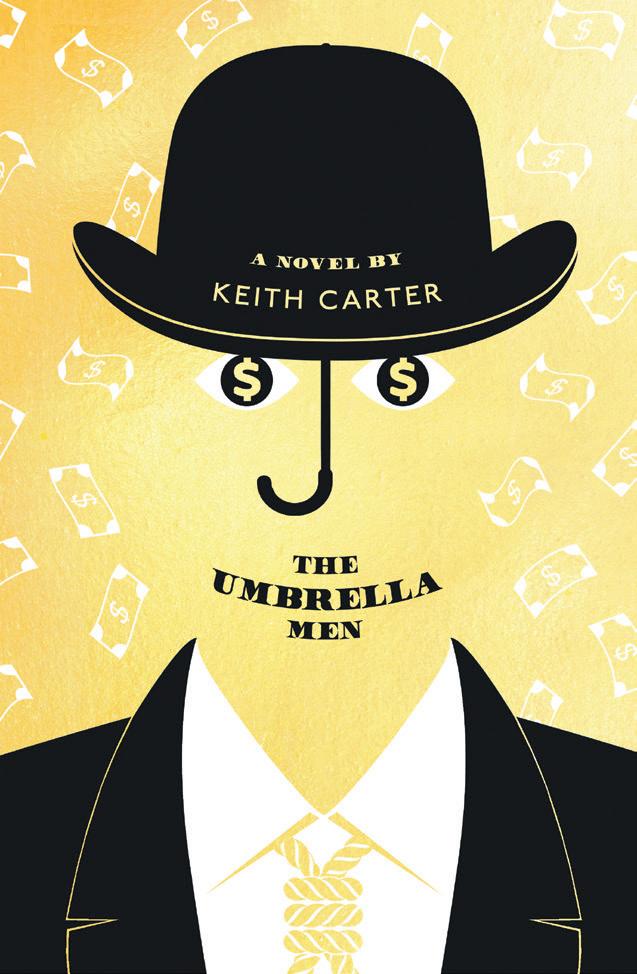
How can one act decently in commerce and in activism without our actions having unforeseen and unwanted consequences? In Keith Carter’s novel of finance, exploitation, environmentalism and human frailty, a London-based mining company is buffeted by crisis-torn banking and by the far-away interventions of protestors unwittingly super-charged by Chinese interests
Keith Carter was born in Scotland to a Dutch mother and British father, took a First in Economics at Cambridge in 1981, and went on to work as an investment banker before starting up a pharmaceutical company. He is now a writer and business consultant, lives in East London with his daughters, and uses a wheelchair since suffering a spinal cord injury in March 2018. He enjoys travel, politics and sailing

Save £1.08
Our price £7.91 inc. free UK delivery
To buy this book, visit www.booklaunch.london/sales or point your smartphone here
From the same publisher
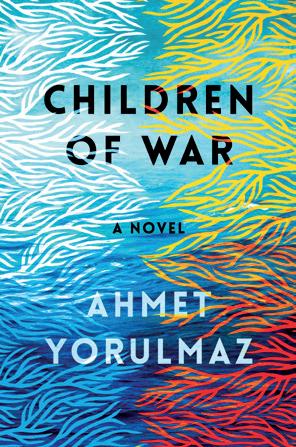

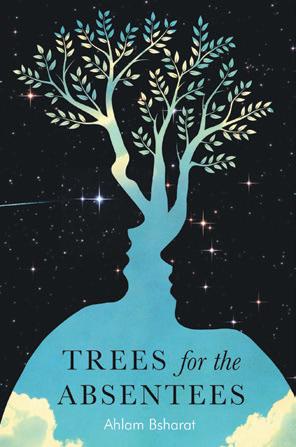
This edited extract is taken from the start of Chapter 1
… continued in the book
Neem Tree Press (London), 454pp, Softback, 9781911107101, 165mm x 241mm, October 2019, RRP £8.99
to Booklaunch now! Special autumn offer: 30% off www.booklaunch.london/subscribe
Subscribe
FICTION | ISSUE 5 | PAGE 17
Travelist Lonely Planet
Ultimate UK
490 Rest and Be Thankful between sea and sky at Ardgartan HIGHLANDS & ISLANDS // Even in a part of Scotland as scenic as Argyll, it’s hard to comprehend the sublime vistas of Loch Long and its northern horseshoe of pine-skirted mountains when seen from the backwoodsy cabins at Ardgartan. You might gear up for the region’s most spectacular scramble to the top of The Cobbler (2,900ft), a distinctively anvil-shaped outcrop, or explore the surrounding Argyll Forest Park and the loch’s western shoreline by pedal or paddle.
Then there is the unmissable valley view from the nearby Rest and Be Thankful, one of the UK’s most stunning mountain passes. Come evening, soak in a hot tub while gazing on a veil of stars, or fill up on tried-andtested fish and chips from the local pub. Skinny dipping? You could give that a go, too.
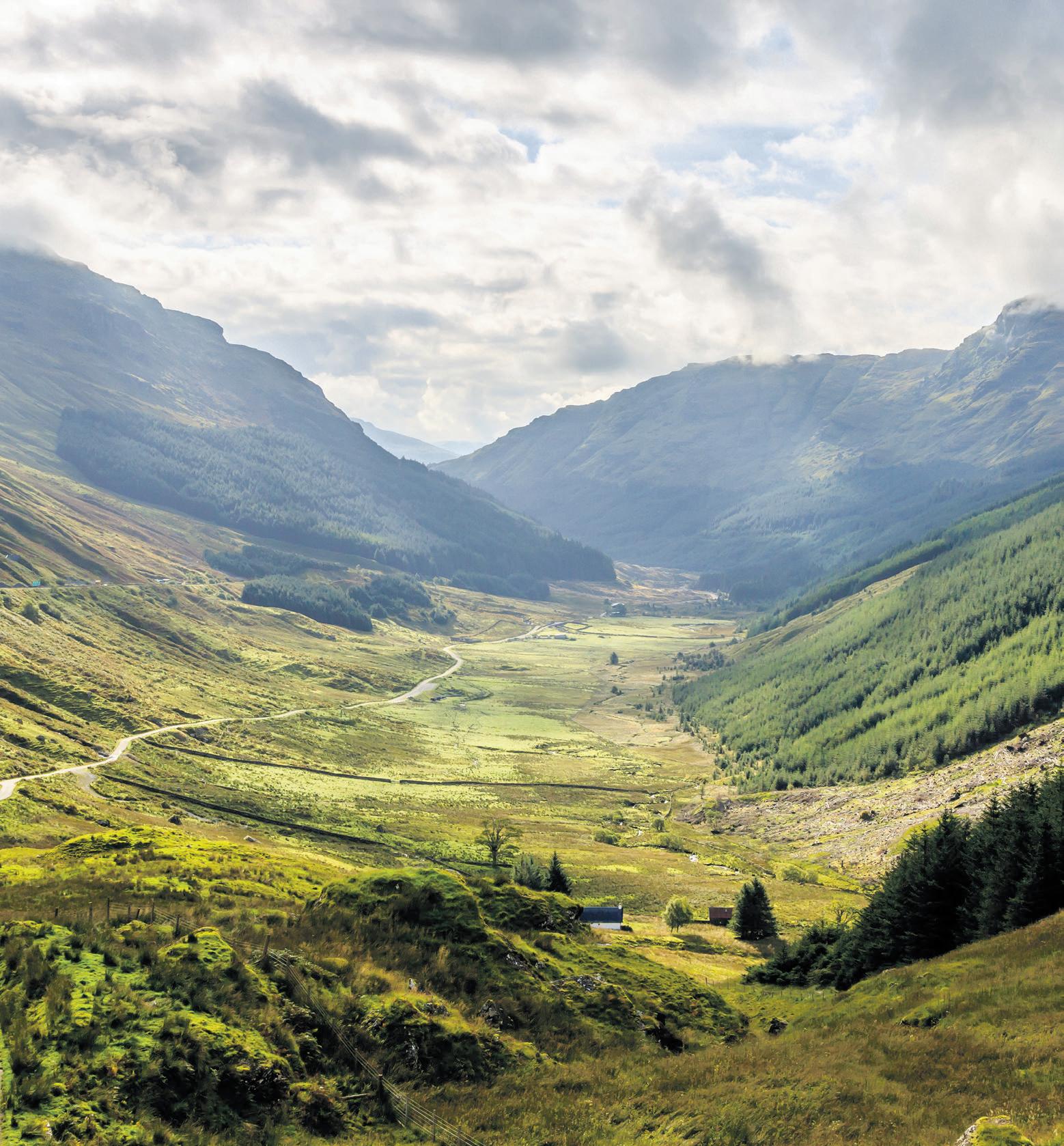
SEE IT! Ardgartan Argyll is part-owned by the Forestry Commission. Its 40 cabins are found 46 miles northwest of Glasgow.


153 Cruise by canal boat to the Kelpies
CENTRAL SCOTLAND // Everything about this duo of shining silver horse heads, the largest equine sculptures in the world, sets them apart. They are momentously engineered, 98ft high, fashioned from 928 stainless steel dragon scale plates, and weigh 330 tonnes each. Impressed yet?
For those a little in the dark, Scottish mythology holds that kelpies are shape- shifting water spirits, demons with horse heads, and several Highland sea lochs burn with their legends. Now Helix Park, the lottery-funded Falkirk greenspace where the Kelpies keep watch, smoulders too. Opened in 2013, each was built as a monument to the Central Belt’s horse-powered heritage during the industrial revolution.
You can discover the gigantic metalheads from the inside on a guided tour, but it’s more memorable to see them from the water, cruising from the Falkirk Wheel (the world’s only rotating boat lift) to the eastern gateway of the Forth and Clyde canal. More of a land lubber? Helix Park is home to cycle routes, a wetland boardwalk and towpaths, from which you can ogle the Kelpies from every angle.
SEE IT! The Kelpies are located 3 miles outside Falkirk, near the Central Belt’s main motorway routes.
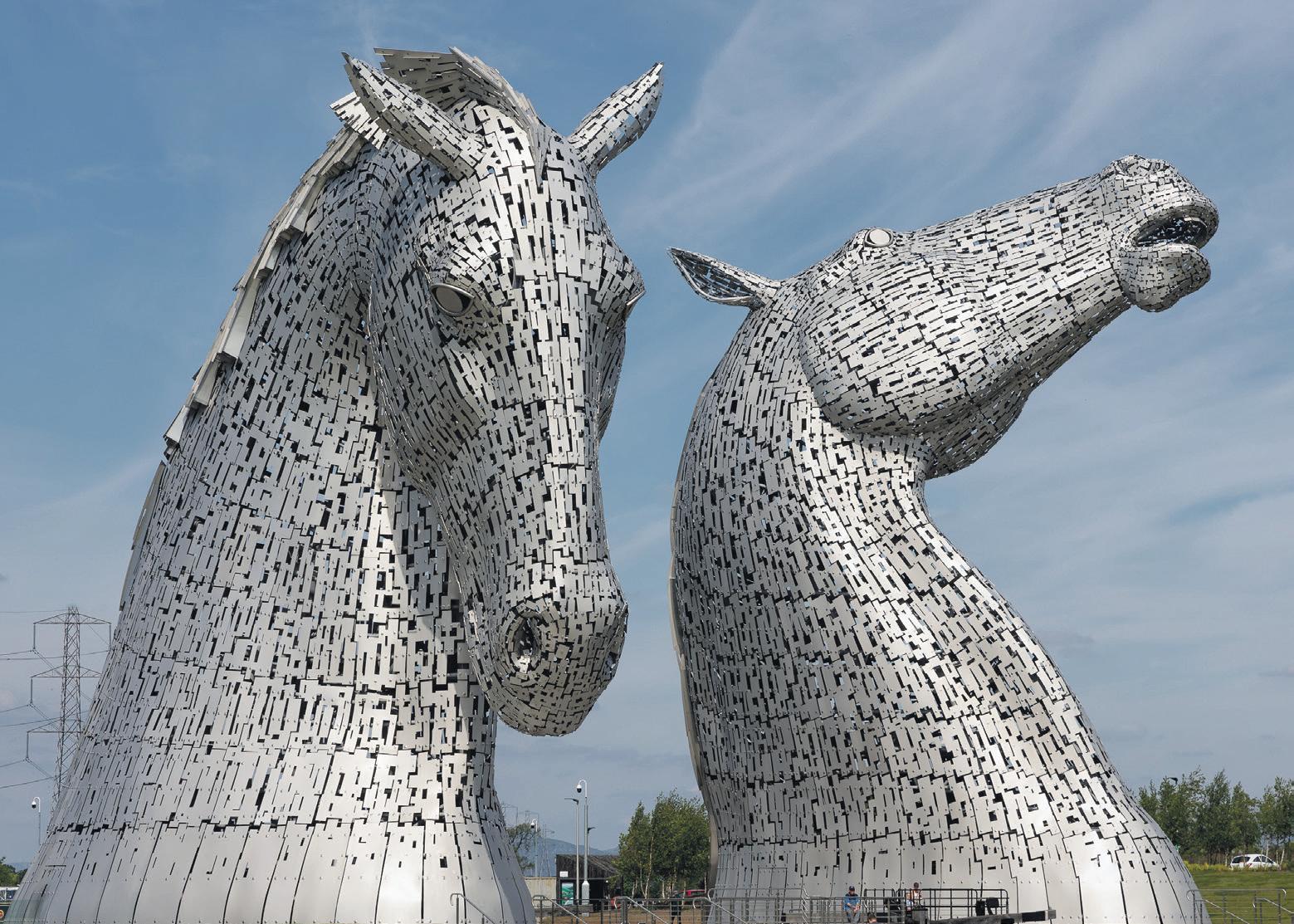
497 Revel in the forlorn coastal beauty of Downhill Demesne
NORTHERN IRELAND // There might be more to life than capturing the perfect picture, but Downhill Demesne sure is photogenic. On lush green lawns, perched high above the sea (and a beach familiar to Game of Thrones fans), sits the colonnaded, dome-capped Mussenden Temple, built by the bishop of Derry for his library (or mistress, if rumours are to be believed). It’s the star attraction of the 160-hectare demesne established by the bishop in 1774. The ruins of the abandoned house now stand forlornly on a clifftop, above beautiful landscaped gardens.
SEE IT! Downhill Demesne is 28 miles east of Derry city. Tickets include entry to nearby National Trust property Hezlett House.
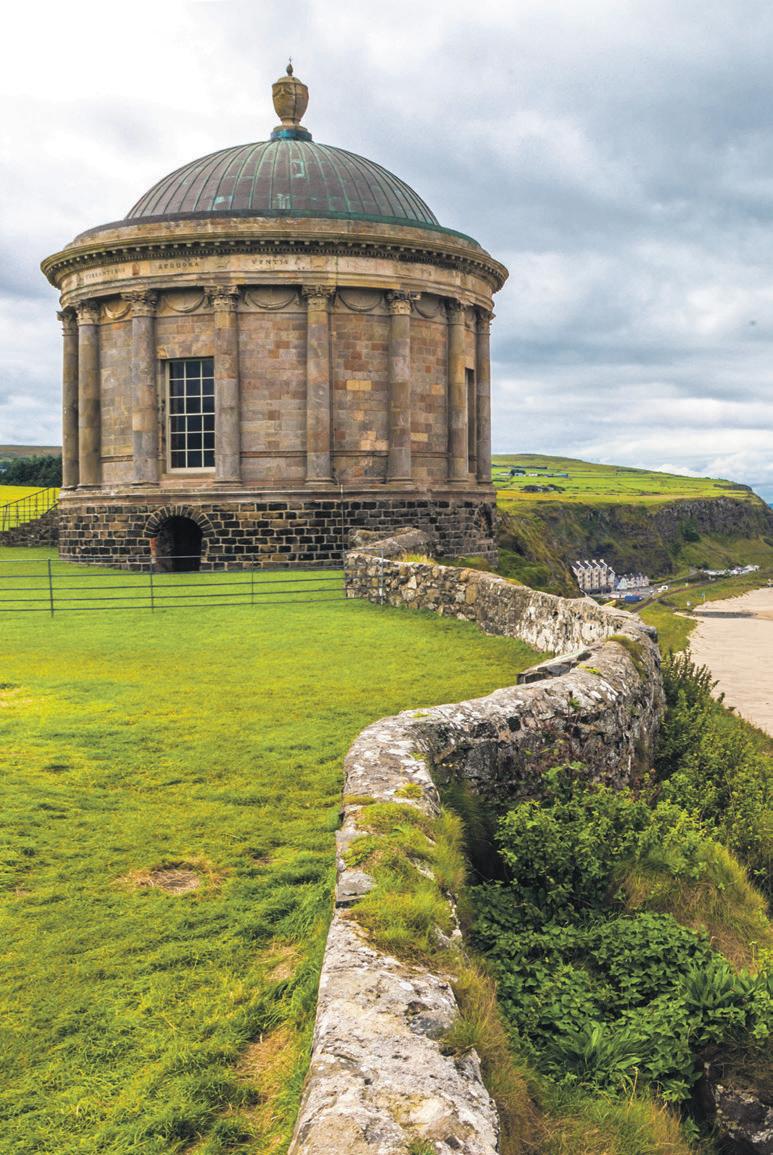
21 Contemplate 1000 years of ecclesiastical history at Durham Cathedral
NORTHEAST ENGLAND // Soaring heavenward, Durham’s colossal cathedral is a marvel of earthly achievement. An architectural game changer, it pioneered pointed stone arches, and today it’s a Unesco World Heritage site along with nearby Durham Castle, home to the city’s prestigious university.
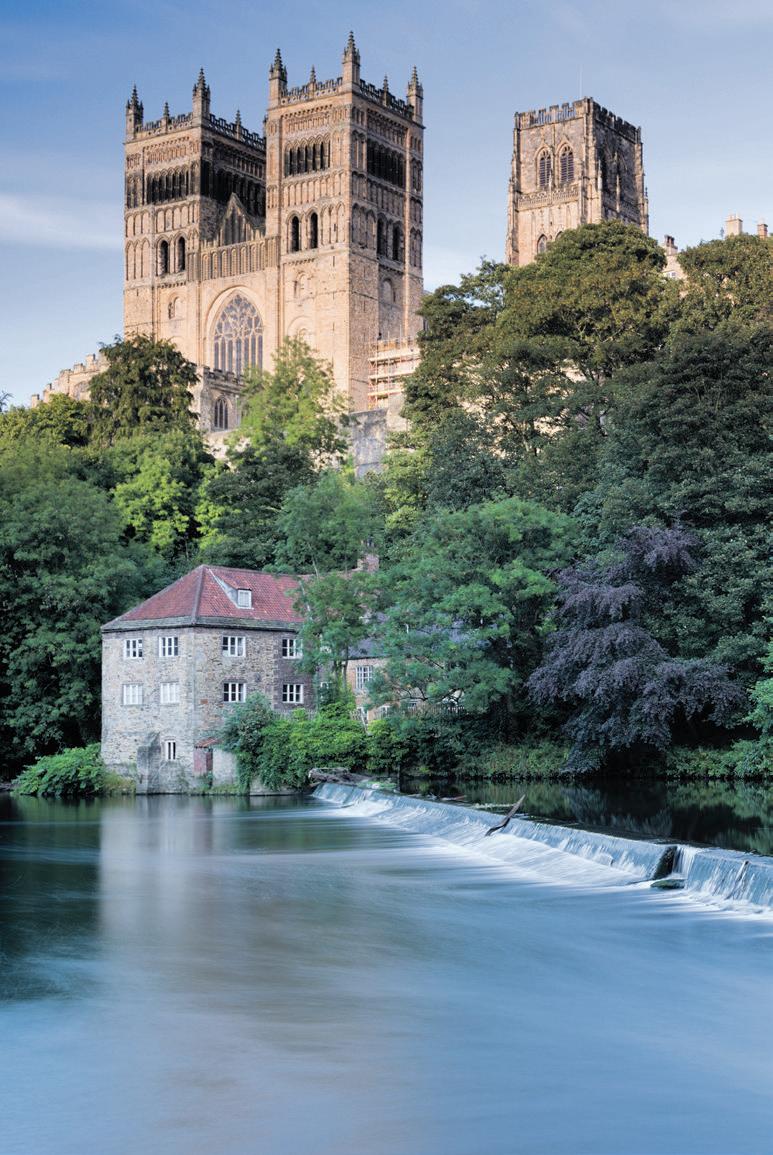
Over a millennium of history is chronicled here: the community of St Cuthbert arrived in 995 from Lindisfarne (Holy Island) with Cuthbert’s miraculously preserved body, and built an Anglo-Saxon cathedral. After the Norman Conquest, Benedictine monks arrived in 1083; construction on the cathedral as it appears today began a decade later. The exquisite 1175-built Galilee Chapel shelters the tomb of the 8th-century Northumbrian monk, Venerable Bede, who introduced the AD system for numbering years. The 218ft-high central tower dates from 1262 (though it was rebuilt in 1470)—climb the western towers for views across the city. Back on ground level, look out for the original Sanctuary Knocker, on the northern door, which medieval felons used to gain 37 days’ refuge in the cathedral before standing trial.
SEE IT! Direct trains to Durham run from cities including Newcastle (in less than 20 minutes), Edinburgh, London and York.
TRAVEL REFERENCE | ISSUE 5 | PAGE 18
261 Branch out at the National Botanic Garden of Wales
SOUTH WALES // Spreading across a 560-acre Regency Park developed by Sir William Paxton, the National Botanic Garden of Wales commands sensational views across the hills and Towy Valley. Its centrepiece is the Norman Foster-designed Great Glasshouse, the world’s largest single-span glasshouse, presenting a thrilling floral romp through California, Australia, the Canaries, Chile, South Africa and the Mediterranean.
And there’s more: a double-walled garden showcasing the evolution of flowering plants, an apothecary’s garden of healing herbs, a Welsh apple orchard full of uncommon varieties, a bee garden with a behind-thehive window, a bird of prey centre, and a glasshouse aflutter with rare butterflies. Hands down one of Britain’s most phenomenal gardens, it’s wholly deserving of a full day’s exploration.
SEE IT! The garden is a 10-minute drive from the M4 and two minutes from the A48 in Carmarthenshire.

86 Go puffin-spotting on the Farne Islands

NORTHEAST ENGLAND // Nicknamed the ‘clowns of the sea’, endearing black and white puffins, with bright orange bills and feet, quizzical expressions and comical antics, return each year to breed and raise their pufflings on the Farne Islands—one of the best places across the UK to encounter them.
Owned by the National Trust since 1925, this rocky archipelago three miles offshore from the Northumberland coast has been classified as a national nature reserve since 1993. Of its 28 islands, you can visit three—Inner Farne, Longstone and Staple—on boat trips in season. Adorable puffins aside, birdlife that you’ll likely encounter includes fulmars, Arctic terns, guillemots, razorbills, shags and eider ducks. St Cuthbert, who lived a hermit-like existence here for more than a decade before his death in 687, paved the way for conserving the islands’ birds when he introduced the first-ever law of its kind in 676 to protect the eider ducks (they’re often still dubbed ‘Cuddy’s ducks’ in reference to him). On Inner Farne, you can see the 14th- century chapel dedicated to the saint. Other buildings here include a medieval pele tower (home to the reserve’s rangers) and a Georgian lighthouse.
TRY IT! Seahouses is the jumping-off point for (often bumpy) boat trips to the islands; wear warm, waterproof clothes and—given the prevalent birdlife—a hat.
55 Be a pilgrim and take the causeway to otherworldly Lindisfarne
NORTHEAST ENGLAND // Venturing out to windswept Lindisfarne (aka Holy Island) is a mystical experience— the causeway that connects it to the mainland appears like a mirage, rising up from the dunes, salt marsh and mudflats only at low tide. St Aidan founded a monastery here in 635; after it was ransacked by the Vikings in the subsequent two centuries, the monks fled, taking the illuminated Lindisfarne Gospels (housed in London’s British Library) and St Cuthbert’s body (now in Durham Cathedral). Although a priory was re-established in the 11th century, it too was abandoned during the 1537 Dissolution.
Today there’s a palpable sense of spirituality as you wander the priory’s shadowy, skeletal ruins and Lindisfarne’s 16th-century clifftop castle. Afterwards, warm up with a glass of mead at St Aidan’s Winery.
SEE IT! Lindisfarne is reached by road from Newcastle and the Northumberland coast, but tides prevent road access twice a day.
69 Watch a clifftop play at the Minack Theatre SOUTHWEST ENGLAND // Forget the Globe, the Old Vic or the National—Britain’s most applause-worthy theatre is nowhere near the capital; it’s 300-odd miles west on a craggy clifftop on Cornwall’s coast. Created between the 1930s and 1950s by Rowena Cade, this stunning amphitheatre is cut into the cliffs above the popular beach of Porthcurno, and hosts a summer-long programme of plays, gigs and other live performances. With its epic backdrop of wheeling gulls and whitecapped surf, few locations feel as intrinsically theatrical as this.
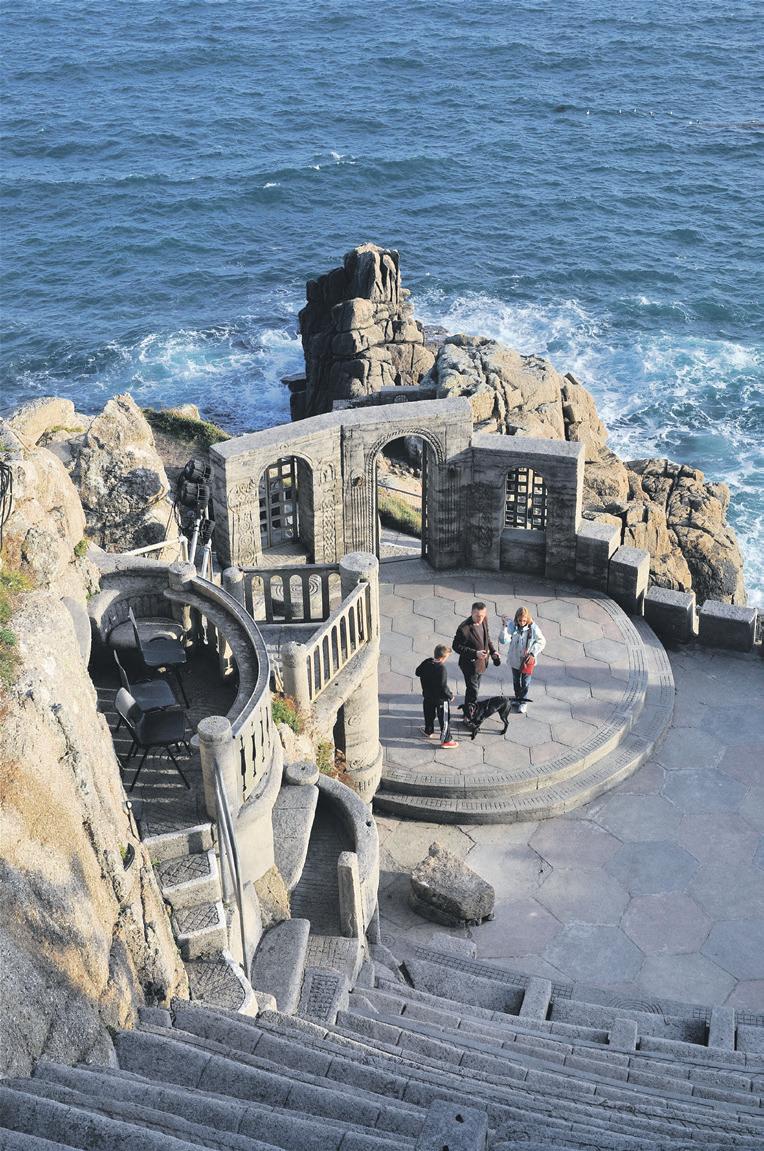
SEE IT! The Minack is about 9 miles southwest of Penzance. Visit any time, or see a performance from roughly May to September.
… continued in the book
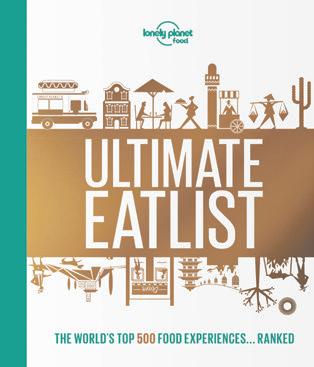
The British mainland and its islands comprise an extraordinary variety of sights and experiences for the knowing traveller. Now, for the first time, Lonely Planet’s community of travel experts has ranked its top 500 destinations to create the Ultimate United Kingdom Travelist. Some entries are familiar—the Edinburgh Fringe, the Pembrokeshire coastline, the Giant’s Causeway, the British Museum—but there are also hundreds of lesser-known wonders that hugely reward the visitor
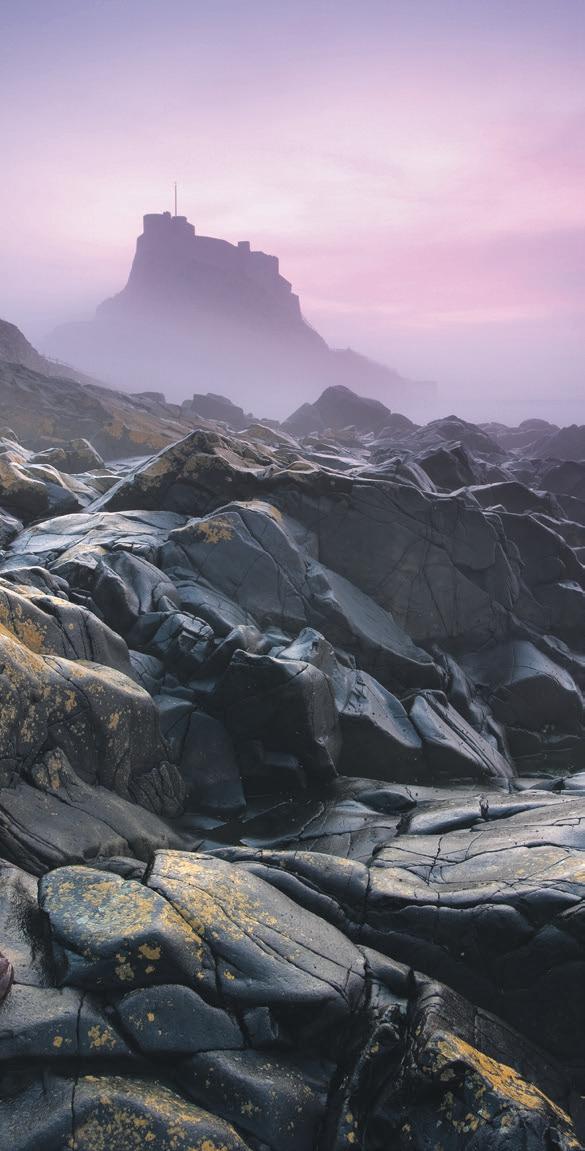

 The Top 500 Experiences in the UK … Ranked Lonely Planet (London), 320pp, Hardback, 9781788686402, 165mm x 210 mm, 356 col. illustrations, August 2019, RRP £19.99
The Top 500 Experiences in the UK … Ranked Lonely Planet (London), 320pp, Hardback, 9781788686402, 165mm x 210 mm, 356 col. illustrations, August 2019, RRP £19.99
inc. free UK delivery To buy this book, visit www.booklaunch.london/sales or point your smartphone here
Save £6.00 Our price £13.99
TRAVEL REFERENCE | ISSUE 5 | PAGE 19
From the same publisher
Silence Is So Accurate Trevor Pateman
Swearing is an art. Some people do it extremely well. Very occasionally, the ability is a job requirement, traditionally so for an English sergeant-major drilling a parade ground of squaddies and quite commonly today for stand-up comedians. I have no talent whatsoever, brought up in a milieu where swearing was equated with letting yourself down. My father could direct a vicious tirade at his wife, full of hate-filled epithets, not one of them drawn from the standard repertoire of swear words.
The dictionary for those starts from an initial division into two principal categories, obscenities and profanities. The former make essential reference to the sexual and excretory organs and their activities. The latter refer to things sacred in religions. In actual use, the vocabularies are not mutually exclusive and words from both categories can be combined, as in Jesus fucking Christ! I don’t often see that in print, though when I put it inside quotation marks Google gave me 425 000 results so clearly I have led a sheltered reading life. There is a third, more complicated category, that of derogatory expressions which I shall consider later.
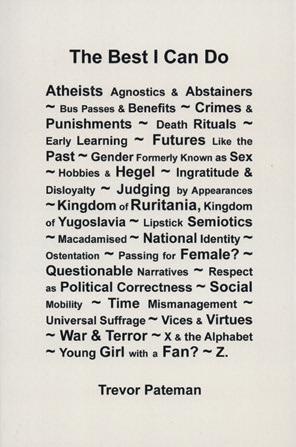
Silence is So Accurate is Trevor Pateman’s second A-to-Z book of essays, inviting us to think more about what we take for granted. Provocative and impatient, its author considers the weaknesses in how we use language, our hesitancy in challenging our own intellectual conventions, and the dilemmas that war and survival create for our moral certainties. The imprint under which the books are published, “degree zero”, acknowledges a debt to Roland Barthes with whom Pateman studied in the early 1970s
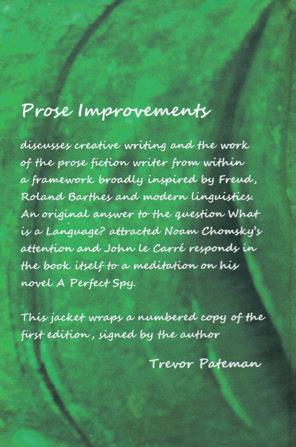
Trevor Pateman was born in 1947 and has always lived in southern England, except for a student year spent in Paris in the 1970s. His doctorate was rewritten as Language in Mind and Language in Society (OUP 1987). He taught at the University of Sussex for 20 years and then became a stamp dealer, travelling extensively and specialising in territories that were once part of Imperial Russia and later the Soviet Union
Save £7.01
Our price £12.99 inc. free UK delivery
To buy this book, visit www.booklaunch.london/sales or point your smartphone here
Swearing is rooted in speech and written uses are heavily derivative and subject to extensive censorship and self-censorship which still continue on an industrial scale. Novelists have to handle the problem that swearing is most clearly authentic (and in consequence, much less likely to be embarrassing) when it vehicles the immediate expression of an occurrent feeling like anger or surprise or disgust; it is not readily something to be recollected and re-used in tranquillity. It is actually quite hard for a writer to get it right when either a narrator or a character is made to swear. Creative writing classes are littered with failed attempts. The attempts fall into the same wastebin as those which reckon that use the word spiffing and you have created an English public school milieu or use wench and you have done enough to bring on tankards and heartiness.
But even if such difficulties are overcome, maybe after a Creative Writing class devoted to Philip Roth, there are lots of words that are still avoided in print or on websites. For example, suppose you want to check the first line of Philip Larkin’s poem and Google ‘Your Mum and Dad’ + ‘Larkin’. There are only 26,000 results. Of the first 20, thirteen give an accurate text for the first line. I take this as a measure of Progress. Seven give variant readings: three propose in place of the word fuck the alternative f ***; two read it as f - - - ; one, obviously for those slower on the uptake, has f *ck; one offers the mystifying variant ****.
Except for the last, all the variants have been provided on the assumption that the reader will be able to decode them back to fuck, though that will still leave it unclear what Larkin actually wrote; maybe he wrote f *ck and so f *ck requires no decoding. Logically, they don’t help the person who is trying to establish an authentic text, though it’s true we can be pretty sure that Larkin did not write f *ck because for a serious poet it would be a reputation-destroying choice. But because of the uncertainty they create, stars should never appear high up in Google searches. It would be relatively easy to create an algorithm that demoted stars and dashes versions of anything to the tail end. (I shall suggest this to Google.)
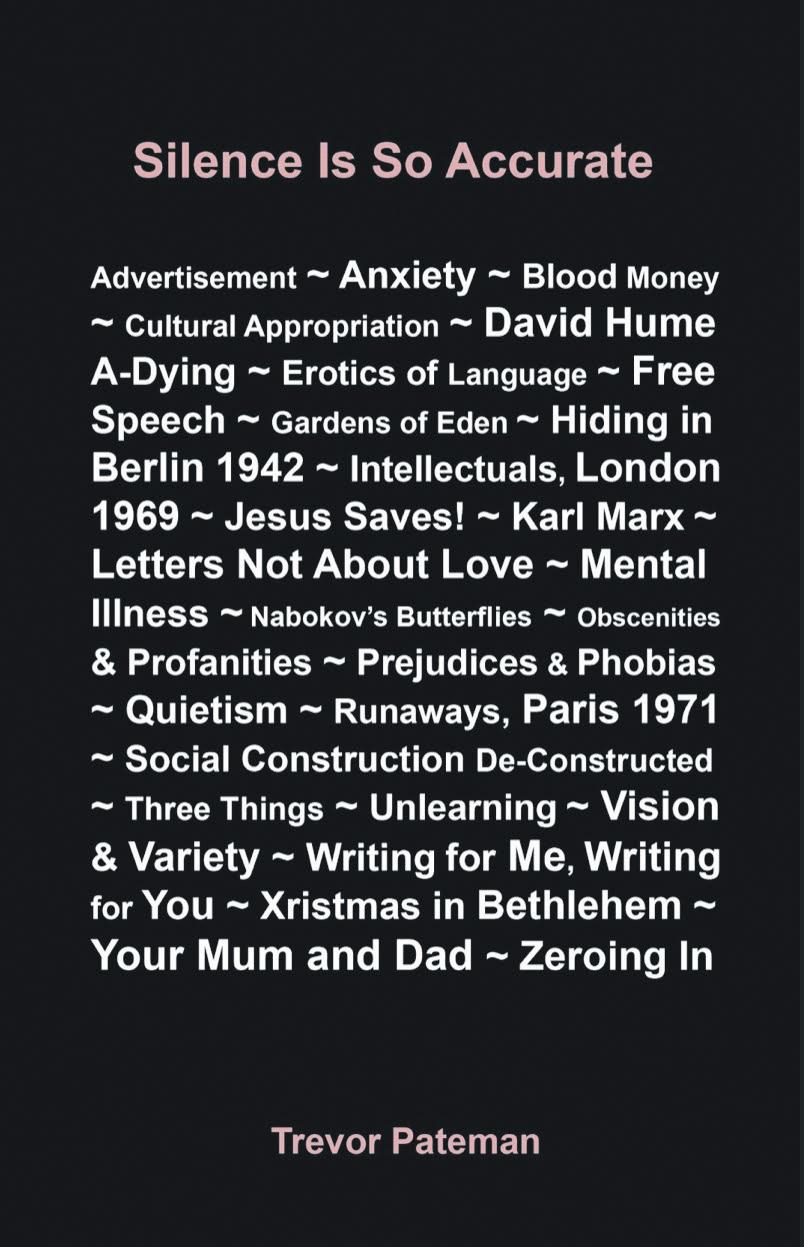
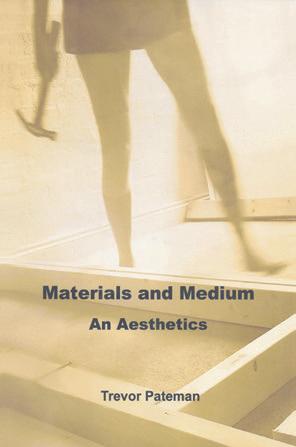
Interestingly, there is perhaps still some awkwardness about that first line, even though it dates from 1971, and which leads us to hasten past a possible subtlety in the way it works. Take out the phrase they fuck you up and compare it with they magic you up or they conjure you up and then let the penny drop and you get they conceive you—and it’s true: they may not mean to but they do.
Before I continue, let me try to inspire a passing linguist to do a little research. How many native speakers of English do not know the word fuck? What is the average age at which children get to know fuck and at what age do they acquire some idea about what it might refer to? How many adult native speakers of English have never used fuck in speech or in writing? Failing the research, go on, Guess.
You don’t have to be a linguist to tackle the next question: What words cannot be spelt out in contemporary English-language mass-circulation media? I did a little study of the news website huffingtonpost.co.uk which, frankly, seemed to have set itself up for my purposes. I recorded headlines from its news stories, not very scientifically because I did not record every day. But at the end of a couple of months, I had accumulated a stack of headlines, keeping screen grabs so that my research
could be verified. I spare you their bold type but not their Capitalisation and provide some examples:
23 March 2016
David Cameron Wants Us All To Get S**tfaced For The Queen’s Birthday
12 April 2016
Film Shows Disability Benefits Assessor Calling Woman ‘F**king Fat’
19 April 2016
Aussie Website Names Couple And Takes The P*ss Of Injunction
8 May 2016
Boris Johnson’s Final Act As Mayor Sees Him Branded A ‘P***k’
18 May 2016
Emily Thornberry Mouths ‘B******s’At David Cameron Across The Commons
Toe-curling, isn’t it? How could anyone take this website seriously? Just reflect a bit on what is going on. Emily Thornberry is seen mouthing Bollocks at David Cameron and The Huffington Post (along with lots of other news outlets) wants you to know this. But they aren’t prepared to tell you in plain English. Why? For fear that you will be offended? But how could six stars solve that problem? They know that you know the word bollocks and they know that you know that stars are meant to be replaced with letters (they give you the correct number of stars to do the job) and so, after a 0.05 second delay while you search, you get to what the headline is trying to nudge you to, that Emily Thornberry said a naughty word. And then what? Are you meant to snigger and say Ooh, Emily, you naughty girl? Is that what some sub-editor did, preparing this nonsense? There is a word for it, Juvenile Maybe I’m wrong; maybe the word is, American
To be fair, The Huffington Post is not alone. Around the time I was monitoring for stars in their words, The Guardian interviewed Jessa Crispin, founder of the website Bookslut. In the course of the interview, she opined that ‘The Paris Review is boring as fuck’—that’s her style, though in this instance maybe not so brilliant as ‘The New Yorker is a dentist magazine.’ Anyway, the Guardian website duly headlined the interview ‘The Paris Review is boring,’ which makes you wonder why they were interviewing Jessa Crispin in the first place. They must know that she isn’t suitable for a Sunday School newspaper.
It is possible to use obscene or profane words without using derogatory language, and vice versa. The real author (Nabokov) of the fictional Foreword to Lolita correctly observes that ‘not a single obscene term is to be found in the whole work’—a failed attempt to keep the word ‘pornography’ away from the novel—but Humbert Humbert does describe Charlotte Haze as the big bitch and the mad bitch, though neither has the venom of The Haze woman.
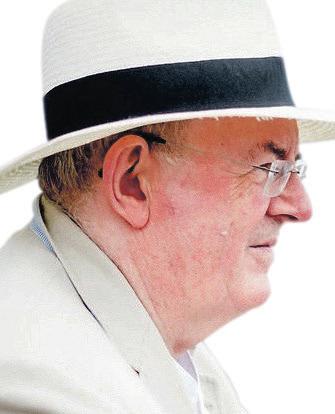
Though it is not easy (or even sensible) to build a dictionary of derogatory words, in derogatory speech people often liken humans to animals and use words which have a legitimate use to talk about those animals, in the same way that those who profane use words which have a legitimate use in religious contexts. I suspect that our sense of what is and isn’t in the Derogatory dictionary will not stand much analytical scrutiny. For example, to call a man a swine is more acceptable than to call a woman a bitch and I am sure that The Huffington Post sub-editor would want to see at least one star in the latter but none at all in the former. But that would seem more like old-world courtesy than as something analytically grounded. Only a cad calls a woman a bitch, but anyone can call a man a swine. Since I am not a cad I have never in my life used the former. It has always been off-limits. But that, of course, would not much comfort my feminist friends. It arrives at the same result of avoiding derogatory language but by a different means, and the different means is not the one they want—indeed, rightly see as part of the problem. I am not here to defend old world courtesy either.
I avoid the main issue. I am all in favour of people using obscene and profane language, especially if they do it well and make me laugh. I think **** should be abolished, and removed from the keyboard if necessary. But what do I think about derogatory language? It’s tricky, partly because of the dictionary problem. Derogatory is something you do, it’s about the relationship between you and what you say and the target of what you say. It is you who derogates someone or something, not a word.
Subscribe to Booklaunch now! Special autumn offer: 30% off www.booklaunch.london/subscribe From the same publisher … continued in the book
This extract comes from the chapter “Obscenities & Profanities”
degree zero (Brighton), 212pp, Hardback, 9780993587924, 140mm x 220mm, February 2017, RRP £20.00
LANGUAGE AND CULTURE | ISSUE 5 | PAGE 20
On the last day of 2009 Clive James’s life changed for ever. By the time the strains of ‘Auld Lang Syne’ were ringing out to welcome in the new decade, he was transformed from the ebullient, non-stop, globetrotting, motormouth, motorbrain Aussie we had known for so many decades into a doomed and depleted invalid. ‘I had to go in because of sudden kidney failure,’ he says. ‘I couldn’t pee. I had a prostate problem and my urinary tract packed up on me. They had to operate straight away. I nearly died. And while I was there, I was diagnosed with everything else.
‘In addition to emphysema, I also had a brand of leukaemia. I nearly croaked twice that year.’
The diagnosis of B-cell chronic lymphocytic leukaemia was not a death sentence in itself but the outlook was not good. He might live for months, perhaps even years, but there was no prospect of recovery. Treatment would start immediately, but the news that he had three life-threatening conditions was devastating. The world had changed overnight, echoing Clive’s favourite line from W. H. Auden, ‘The earth turns over, our side feels the cold’, and bringing him up short against the hard truth of his own impermanence.
Ten years earlier to the day, Clive had hosted ITV’s three-hour millennium spectacular, A Night of a Thousand Years. He’d sung and danced his way into light entertainment history with a finale consisting of a gruesomely grandiose choreographed version of the Fred Astaire/Ginger Rogers classic ‘Pick Yourself Up’ that also starred, for various unlikely reasons, Magnus Magnusson, Christopher Lee and Leslie Phillips, Lionel Blair and Sacha Distel, ‘It Girl’ Tara Palmer-Tomkinson, Felicity Kendal and Helen Mirren. He had already sold his successful TV production company, Watchmaker, and had decided to make this his swansong, quitting television and turning over a new leaf for the next thousand years. No one on the outside knew it yet but ‘TV’s Clive’ was turning back to the written word.
The decade between these life-changing moments saw an outpouring of books, essays, journalism, song lyrics and poetry that fully justified the comment his friend Ian McEwan had made after reading a thoughtful, well-balanced New Yorker piece Clive had written a few years earlier about the degree to which the German nation, as a whole, had conspired with Hitler in his persecution of the Jews. ‘That is what you should be doing,’ McEwan had said, sternly. Like many of Clive’s friends, and enemies, he was convinced that the TV work that had made Britain’s least-disliked intellectual a household name was a distraction, a profligate waste of his prodigious talents.
‘I knew he was right,’ he wrote in The Blaze of Obscurity, volume five of his Unreliable Memoirs. ‘The time was coming when I would have to get back to bedrock. I still believed my work in television was giving me a wider scope but here was a reminder that it would take concentration to go deep, and there was only so much of life left.’
How long that ‘only so much’ might be is, of course, something nobody can predict. Clive had just passed 60 when he pulled the plug on his television career. For ten years after turning away from the spotlight, his output was extraordinary, in volume, quality and scope. The poems ranged from an updating of Theocritus in ‘The Magic Wheel’ and the poignant elegy for Ian Hamilton to the mischievous and much-tweeted ‘Windows Is Shutting Down’ (‘Better, perhaps, to simply let it goes. / A sentence have to be screwed pretty bad / Before they gets to where you doesnt knows / The meaning what it must of meant to had’). The prose included the mighty (and weighty) Cultural Amnesia and the inside story of his days in the TV limelight, The Blaze of Obscurity. There were essays, journalism, songs written with Pete Atkin and 60 brilliantly lucid, argumentative and amusing ten-minute programmes for the Radio 4 series A Point of View.
But then the blow fell. The onset of his fatal illnesses seemed, at first, to signal the end of this golden period of literary productivity. Clive retreated back to Cambridge, to a little four-bedroomed end-of-terrace house close to his family and just north of Jesus Green and the River Cam. The house was adapted to Clive’s needs, with the long kitchen dining room converted into a kitchen study, lined on both sides with bookshelves, with his desk in the middle, lit from above by a broad skylight, and the double doors to his right opening out onto the small, secluded garden. In between painful and exhausting visits to Addenbrooke’s Hospital, Clive would spend most of his days reading and his weekends binge-watch-
ing box sets of American TV series (The Sopranos, Mad Men, Game of Thrones, The West Wing, Band of Brothers, Breaking Bad, The Wire, whatever) with his younger daughter, Lucinda. Yet still, in spite of it all, he still found himself driven by the urge to write. He completed the decade-long marathon of translating Dante’s Divine Comedy (2013), composed Gate of Lilacs (2016), an eccentric verse commentary on Proust, compiled two books of brief, energetic literary essays—Poetry Notebook (2014) and Latest Readings (2016)—and put the box set binges to good use in Play All: A Bingewatcher’s Notebook (2016), as well as writing a popular series of articles for the Guardian under the title, ‘Reports of My Death’.
All the time, however, these activities were being interrupted by the need—felt as an insistent necessity— to write the short, powerful lyric poems that went into Sentenced to Life (2015) and Injury Time (2017).
A particular idea would force itself upon him, demanding to be released. He would often find himself driven by a pitiless combination of inspiration and insomnia into shuffling downstairs in the early hours of the morning and working on a poem till dawn broke and the thoughts had been captured and resolved.
The poem that gives the 2017 collection its name is ‘Injury Time’. This is realistic, rather than optimistic. There is no implication here that the plates can be kept spinning for ever as long as the dying man can keep on writing. Death has been deferred, but the final whistle will go at any minute. The tone of Clive’s poem is resigned and calm, tempered with a sense of bemused curiosity at the fact of his continued existence.
This is a pretty trick the fates have played
On me, to make me think that I might die
Tomorrow, and then grant me extra time. Each night he goes to bed half-expecting to die in his sleep, slipping into the same modest dream of surviving, ‘still not dead’, to face the unexpected bonus of another day. While the rest of us toss and turn in nightly sequences of surreal danger and drama, lurid excitement and trouserless or food-splattered embarrassment, he just dreams of waking up alive. I was once married to someone, placid and easy-going by day, whose recurring nightmare involved running for her life across a ploughed field, pursued by a giant and grimly malevolent potato. Clive dreams only of coming downstairs and resuming his existence, until that final morning when his notebook, lying there untouched, will signal that the end has come.
The striking central image of the poem—the ‘Himalayan slog upstairs to bed’, which ‘might as well be straight into the sky’—brings with it biblical echoes of the ascension, as well as emphasising how laboured and precarious this everyday business of climbing the stairs is for a man in Clive’s condition. And the detail of having to place each foot so tentatively, as if treading ‘on rolling logs’, has its own nightmare quality. We can’t easily imagine how someone as weakened and ill as Clive feels inside, but these few lines give us a momentary glimpse of how it must be when your strength and coordination have been drained away.
In the late 1950s while he was meant to be studying for his first degree at Sydney University, Clive devoted a lot of his energy to his role as literary editor of the university’s student newspaper, Honi Soit. In 2015, shortly before the publication of Sentenced to Life, he gave the same paper an unusually frank interview about the poems he was writing and the new perspectives he’d gained from his long battle with terminal ill-health.
‘I am in the position of talking with the authority of someone who has been somewhere, like an astronaut who has been to the moon,’ he said.
‘Apart from bravery, fitness, a science degree and the ability to fly, the main difference between the astronaut and myself is that he got back. I won’t be getting back from this. But I am glad to have made the voyage.’
Injury Time
This is a pretty trick the fates have played On me, to make me think that I might die Tomorrow, and then grant me extra time. By now I feel that I have overstayed My welcome. Every night I face the climb Which might as well be straight into the sky: The Himalayan slog upstairs to bed, Placing my feet so carefully I seem To tread on rolling logs, and there I dream I come back down next morning, still not dead. This nightly dream can turn out to be true Only so long, and one day this notebook Will lie untouched, to show how long it took Silence to do what it was bound to do.
… continued in the book
So Brightly at the Last
Ian Shircore
Following on from Loose Canon, his analysis of Clive James’s song lyrics, Ian Shircore now examines James’s growing commitment to poetry, especially in the face of life-threatening illnesses and his fear of being remembered not for intellectuality and observation but for his years as a TV game show host. The book reveals a poetic mind at work, placing James in the context of other poets going back via Auden and Pope to Donne and Marvell



Ian Shircore is the author of Loose Canon: The Extraordinary Songs of Clive James and Pete Atkin. He has known Clive since 1970, when he originally mistook the hefty Australian standing next to Pete Atkin at a gig for the singer’s personal bodyguard. While working on So Brightly at the Last, he has enjoyed many sunny afternoons with Clive at his Cambridge home, discussing poetry, the art of writing and their shared love of Jimi Hendrix
Save £3.43
Our price £14.95 inc. free UK delivery
To buy this book, visit www.booklaunch.london/sales or point your smartphone here
Subscribe to Booklaunch now!
Special autumn offer: 30% off www.booklaunch.london/subscribe
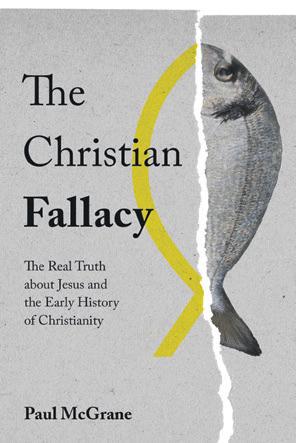
From the same publisher

This edited extract is taken from Chapter 6: “Game Over”
Clive James and the passion for poetry RedDoor Press (London), 304pp, Hardback, 9781913062071, 138mm x 216mm, October 2019, RRP £18.38
CELEBRITY BIOGRAPHY | ISSUE 5 | PAGE 21
A Hard Place Patrick Kelly

I was already warming to the festive atmosphere when I met Catherine at the corner of the BBC building in the city centre. She was wearing a bright blue striped dress and smiled broadly at me as if she was heading for a summer garden party. I took her by the arm and together we joined an expectant crowd two or three deep on the pavement near the City Hall. Catherine appeared relaxed.
‘I’m so glad you came. I thought you might be worried you’d be spotted by somebody you know.’
‘Not likely,’ she replied. ‘There’s damn the one I’d know here.’
‘Do you not know any Protestants, then?’
She shrugged. ‘A few. At university. But none of them would be here. They have more sense.’
I thought of my own schoolfriends. I doubt if I knew the religion of any of them and wondered how it might be to know for sure that you had never met a Protestant. It had simply never occurred to me.
Can one ever anticipate what impact our choices will have on the rest of our lives? If we could, would we behave differently? A Hard Place is a novel set in Northern Ireland in the early Sixties when sectarian forces that would later rip the country apart work to destroy the relationship of two lovers, with terrible consequences for them both
Patrick Kelly was born and brought up in Belfast. He is a freelance journalist and editor, and has written for newspapers and magazines in the UK and Spain, including La Vanguardia, Guardian, Daily Telegraph, Independent, Independent on Sunday, Irish Times, Evening Standard, New Statesman and the Times He writes regularly on the arts for Museums Journal, Arts Industry and other publications. He is a graduate of the Creative Writing school at the University of Limerick
I was about to say this when the murmurs of the crowd alerted me to the fact that the parade had begun. A car, an escort vehicle I guessed moved slowly down the road, crawling like a hearse at a funeral. Behind it a solitary bowler-hatted man walked sedately, an unsheathed sword upright, so close you could almost feel the blade touching his nose. He held his body rigid like a guardsman, his gaze unflinching and his gait steady. Behind him came another group of men, all wearing identical bowler hats, dark suits and navy blue ties, with orange collarettes draped around their shoulders, and goldpiped white or orange gloves which reached up to their elbows. There was dignity in the occasion but it looked more like a church parade than a carnival.
The stiffness of the marcher’s demeanour contrasted oddly with the behaviour of the onlookers. Makeshift stalls had been set up on the pavement selling paper hats, bunches of orange lilies, lemonade and hot dogs. Teenage girls and boys laughed and giggled, clutching Union Jack flags and shouting, children jumped and cavorted, yelling and screaming. A pint-sized woman decked out in orange clothes sashayed behind the crowd whirling a football rattle and singing, ‘It was old but it was beautiful… .’ Some of the spectators had brought kitchen chairs and parked them on the road to get a more comfortable view of the proceedings, while some of the braver ones stood on benches, bins and telephone kiosks. A man was selling pictures of the Queen from the boot of his car, which he had parked daringly close to where the crowds gathered at the edge of the road. Some people complained that they couldn’t get past. The man shrugged and offered them the pictures at half price.
Then the mood in the parade altered. ‘Here comes King Billy!’ whispered a child next to us, a tiny girl in thick-rimmed National Health glasses. She was jumping up and down with excitement, her face a picture of joy.
A man dressed in period costume—wide tricorn hat, red military coat and white breeches—trotted by on a white horse. He took off his hat and waved and bowed to the crowd who roared with delight.
Then came the bands: accordion bands, silver bands, pipe bands, flute bands, bands of every stripe and sound. Some wore military-style uniforms, neat red or blue jerkins, pith helmets or peaked caps jammed tight over their eyes, their drumsticks held just below their nostrils as if they were marching into battle. Others were dressed by Hollywood, white caps, gaudy uniforms, spats on their shoes and glinting brass instruments. I imagined they should be followed by a Chicago mayor or film star in an open-topped limousine. Scottish bands proliferated, some in the full regalia of bearskins, kilts and gaiters, their trailing bagpipes punching the blue sky with mournfulness. Others garbed like Teddy boys, their skin-tight slacks topped with blue jackets and regimental caps jammed with jaunty cockades as big as loofahs. Others again wore tam o’shanters the size of dinner plates with ribbons trailing down their necks. They gambolled, danced and jigged, barely in control of their instruments. Some of the bands featured drums so vast that they eclipsed the human beings they were strapped to. These drummers had an odd look of intensity, as if their lives depended on the level of noise they could beat from their instruments. They tottered, backs bent, shirtsleeves rolled up to their shoulders, arms flailing, whipping these enormous barrels with sticks as thin as pipe-cleaners. They added a strange flavour to the music, a combination of martial menace and unbridled
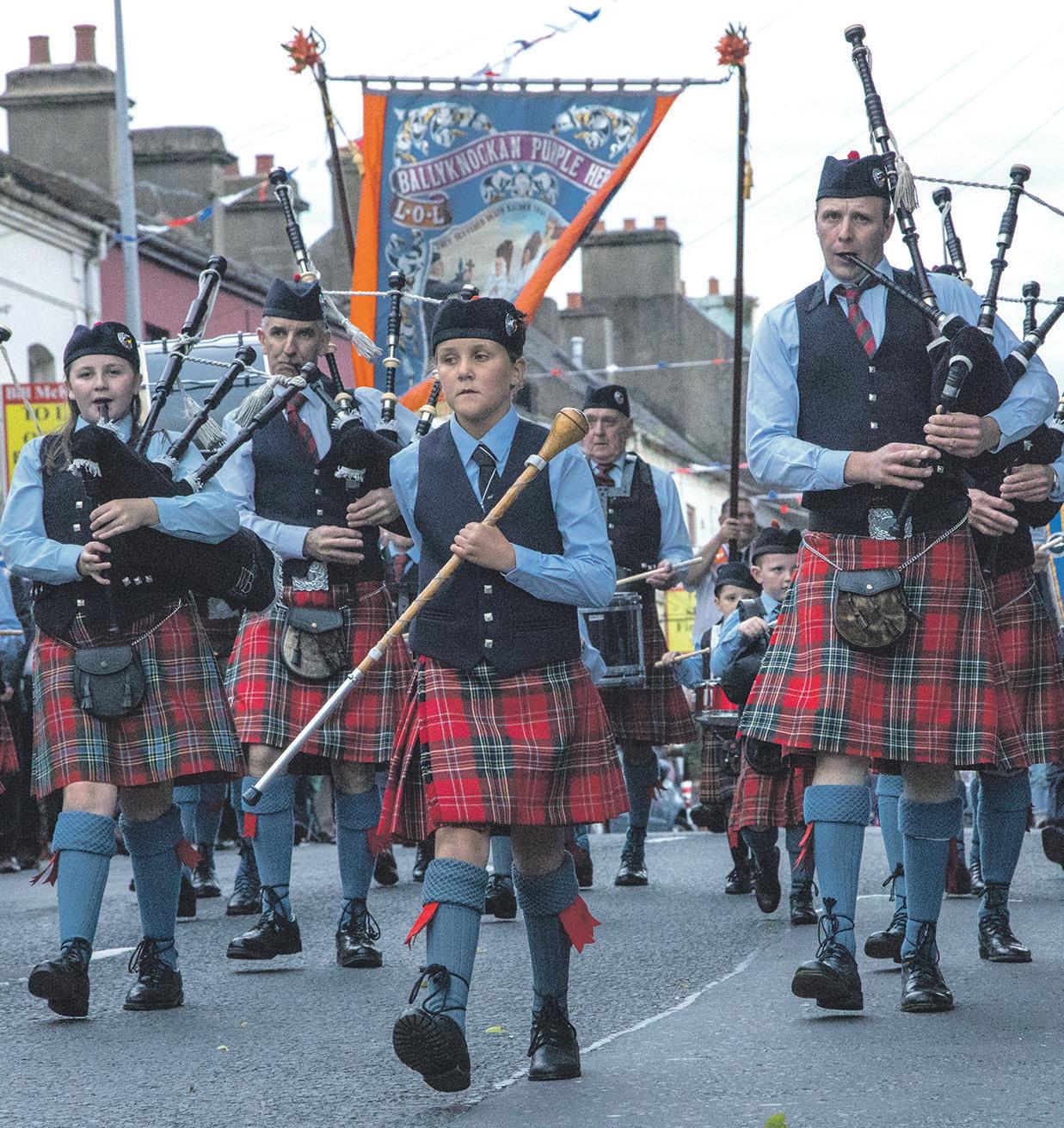
frenzy. Emblazoned on the drums were words like True Blue, Faithful Defender and the Albert St. Temperance Band. I asked Catherine what this referred to, but the noise of the bands drowned out her answers.
Between the bands, ornate banners bobbed and bounced on their poles, pressed against the groins of beefy men bursting from ill-fitting suits while small boys in blazers and short trousers held tasselled ropes aloft to prevent the banners getting caught in the wind. These massive strips of cloth, the size of a carpet in a hotel lobby, contained intricately woven representations of Oliver Cromwell, Edward Carson and various kings and queens. One showed an image of Queen Victoria handing a Bible to a kneeling Indian prince. Below was inscribed, in elaborate lettering, the phrase, ‘The secret of England’s Greatness’.
As the cavalcade trundled through the streets, the bands were flanked by more men in bowlers, their umbrellas rolled like rifles, their white gloves starched and stiff like traffic policemen on parade, their faces resolutely set forward, eyes narrowed against the glare of the sun.
A young boy—he couldn’t have been more than sixteen—dressed in a bright blue cardigan and tight black slacks, his shoes honed to alarming sharp points in the Teddy-boy style, was the leader of one band. His peaked cap was perched far back on his head to give his substantial quiff, smoothly slicked with hair-oil, more room to breathe. The boy was not exactly walking, but moving his legs in a curious amalgam of strut and tango, dancing jauntily with a long staff which he pushed in and out from his chest, occasionally swinging it behind him and twirling it in his fingers and spinning it under his legs. Every now and then, he launched the stick high in the air, marching underneath and seizing it as it fell, as if he was connected to the staff by an invisible thread that let him to pull it from the air at will. The crowd cheered lustily every time.
We followed the parade as it progressed. Catherine said little apart from remarking ‘Look at the style of that,’ as some women came sashaying past, red, white and blue bunting draped over their head and shoulders. The air was thick with the flapping of banners and beat of marching feet, pounding drums and piercing flutes, but the music was rousing, triumphant, jubilant. I could feel the rhythm in my toes, as if the ground was conducting the joy to my body and compelling my feet to tap in celebration. I was pleased with the world, smiling inanely at Catherine and at random strangers. When I recognised the bands playing some of the army tunes that my dad had liked listening to on the radio, ‘Colonel Bogey’, ‘Lillibolero’, I wanted to join in the revelry, and skip and sway along with everyone else.
I fancied that Catherine was infected by the party atmosphere too, gaily swinging my arms with hers as we walked hand in hand. She acquiesced at first, but stopped when we followed the parade round a corner and into a slightly narrower road. A Catholic church—I could tell by the saints’ statues that festooned the facade—stood opposite us, and flanking the walls were two groups of youths. None of them was wearing Orange regalia and they looked anything but celebratory. I could hear insults being exchanged, catcalling and booing.
Suddenly the band, one of the Teddy-boy ensembles, stopped in the road. They began marching on the spot, the drumbeats rolling now like approaching thunder. The man with the big drum was beating his instrument frantically, creating a bombardment like shells bursting as the trumpets blared and the whistles screeched. The music had become a weapon. As a wall of angry sound enveloped us, palpable and menacing. I felt Catherine’s hand tighten in mine.
The noise became deafening as the music moulded itself into a cacophony of shouting. The cries seemed to be coming from everywhere. Suddenly, the crowd started to move. I looked at Catherine and saw, for the first time, fear in her eyes.
‘Let’s get the hell outta here,’ I hissed and wrenched her away from the kerbside. We ran back towards Royal Avenue, dodging through revellers not yet caught up in the brewing confrontation. We bolted across the road, not stopping until we had reached the steps of another church—a Protestant one this time. A billboard enjoined us to ‘Get Right With God’.
Panting, I asked Catherine if she was OK. She nodded, but she seemed close to tears. I tried to hold her but she shook me away. We walked through the deserted streets of the city centre, and its silence infected us. As we reached the bridge over the river, the sun, seemingly exhausted
This edited extract is taken from Chapter 22, roughly halfway through the novel … continued in the book Subscribe to Booklaunch now! Special autumn offer: 30% off www.booklaunch.london/subscribe
NORTHERN IRELAND FICTION | ISSUE 5 | PAGE 22
It began on a hot afternoon in early summer, at a delightful spot I had grown fond of over the years and had even come to think of as in some way ‘mine’. You could describe it as a resort of a modest kind, frequented mostly by weekending couples in search of tranquillity, and with a very fine view. The lake that lost itself in the distance, the green hills. The green the result of careful and assiduous irrigation—because, as everyone knows, the land had been allowed to fall into ruin. There were vineyards and fruit groves. From the quiet restaurant that overlooked the slopes there was nothing to disturb the eye—no unsightly buildings, no snaking roads, no people, even. I remarked to my companion that the setting was perfect. I had not taken her there before. I was expecting a compliment to my taste. She agreed in a lukewarm way: it was clear that the place did not enchant her as, on my first visit, it had enchanted me. I was at once irritated. I said to Madame, with rather less ceremony than I usually employed, that we would like tea and cakes, and she invited us to go on to the terrace. I could tell that she was both pleased to see me and slightly surprised at my manner. We went out to the terrace. It seemed to me for the first time that it was unpleasantly exposed to the sun.
We sat at one of the small tables. There was music playing on a radio inside; it was Bach’s Italian Concerto There had been nobody in the restaurant when we came through, except a pale waitress in a black dress and white apron half-concealed in a doorway. The restaurant was spacious; the lakeward view and large windows always put me in mind of the dining room of an ocean liner. In the gaps between the windows hung nineteenth-century watercolours of a pastoral landscape. I had never looked closely at them, but I imagined them to be representations of the countryside around the resort. They were done by Europeans, of course. Local artists could not have produced such work. The tables were immaculately laid with white linen and crystal.
Madame herself came to take our order. As always, I was humbled by her great age and her dignity. It always seemed to me utterly incongruous—utterly inappropriate—that she should be standing beside my table while I sat at my ease. I did not know her history but I could guess it. I should be standing in her presence. Goodness knows, however, what she would have done if I had scrambled to my feet. I think she would have been alarmed. I would have done anything rather than bring alarm to those ancient, bright eyes.
I asked for a pot of tea for the two of us and a selection of cakes. Then, on impulse, I asked her also to bring some preserves. I don’t know why I did this. One does not normally eat preserves with cake. But Madame made the most exquisite preserves and would bring them to the table in tiny china saucers containing only a spoonful or two, each one the pure deep colour of a jewel, a feast for the eyes as well as the palate. Perhaps, having failed earlier, I still wanted to impress my companion. Madame suggested that she should bring some toast and butter, with which the preserves were normally served, so that we could appreciate them more fully, and I agreed.
When Madame had gone, we turned our attention to the view. I pointed out a fishing boat setting out across the lake, and remarked that the fish that was landed locally was said to be the best in the country. Leyla said that surely fish was fish, and that what mattered was how quickly it was got to market. Frowning, I explained that that was not so: the shores of the lake were particularly rich in minerals that were washed down from the hills, and these minerals fed the micro-organisms which were then eaten by the fish. All this was nonsense and I had made it up on the spot out of pure annoyance. She appeared to consider it, then said, ‘Is that so?’ in a tone that plainly indicated that it wasn’t.
The pale waitress brought our cakes. They were on a silver two-tier cake stand and looked spectacular. Madame had made them all with her own hands. The best, I had found in the past, was an apple and ginger cake topped by a small circle of cinnamon-dusted icing. However, what I was waiting for was the preserves.
After a short interval, the waitress re-appeared with a generous pot of tea inside a quilted tea-cosy, a jug of milk and a basin of sugar lumps. She placed these on the table between us and, beside the sugar, a pair of antique sugar tongs. The tongs had an elegant taper and cruel little claws. I picked them up and examined them with appreciation.
‘They’re English,’ I said. ‘Georgian.’ There was no comment from my companion. ‘Tea?’ I suggested.
‘Thank you.’
I poured it. The cups were bone china, naturally. Tea should not be drunk in anything else. Certainly not Darjeeling. I have milk with mine, just a drop. I have never taken to lemon. My eyes drifted once more to the citrus groves. Citrus had become a major export in recent years. I recalled that there were no citrus groves in the watercolours in the dining room. There were flocks of sheep.
The pianist was taking the Andante too slowly.
Madame brought the preserves. There were five, arranged in a circle. Delicately she indicated each one and told us what it was. The pear, the quince, the greengage, the strawberry, the blackcurrant. It was like being re-introduced to a circle of old friends. Her pride was evident. Rightly, I thought. The preserves glowed: ruby, emerald, topaz, some of them speckled with tiny dark seeds. After such a past, to have created this. I saw, suddenly, what a tremendous achievement it was: the gracious house, the imposing restaurant, the glorious view, the little pots of jam. How hard she must have worked! But that was not the point at all. To have overcome … what we all know has had to be overcome, but what those of my generation have not had to face. Perhaps could not. I know when to admire, and I did admire. I smiled my admiration up at her, and the unlooked-for thought came to my mind that she had put on weight.
After Madame had left us, we sat quietly for a moment and I raised my hand to shade my eyes from the sun. It was extremely bright on the terrace: light glanced off the vermilion blossoms in the flower tubs, off the flakes of mica in the paving, off minuscule pools of water left on the stone by the watering can, off the luminous lake.
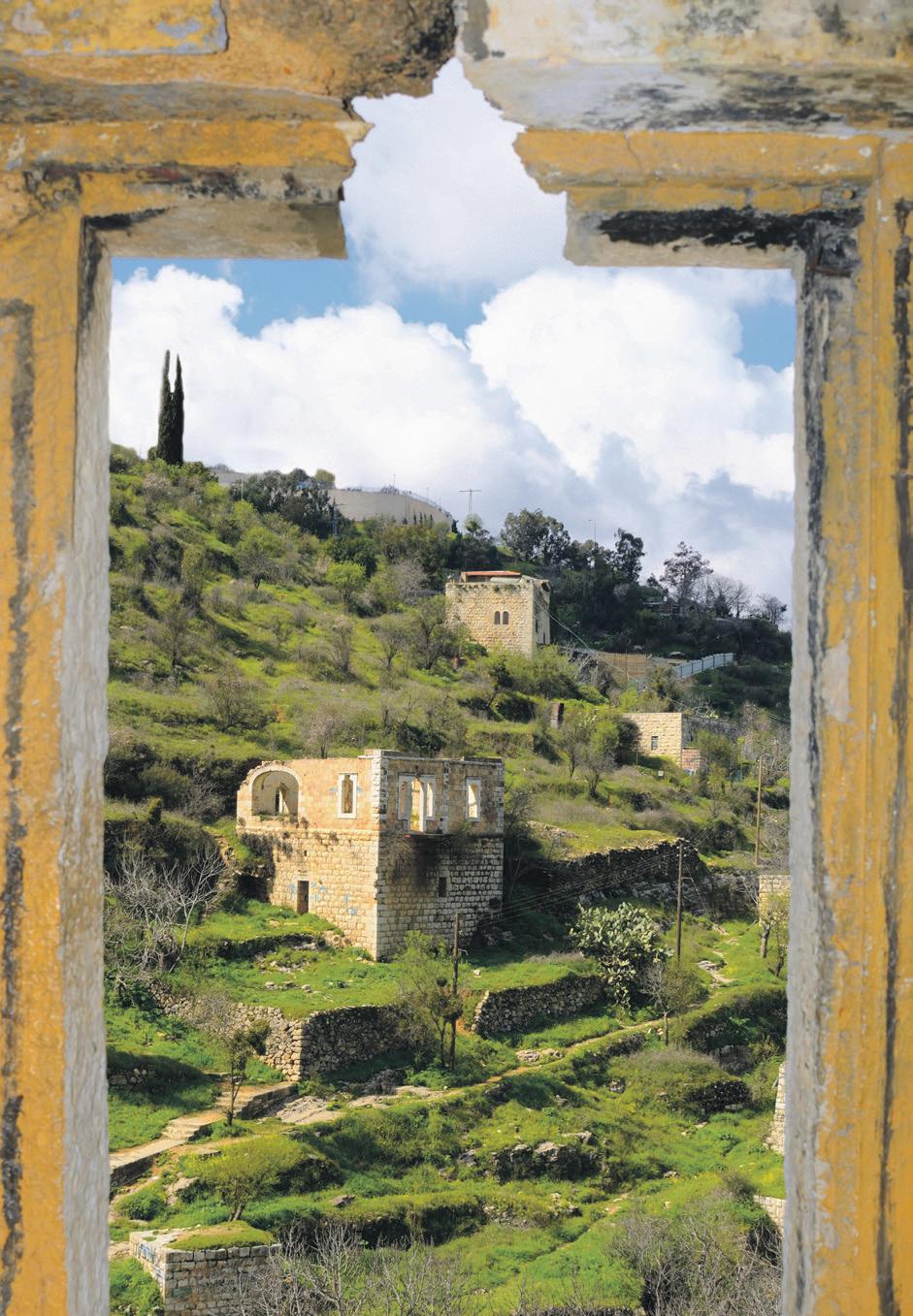
‘Are you all right?’ asked Leyla. She seemed concerned.
‘Yes, thank you.’
I had left my sunglasses in the car. I had expected us to be having tea in the dining room. I had forgotten Madame’s insistence that tea and coffee be taken on the terrace.
I helped myself to a piece of toast and considered the preserves. The quince, perhaps? Leyla was deliberating over the cakes.
‘The apple and ginger is good,’ I said, pointing to it.
She took it, rather surprising me, since she seemed to be in a contrary mood. I took a spoonful of the quince jam and transferred it to the edge of my plate. I spread a little butter on the toast and added a topping of quince jam. I waited for a few seconds in anticipation, then took a bite from the corner of the toast.
It was like eating cardboard. Cardboard spread with something disgustingly sweet. It was all I could do not to spit it out. Like a drowning man I reached for my tea. It was hot, and that was about all that could be said for it.
I sat back, conscious that my breathing was rather laboured. Blast the sun, which was too fierce. Blast Madame, who was so finicky about what was eaten where. I drank more of the tasteless tea. I shouldn’t have ordered Darjeeling. But then, I remembered, Madame only offered Darjeeling: that and a range of herbal teas that I found insipid.
A feeling of exasperation swept over me. The restaurant was too grand by half, the fuss about having tea and coffee on the terrace was ridiculous, the establishment was run along rigid lines by a matriarch who brooked no challenge to her authority: the little waitress looked terrified. On top of everything, the jam was too sweet.
I was horrified by these thoughts. To dispel them, I took a spoonful of greengage jam and put it straight into my mouth. It was disgusting.
I poured more tea and gulped it. I could feel sweat springing out on my forehead. I needed to get out of the sun.
‘Max, are you sure you’re all right?’
‘I’m perfectly fine,’ I said. ‘How is your cake?’
Perhaps, I thought, someone else was doing the cooking. But I knew they were not. She would not allow it.
‘It’s quite nice,’ said Leyla.
Savagely, I took a cake from the stand and bit into it. It was a confection of scent and sugar. I took another. It was the same. I took a spoonful of strawberry jam.
‘Max, I think we ought to go.’
‘In a minute,’ I said, and swallowed the jam. I have always hated strawberry jam. When I was a child I suffered from migraines and my mother would crush an aspirin into a spoonful of strawberry jam as a remedy. I have loathed it ever since.
A tightness I had not felt for thirty years was gathering above my eyes.
Anita Mason

In this political ghost story, Anita Mason plays with the ambiguities torturing a museum curator whose certainties unravel as he wakes up to the true nature of the society he lives in. Tightly written and wry in its delivery, the book asks disturbing questions about identity (both personal and historical), about repression and how we justify it, about manipulation, and about the nature of time in a country in which the past keeps the present captive

Anita Mason is an English author and former Booker Prize nominee. She has published eight novels, including The Illusionist (1983), The Racket (1990) and The Right Hand of the Sun (2008), as well as short stories and journalism. Her first novel, Bethany, was published by Hamish Hamilton in 1981. Her novels range widely in subject matter but have in common an interest in the ideas behind alternative communities, the corruptions of power and the way the past shapes the present
Subscribe to Booklaunch now!
Special autumn offer: 30% off www.booklaunch.london/subscribe
From the same author
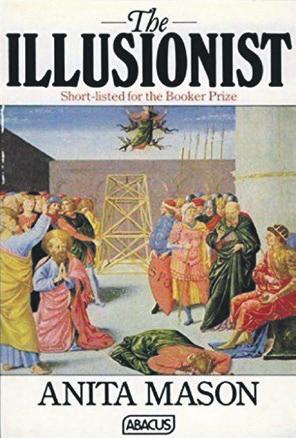
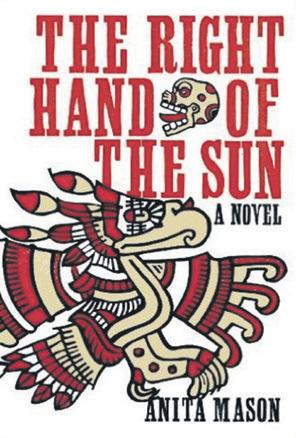
Suppose
This extract comes from the start of the book
continued in the book
…
CONTEMPORARY FICTION | ISSUE 5 | PAGE 23
Photo by Sean Pavone / Shutterstock
Booklaunch
Booklaunch Literary Challenge No.4 “Relay Race”
Booklaunch Literary Challenge
A favourite game in our family involves making up name chains where the last surname becomes the next first name, thus Upton Sinclair Lewis Carroll Nye Bevan … or Leslie Stephen King Charles Kingsley Amis. I challenge you to produce the longest string, using famous names— or, if you prefer, literary works (This Side of Paradise Lost Horizon …). Want a harder challenge? Why not limit yourself to only male or only female writers, or see if your chain can lead back to where you started. to line and supplying your postal address, so we can send you a prize. Winning entries will be published.
Making reading a pleasure again
Amazing new technology ultra high-definition lamp giving a crisp contrast only seen when reading in full sunlight. Seeing is believing.
If you struggle to see print clearly, then this is what you need: the ultra high-definition Toby Lamp, enabling the user to see blacker print and whiter backgrounds. It’s like having a new pair of eyes.
Making Reading A Pleasure Again
Last issue’s winners: No.3 “Last Brexit to Ooklyn” Well, this was fun. I asked you to choose two literary characters to debate the benefits of Brexit. First out of the slips was Catherine Miller from Wantage who opened ent line, “Colonel Tusk continued as grave as ever, and Mrs May, unable to prevail on him to make any offer himself, nor commission her to make one for him, began to think that, instead of Midsummer, they would not be divorced till Michaelmas.” Angela Broughton in Ipswich offered a song rather than a conversation:
Amazing new technology ultra high de nition giving a contrast only seen when reading in full sunlight. seeing is believing
The Craftlight Company is a British family-run business, established for over 40 years, designing quality reading lamps at everyday prices.
I’d like to have included all of Simon Fifield’s rewriting of Sheridan’s an old country marries lots of young ones, what is he to expect? ’Tis now 40 years since Lady Union made me the happiest of nations—and I have been the most miserable dog ever since! …) but length prevents. I liked Jancis Tye’s exchange between David Davis and Nigel Farrage in Harold Pinter’s

Most of our floorlamps can be converted into table lamps. Very flexible at 1.5 metres high, they give off very little heat and only consume 6 watts. Construction is all metal.

you struggle to see print clearly then this what you need. The reader ultra high de nition reading oor lamp, enabling the user see blacker print and a whiter background. It’s like having new pair of eyes.
not one. All them Greeks had it, Poles, Latvians, the lot of them, all them aliens had it. They had my share of adjusted VAT receipts and customs tariffs but I couldn’t find a seat.
Farrage: You’ve spent too long there. (Sits on the bed, takes out a Class II banana with non-regulation curvature, and starts eating it.)

To order go to craftlights.co.uk then look under newspaper and magazine offers to get the discounted offer prices, or call 01502 587598 to get help and advice.

The Craftlight Company is a British family run business established for over 40 years, designing quality reading lamps at everyday prices. Most of our oorlamps can be converted to a table lamp as well. Very exible 1.5 Mtr high giving o very little heat and only consuming 6watt. All metal construction.
Congratulations to all. But my prize goes to Geoffrey Locke in Stoke-on-Trent who got it bang on—and brief, too: “Brexit?” asked Christian. “Why, from the delectable mountains I saw the gates of the Celestial City.” “But before us lies the Valley of Humiliation!’ cried Faintheart”—and he got out of the mire on that side of the swamp which was next to his own house.
Prices start at £59.95 for floorlamps



They Called Us Enemy George Takei IDW Publishing ISBN: 9781603094504
RRP: £17.99
A stunning graphic memoir recounting the childhood imprisonment of actor, author and activist George Takei within American concentration camps during World War II
The Big Hippo Guide to Democracy, Referendums, Elections (and all that)
Martin Rowson and Bob Marshall Andrews
Everything with Words
Publication July 25, 2019

Paperback, ISBN 9781911427124, RRP £8.99
The hilarious joint creation of Bob Marshall Andrews, author, barrister, former Labour MP for Medway, thorn in Tony Blair’s side and guest on Have I Got News for You, and multi-award-winning cartoonist, author, illustrator, writer and poet Martin Rowson. Just what you need in Brexit Britain to keep your flag flying and madness at bay
FERNSBY HALL TAPESTRIES


Size Really Does Matter: The Nanotechnology
Revolution
Colm Durkan
The End of Online Shopping

Wijnand Jongen
Tapestry kits produced
World Scientific Publishing
Order go to www.craftlights.co.uk under newspaper and magazine o ers to get the discounted o er prices, or call to order or get help and advice.
ISBN: 9781786346612
RRP: £38.00
The science and history of nanotechnology, followed by reallife examples of how it is used
World Scientific Publishing
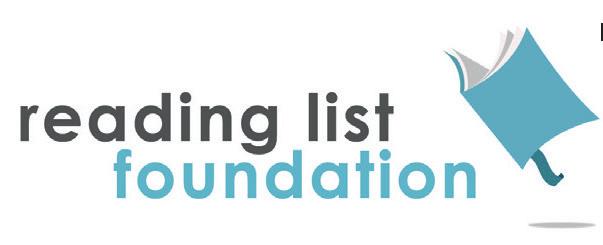
ISBN: 9789813274761
RRP: £20.00
How the smart, sharing, circular, and platform economies are shaping a new era of alwaysconnected retail
We are not available in most bookshops or newsagents. To be sure of getting Booklaunch by post go to our website
To buy any of the books advertisted on this page, go to www.booklaunch.london and click on BOOKSHOP or point your smartphone here. All prices include free UK delivery.

£59.95 The Craftlight Company www.craftlights.co.uk Better By Design. The Reader Floorlamp 1.5 mtr o er £69.95 inc p+p
The Toby Floorlamp 1.5 mtr on offer at £69.95 inc p+p
from the original
www.fernsbyhall.com Tel: 01279 777795
by Diana Fernsby
paintings of Catriona Hall. Kits from £55 Kits@fernsbyhall.com
Circulation 50,000+ This issue only: free to UK subscribers of selected magazines, to the book trade, to libraries and book clubs, to publishers and agents, to the media and to UK literary festivals For multiple copies for your books event, please email subs@booklaunch.london Social media and distribution volunteers, please email
editor@booklaunch.london
in
We are not available
bookshops or newsagents. To be sure of getting Booklaunch by post go to our website www.booklaunch.london and click on SUBSCRIBE
booklaunch.london @booklaunch_ldn
SUBSCRIBE
www.booklaunch.london and click on
 Tianjin (Tientsin) Library, China (2017), by Dutch architects MVRDV.
Photo by Alex Fradkin
Tianjin (Tientsin) Library, China (2017), by Dutch architects MVRDV.
Photo by Alex Fradkin











































 Pavilion Books (London), 512pp, Hardback, 9781911595748, 240mm x 254mm, colour illustrations throughout, September 2019, RRP £35.00
Pavilion Books (London), 512pp, Hardback, 9781911595748, 240mm x 254mm, colour illustrations throughout, September 2019, RRP £35.00


































 The Top 500 Experiences in the UK … Ranked Lonely Planet (London), 320pp, Hardback, 9781788686402, 165mm x 210 mm, 356 col. illustrations, August 2019, RRP £19.99
The Top 500 Experiences in the UK … Ranked Lonely Planet (London), 320pp, Hardback, 9781788686402, 165mm x 210 mm, 356 col. illustrations, August 2019, RRP £19.99




























